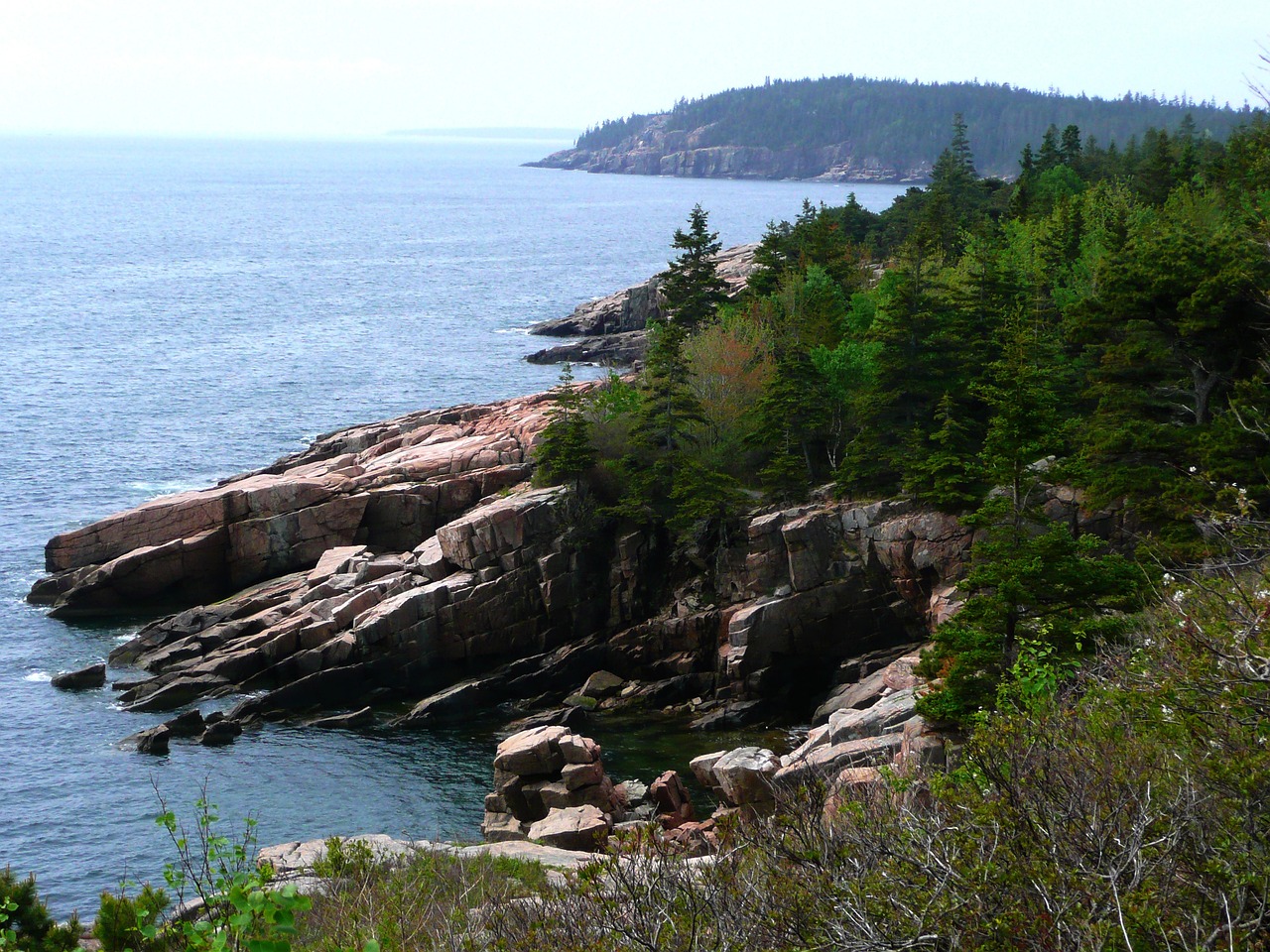
Acadia National Park
Nestled on the rugged coast of Maine, Acadia National Park is a gem where the forest meets the sea. It sprawls across a patchwork of islands, including much of Mount Desert Island, encapsulating the raw beauty of the North Atlantic. Famed for Cadillac Mountain, the highest point along the eastern coast of the United States, Acadia is a haven of biodiversity. It boasts a varied landscape of rocky beaches, dense woodland areas, and sparkling lakes. Visitors are treated to a tapestry of ecosystems, from marshy wetlands to craggy cliffs. Amid these natural treasures, the park preserves the harmonious blend of land and water, inviting endless explorations of its serene trails, historic carriage roads, and breathtaking vistas.
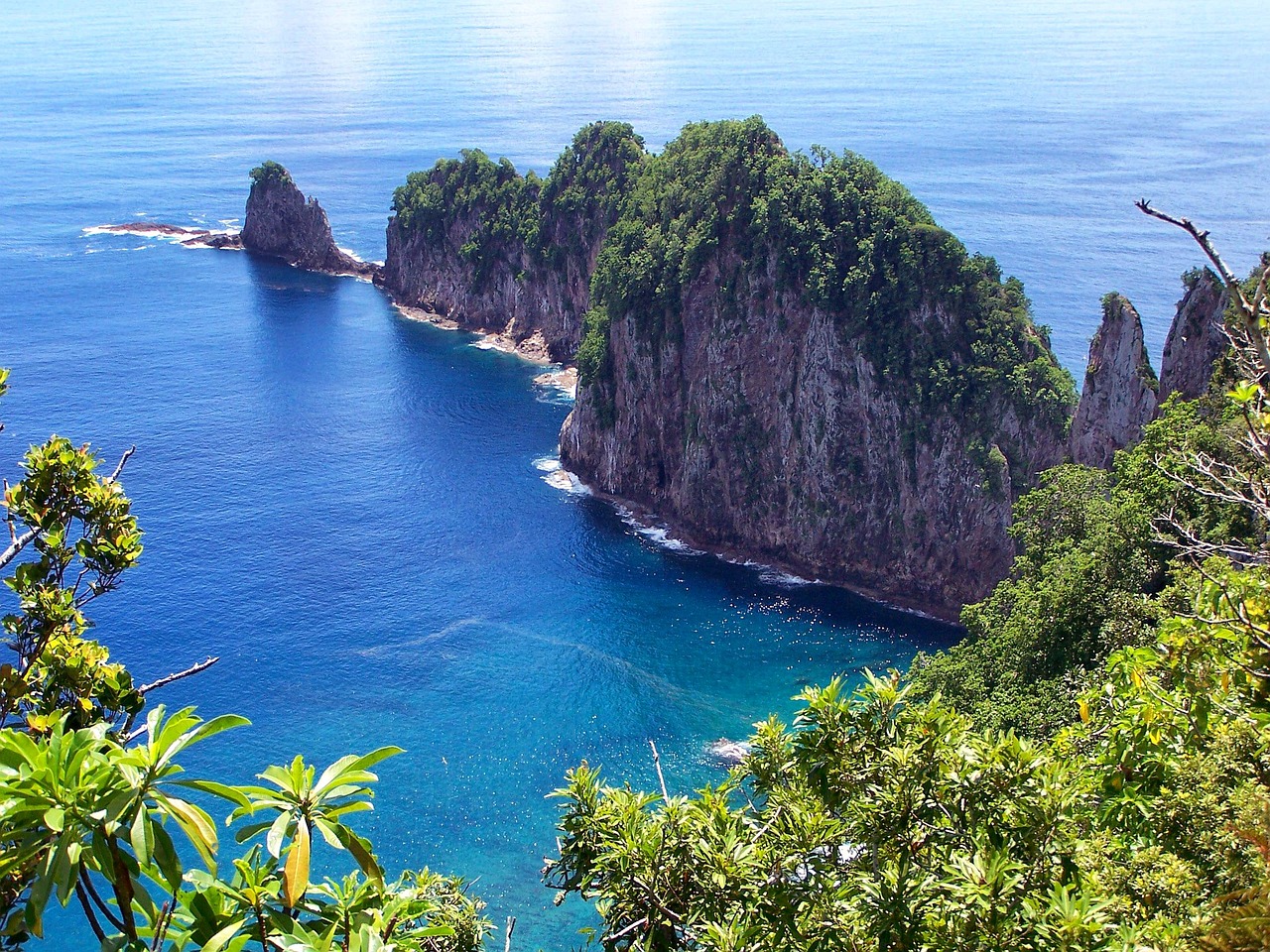
American Samoa National Park
Encompassing sections of three islands in the South Pacific, American Samoa National Park is a stunning showcase of tropical rainforests, pristine beaches, and coral reefs. It shelters the only U.S. park south of the equator, featuring rugged volcanic peaks, deep valleys, and the untouched beauty of the Samoan culture. The park provides habitats for diverse marine life in its coral reefs, tropical rainforests that are home to fruit bats and colorful birds, and immaculate coastlines that offer serene landscapes. This equatorial paradise invites exploration of its lush ecosystems, cultural heritage, and the tranquil harmony between humanity and nature.
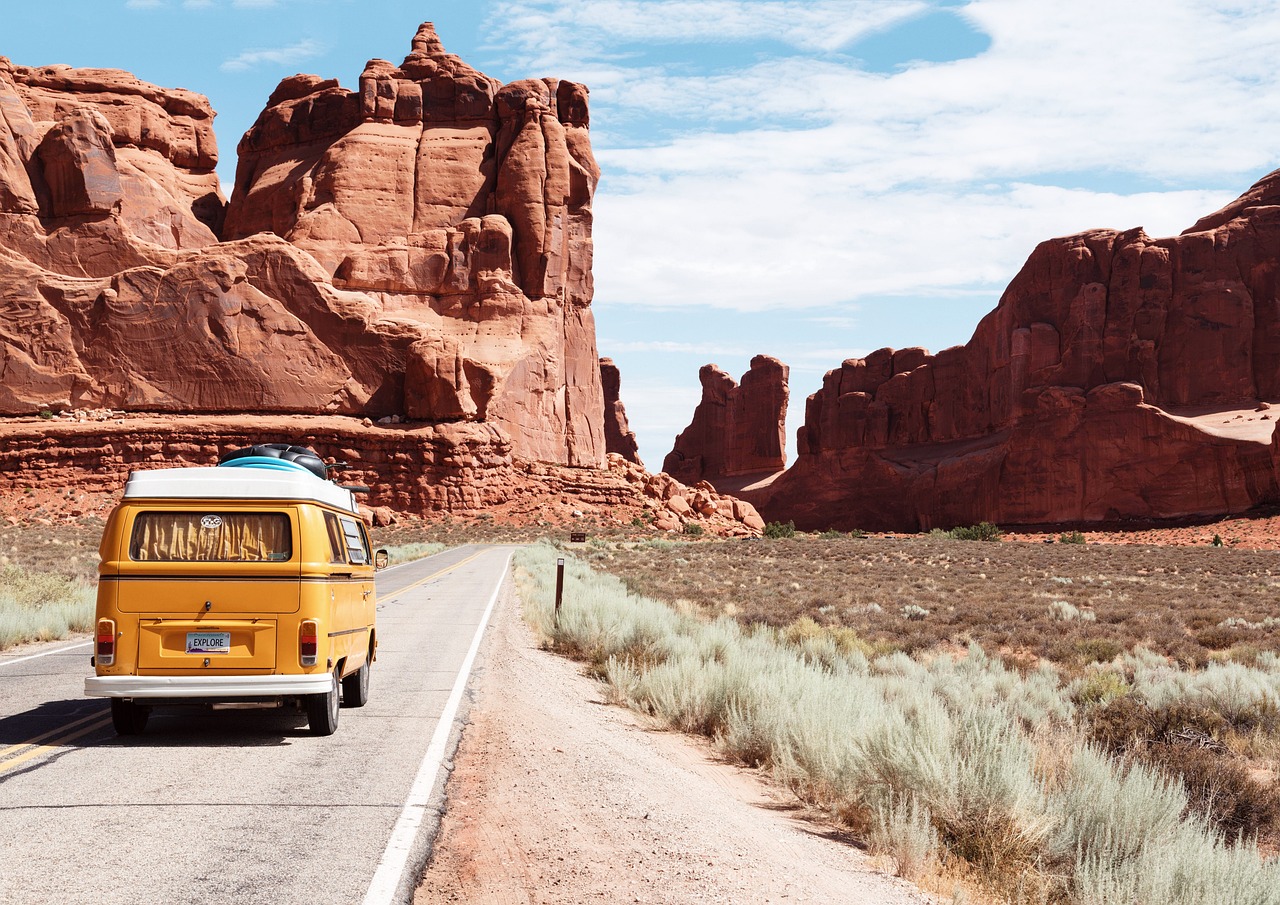
Arches National Park
Tucked away in the high desert of Utah, Arches National Park presents a surreal landscape of red rock formations sculpted by the forces of nature over millions of years. Home to over 2,000 natural sandstone arches, towering pinnacles, and balanced rocks, this iconic park offers a breathtaking showcase of geological wonders. Visitors can marvel at the fiery hues of sunrise and sunset illuminating the rugged terrain, hike through labyrinthine canyons, or simply gaze in awe at the delicate arches framing the expansive desert sky.
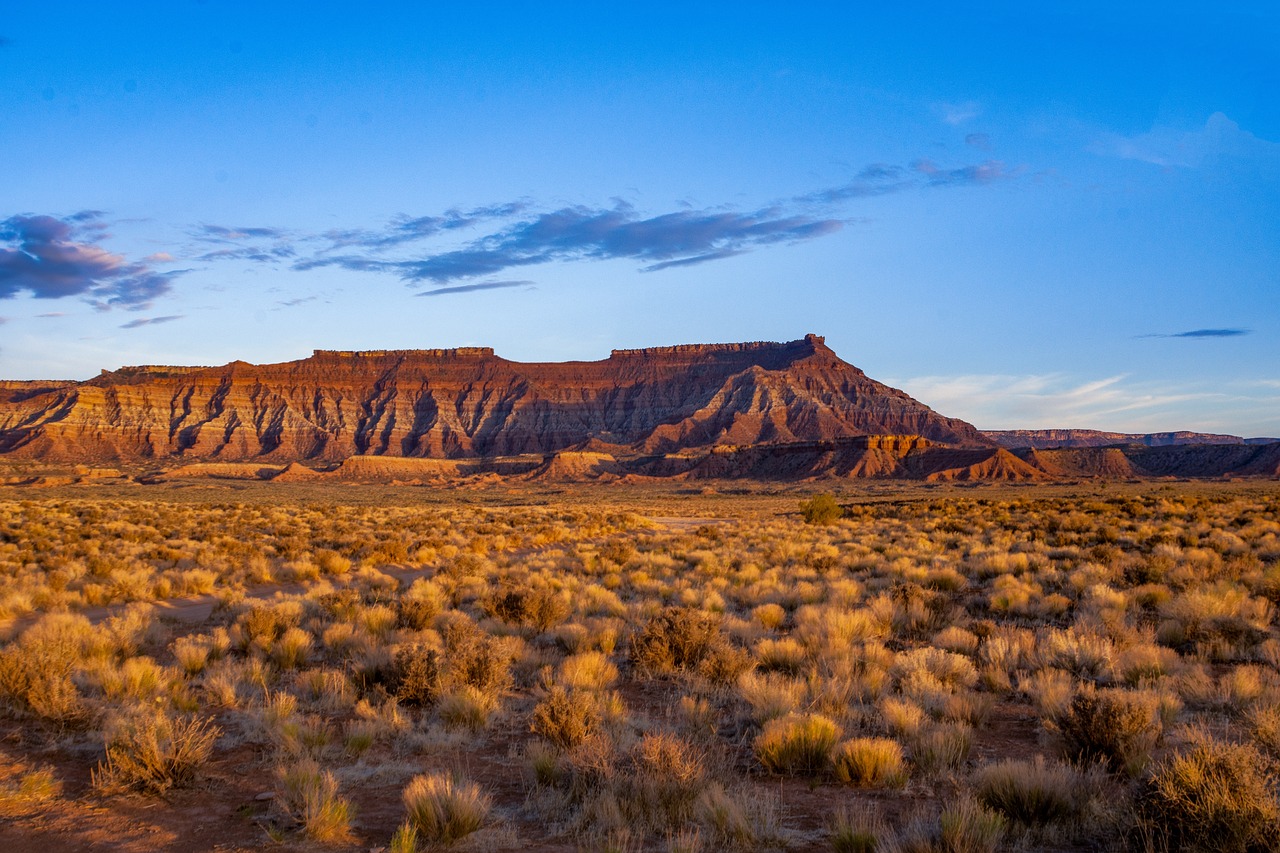
Badlands National Park
In the heart of the Great Plains, Badlands National Park emerges as a rugged testament to the forces of erosion. Carved over millennia by wind and water, its dramatic landscape of jagged peaks, deep canyons, and expansive prairies offers a glimpse into the ancient history of our planet. Here, fossil-rich layers reveal the stories of prehistoric creatures that once roamed the land, while the stark beauty of the Badlands captivates visitors with its raw and untamed allure. Hiking trails wind through surreal rock formations, offering breathtaking vistas of endless horizons and vibrant sunsets that paint the sky in hues of orange and pink.
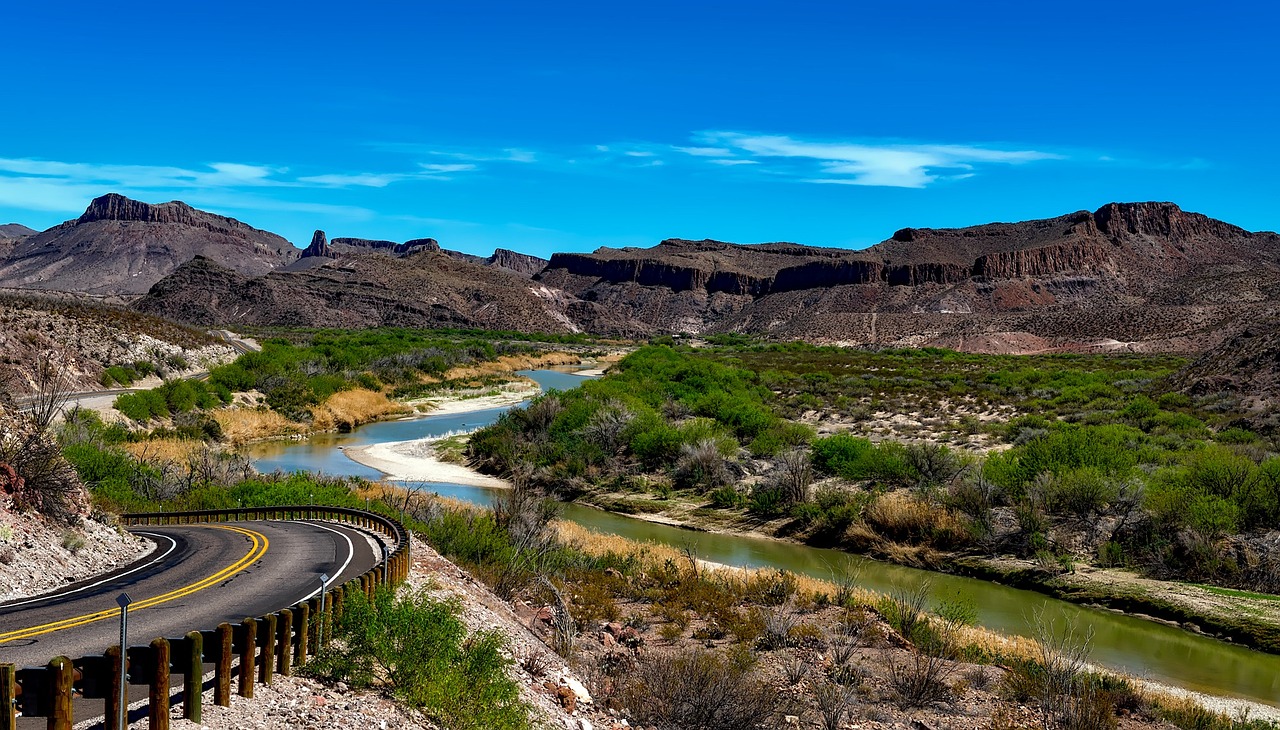
Big Bend National Park
In the remote wilderness of southwest Texas, Big Bend National Park beckons with its vast expanse of rugged desert landscapes and untamed beauty. Nestled along the Rio Grande, this sprawling park encompasses a diverse array of ecosystems, from towering mountain peaks to lush river valleys and expansive desert vistas. Here, the rugged terrain is a playground for adventurers, offering opportunities for hiking, camping, and exploring amidst towering canyon walls and hidden oases. Visitors can marvel at the star-filled skies, undisturbed by city lights, or embark on a scenic drive along winding roads that offer panoramic views of the Chihuahuan Desert and the rugged Chisos Mountains. With its remote location and unspoiled wilderness, Big Bend National Park is a haven for nature enthusiasts seeking solace and adventure in the heart of the American Southwest.
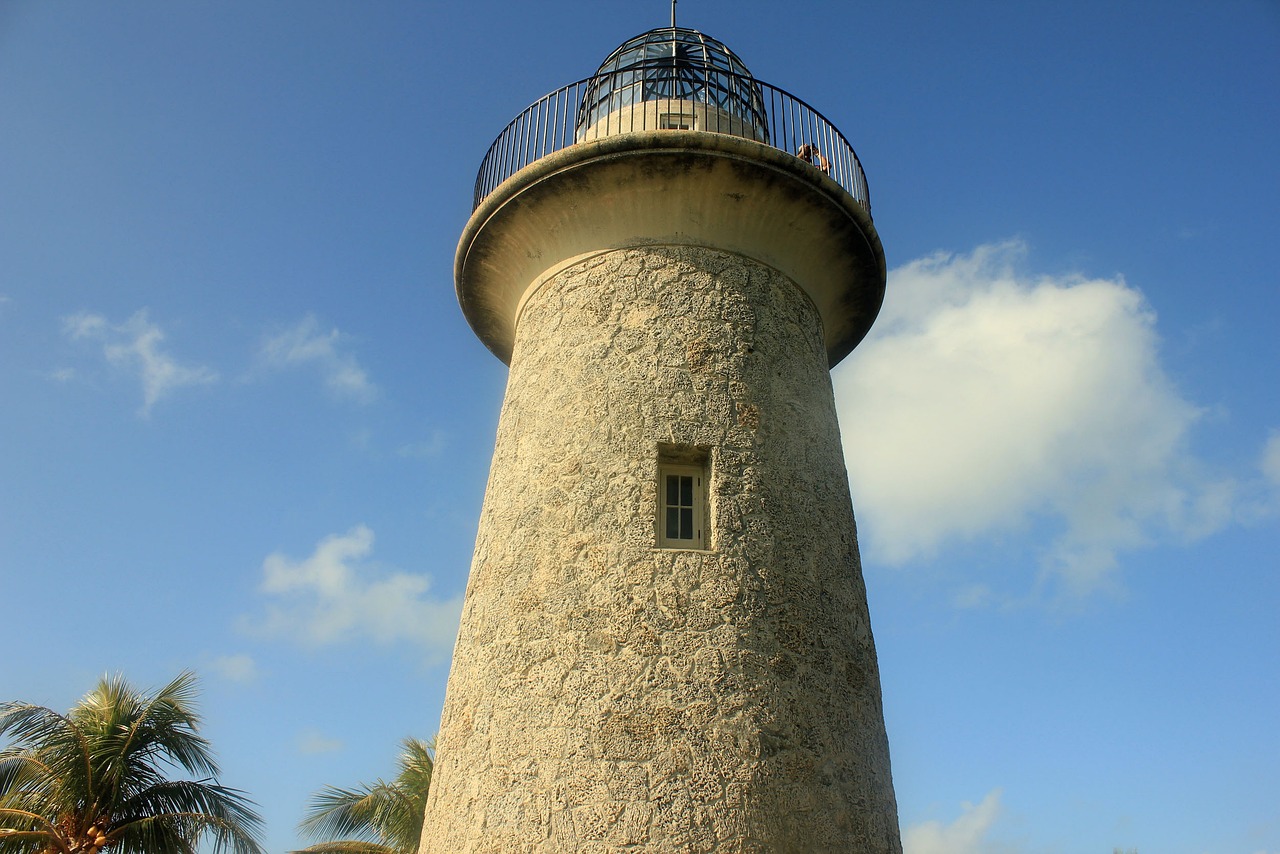
Biscayne National Park
Biscayne National Park, located just south of Miami, Florida, is a coastal paradise teeming with life both above and below the water's surface. Encompassing crystal-clear waters, vibrant coral reefs, and lush mangrove forests, this unique park offers a sanctuary for a dazzling array of marine species. Visitors can explore underwater wonders while snorkeling or diving among colorful coral formations and tropical fish, or kayak through mangrove creeks, spotting herons, manatees, and other coastal wildlife along the way. Above the surface, pristine islands and sandy beaches beckon, providing opportunities for relaxation and exploration amidst stunning coastal scenery. With its rich biodiversity and stunning natural beauty, Biscayne National Park offers a refreshing escape into the wonders of the ocean, right on the doorstep of one of America's most vibrant cities.

Black Canyon of the Gunnison National Park
Carved over millions of years by the powerful currents of the Gunnison River, Black Canyon of the Gunnison National Park stands as a testament to the raw forces of nature. Located in western Colorado, this breathtaking gorge boasts sheer cliffs plunging thousands of feet to the river below, creating one of the deepest and most dramatic canyons in North America. Visitors can marvel at the sheer magnitude of the canyon walls, which cast shadows that deepen the canyon's dark allure, earning it the name "Black Canyon." Hiking trails lead adventurers along the rim, offering panoramic vistas of the rugged landscape, while more intrepid explorers can descend into the depths of the canyon, navigating steep and challenging routes to the river's edge.
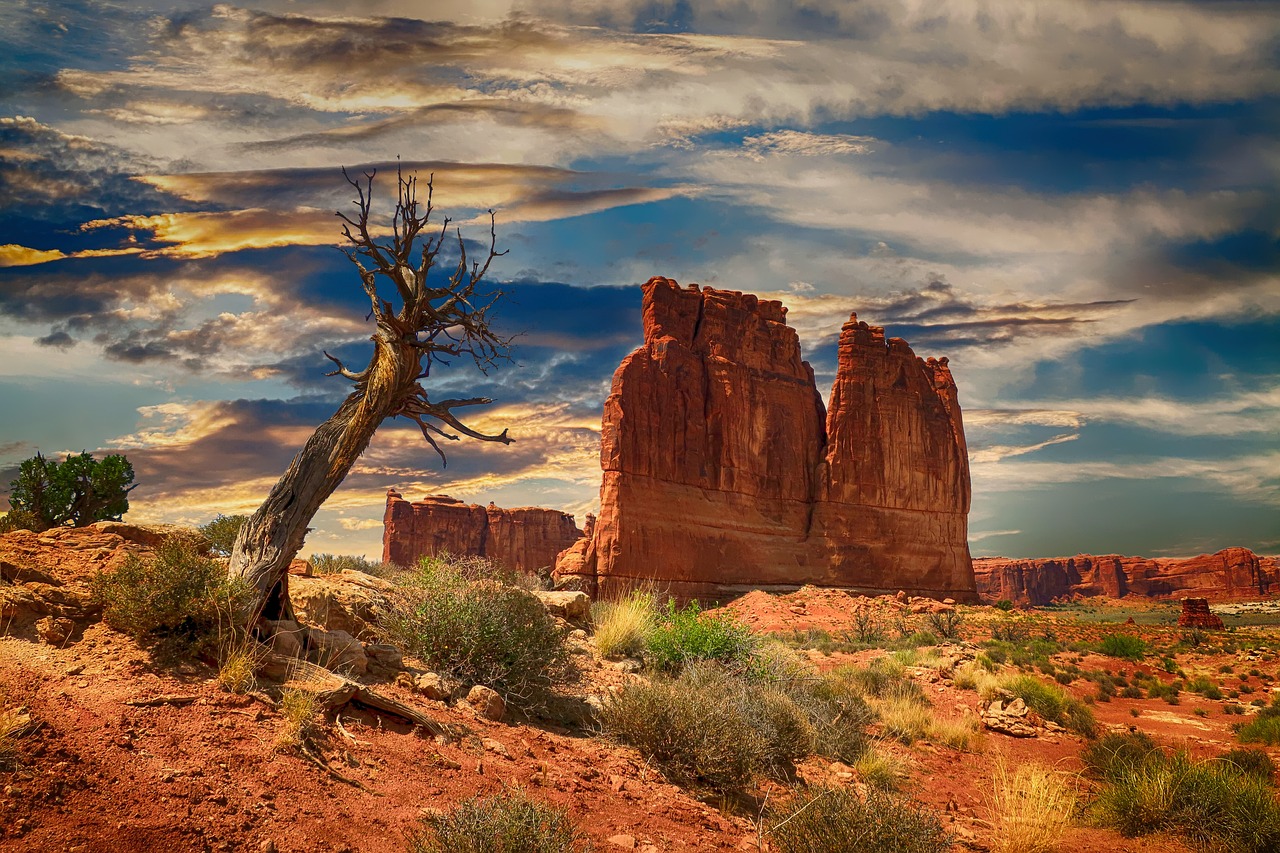
Bryce Canyon National Park
Bryce Canyon National Park, situated in southern Utah, is an amphitheater of geological wonder. Unlike any other, it is known for its hoodoos—towering, spire-shaped rock formations created by frost weathering and stream erosion. The park's landscape is a kaleidoscope of color, with red, orange, and white hues dominating the panoramic vistas. Spanning across high plateau country, Bryce Canyon offers a unique series of natural amphitheaters and bowls, carved into the edge of a high plateau. The park's altitude varies dramatically, providing diverse environments from dense forests to sprawling meadows, home to a wide range of flora and fauna. With its dazzling array of natural sculptures, serene pine forests, and clear, dark skies perfect for stargazing, Bryce Canyon National Park invites visitors to immerse themselves in its otherworldly beauty and tranquility.
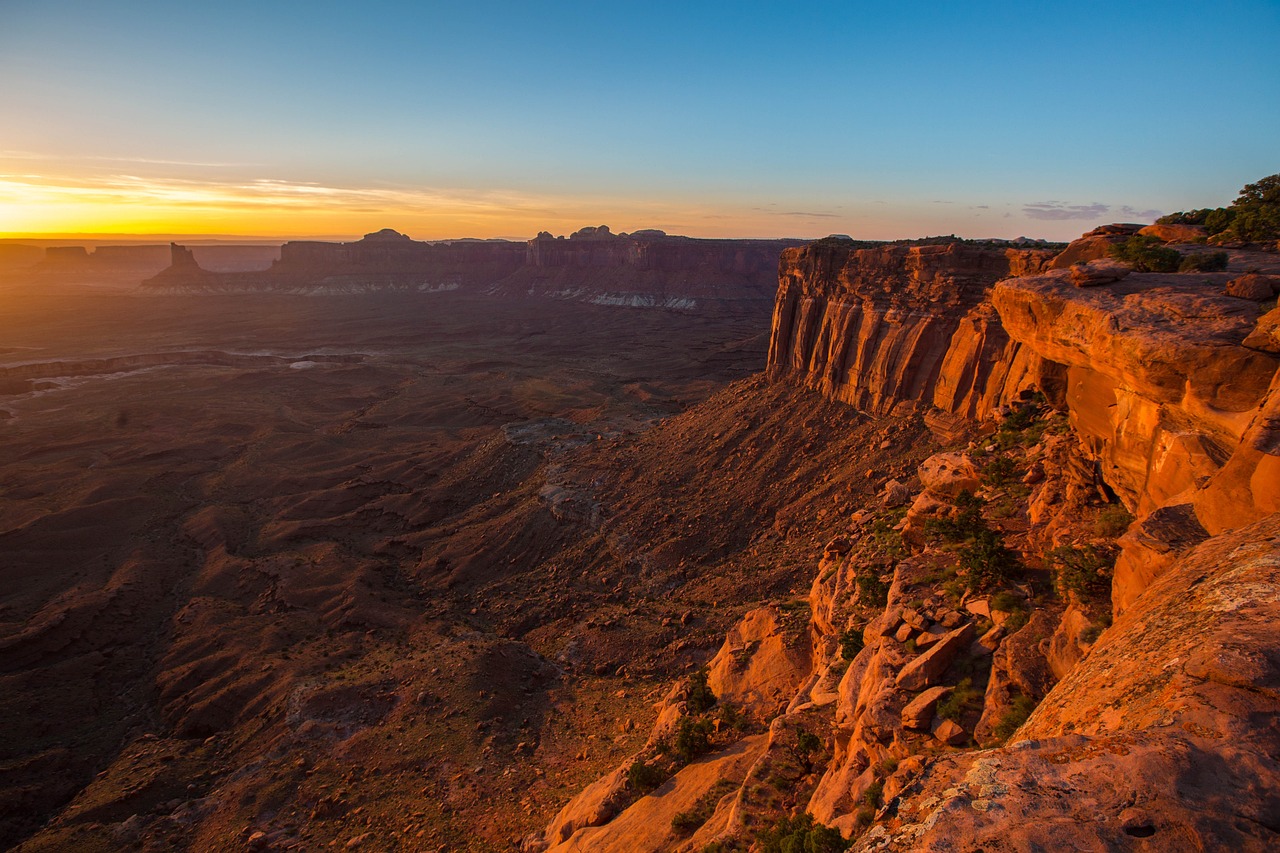
Canyonlands National Park
Canyonlands National Park, carved by the Colorado River and its tributaries, reveals the raw power of water and time. Situated in southeastern Utah, this sprawling park is divided into four distinct districts: Island in the Sky, The Needles, The Maze, and the rivers themselves, each offering its own unique adventure and geological spectacle. Island in the Sky sits atop a massive mesa, presenting sweeping vistas over the sprawling canyons below, while The Needles district is characterized by its colorful spires of Cedar Mesa Sandstone that jut up from the ground like ancient earthbound stars. The Maze, known for its labyrinthine canyons, is one of the most remote and challenging areas to explore in the United States, offering unparalleled solitude and backcountry adventure. The confluence of the Colorado and Green Rivers cuts through the heart of the park, shaping the landscape and serving as a critical lifeline for the area's flora and fauna. Petroglyphs etched into rock faces by ancient Native American cultures add a layer of human history to this stark and natural canvas. Canyonlands is not only a testament to the natural forces that shape our world but also a sanctuary for those seeking the thrill of exploration, the beauty of untouched nature, and the quiet that comes with grand, open spaces.
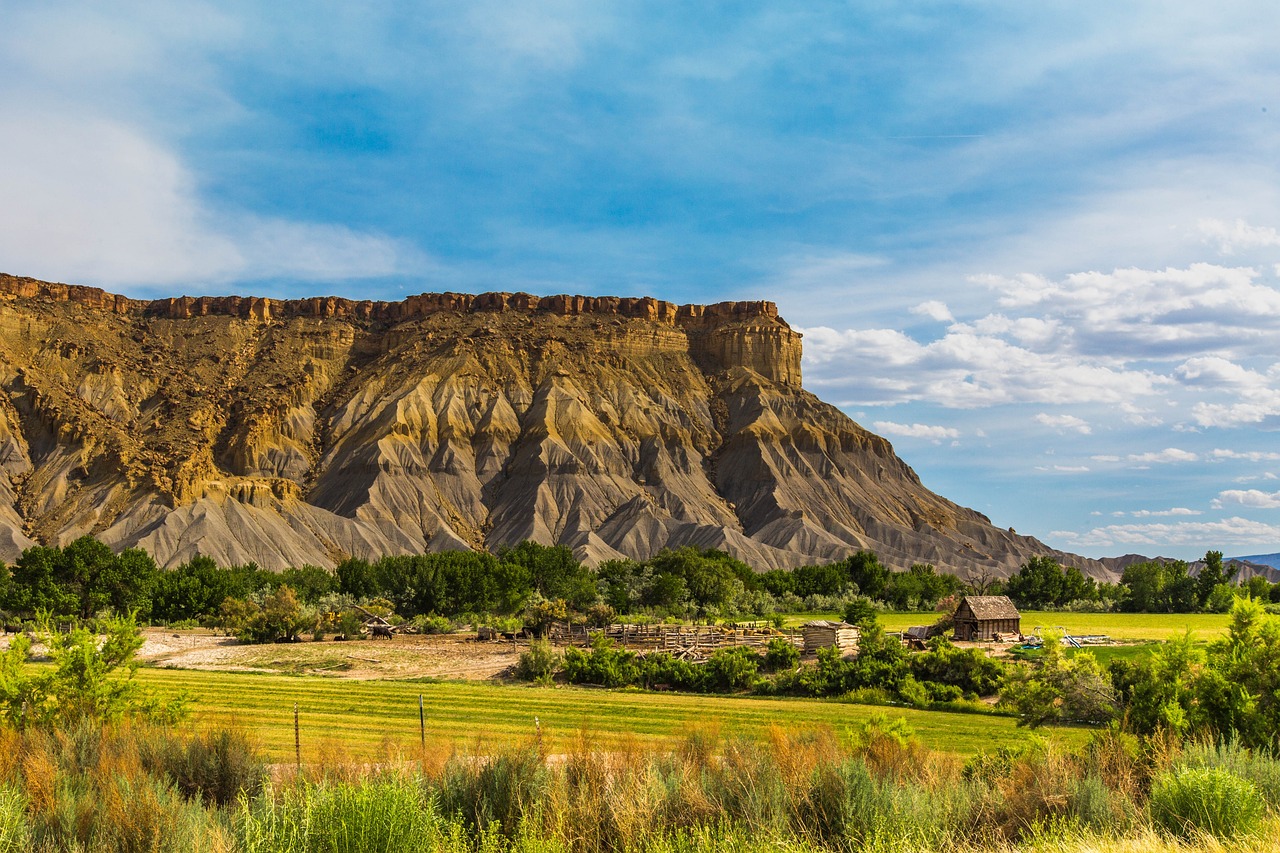
Capitol Reef National Park
Spanning over the unique Waterpocket Fold, a geological wrinkle on the earth extending almost 100 miles, Capitol Reef National Park in south-central Utah is a hidden treasure of cliffs, canyons, domes, and bridges in the heart of red rock country. This park preserves the towering monoliths, intricate canyons, and the lush valleys of the Fremont River, painting a breathtaking landscape unlike any other. With elevations ranging from 3,800 to 8,700 feet, it harbors a diverse array of habitats, including desert flora, riparian areas along the river, and pinyon-juniper woodlands. Visitors can explore the remnants of ancient Fremont Culture petroglyphs, pioneer inscriptions, and the historic Fruita orchards, where fruit trees continue to be cultivated.
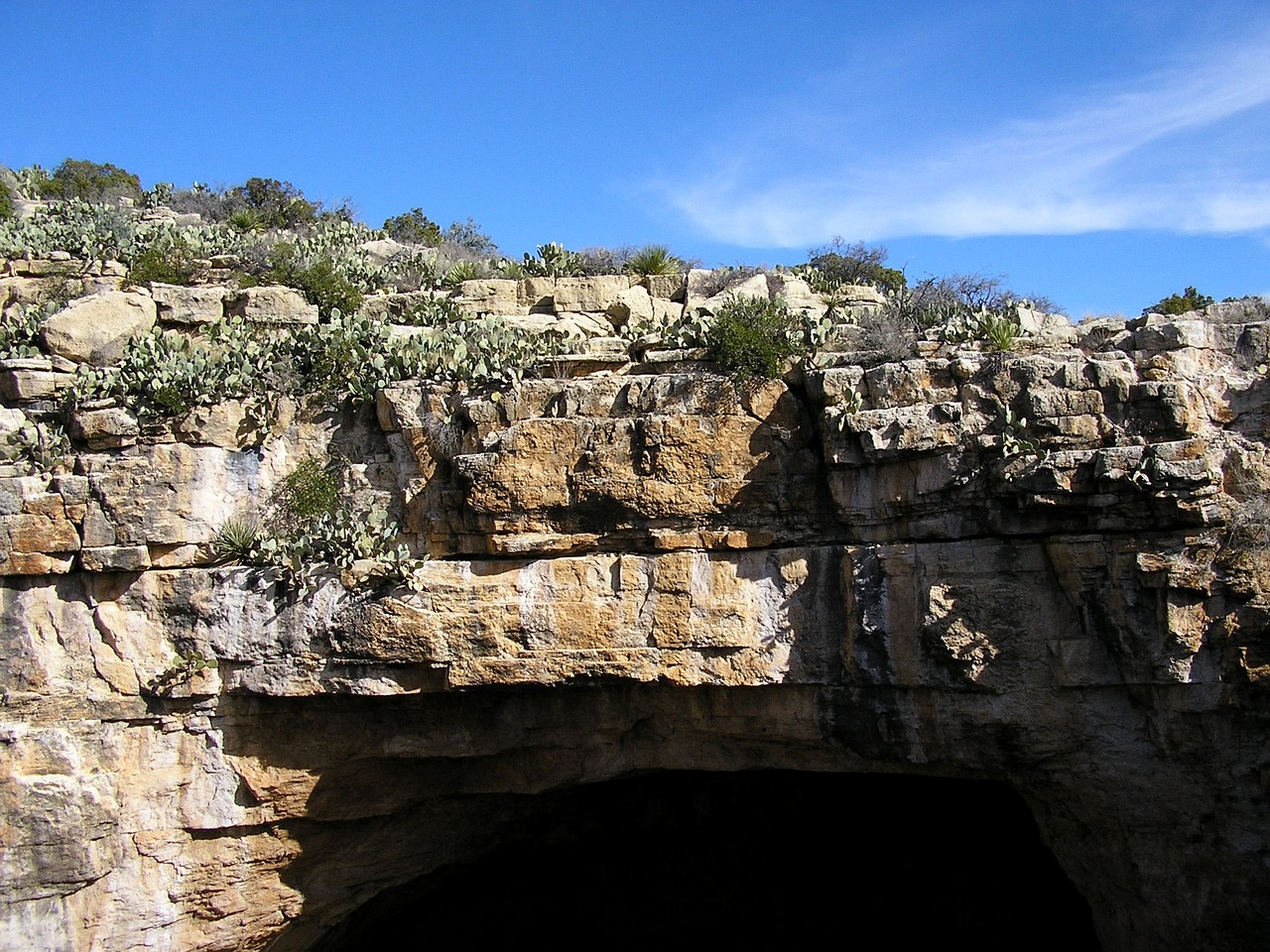
Carlsbad Caverns National Park
Nestled in the heart of the Chihuahuan Desert in southeastern New Mexico, Carlsbad Caverns National Park is a subterranean wonderland. It features over 119 known caves, including the magnificent Carlsbad Cavern, with its vast underground chambers and intricate formations. These caves were formed when sulfuric acid dissolved the surrounding limestone, creating expansive rooms and surrealistic speleotropes such as stalactites, stalagmites, and helictites. The park's most famous chamber, the Big Room, is one of the largest natural limestone chambers in the world, offering visitors a breathtaking underground experience. Above ground, the park spans across the desert landscape, featuring deep rocky canyons, high ancient sea ledges, and unique flora and fauna adapted to this rugged environment. In the evening, visitors can witness the spectacular exodus of Brazilian free-tailed bats from the cavern's entrance, a natural phenomenon occurring seasonally from late spring to early fall. Carlsbad Caverns National Park also plays a crucial role in scientific research, offering insights into speleothem formations, underground ecosystems, and the geological history of the region. With its combination of above- and below-ground marvels, Carlsbad Caverns offers a unique adventure into the hidden depths of the earth, capturing the imagination of all who venture here.
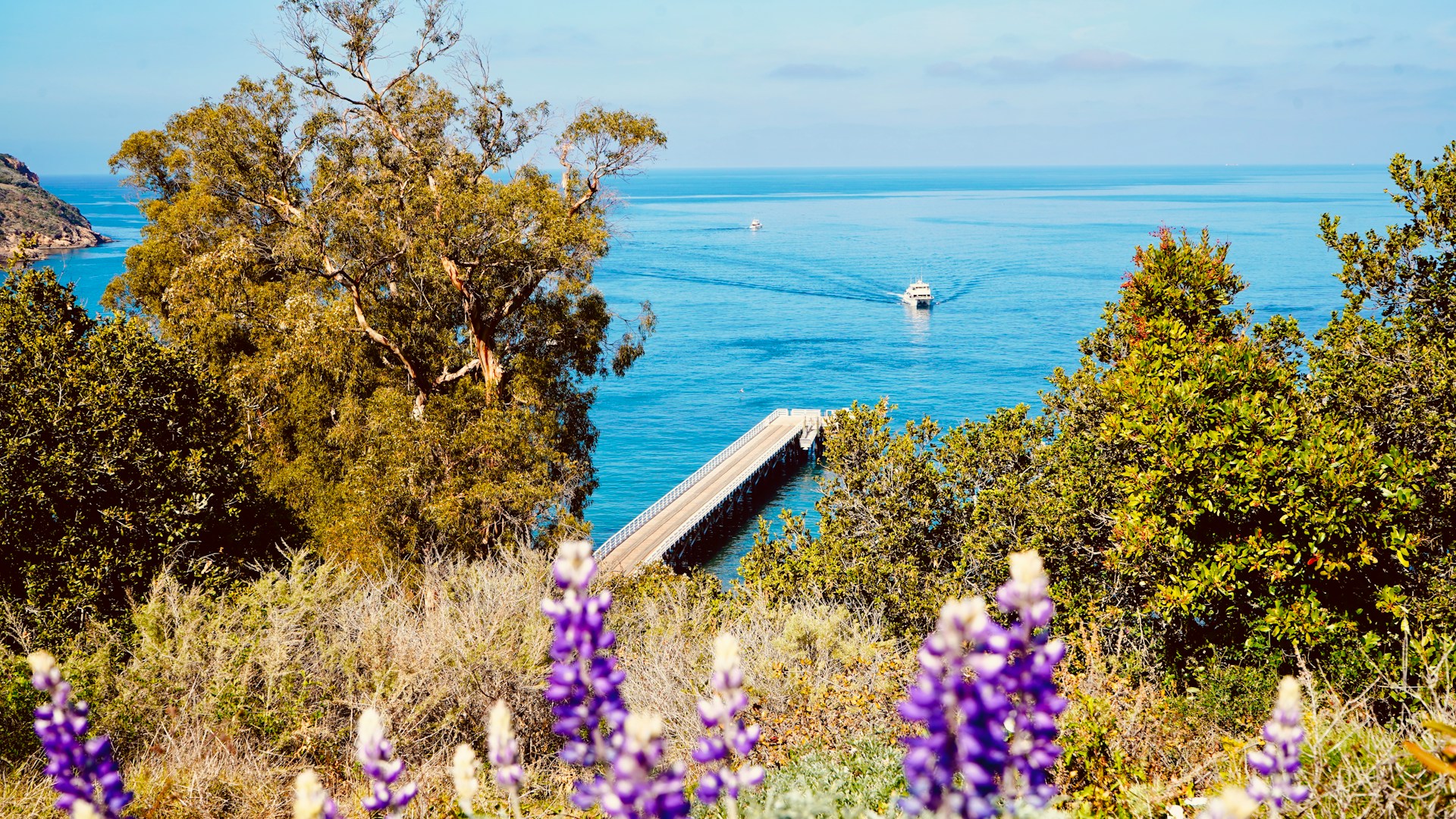
Channel Islands National Park
Located off the coast of Southern California, Channel Islands National Park encompasses five remarkable islands - Anacapa, Santa Cruz, Santa Rosa, San Miguel, and Santa Barbara - along with the ocean environment surrounding them. Isolated from the mainland for thousands of years, these islands preserve a unique array of natural and cultural resources. The park features rugged coastlines, steep cliffs, and secluded beaches, creating a haven for a wide variety of plant and animal species, many of which are found nowhere else on Earth. This isolation has allowed the evolution of more than 145 endemic or unique species, including the diminutive island fox. Channel Islands National Park offers a wide range of outdoor activities such as hiking, snorkeling, kayaking, diving, and camping, providing visitors with the opportunity to explore its natural beauty and rich biodiversity. The islands' marine sanctuary is a diver’s paradise, renowned for its kelp forests, sea caves, and vibrant marine life. Above the water's surface, the islands are home to important archaeological resources, including artifacts of the Chumash people who originally inhabited the islands and historical ranching and maritime sites. The park's isolated environment, combined with the diverse habitats ranging from lush kelp forests and sandy beaches to deep submarine canyons, makes it a vital area for scientific study and conservation. Channel Islands National Park serves as a living laboratory, offering insights into island ecology, conservation biology, and the impacts of climate change. An escape to these islands offers a unique blend of adventure, history, and solitude, providing an unparalleled opportunity to explore pristine natural landscapes and reflect on the forces that shape life on islands.

Congaree National Park
Nestled in the heart of South Carolina, Congaree National Park is a magnificent testament to the old-growth bottomland hardwood forest, one of the last remnants of its kind in the southeastern United States. This park preserves the largest tract of old growth bottomland hardwood forest left in the country, offering an unrivaled ecosystem rich in biodiversity and stunning landscapes. The Congaree River flows through the park, feeding the floodplain that cycles through periods of flood and drought, creating a dynamic and complex habitat. The park is renowned for its majestic canopy of towering trees, including some of the tallest in the Eastern United States. Among these are record-size specimens of oak, cypress, and pine, creating an awe-inspiring natural cathedral and supporting a diverse array of wildlife. Visitors to Congaree National Park can explore over 25 miles of hiking trails and a 2.4-mile boardwalk loop that meanders through the floodplain, offering immersive experiences in the rich biodiversity of the park. For those looking to see the park from a different perspective, paddling on the Congaree River provides a serene way to witness the beauty of the forest and its wildlife. Aside from its natural wonders, Congaree National Park serves as a valuable research site for scientists studying forest ecosystems, floodplains, and the complex interactions within them. The park's role in conservation and education is pivotal, offering programs and events designed to teach visitors about the importance of preserving natural habitats and the roles they play in our world. Whether through hiking, paddling, bird watching, or participating in one of the park's many ranger-led programs, Congaree National Park offers visitors a unique opportunity to connect with nature and experience the profound tranquility of the forest. It is a place of incredible beauty and ecological importance, inviting all who visit to explore, learn, and be inspired by the wonders of the natural world.

Crater Lake National Park
Crater Lake National Park, located in the southern part of Oregon, is a testament to the natural forces of creation and destruction. At its heart lies Crater Lake, the deepest lake in the United States, with a depth of 1,943 feet. Formed about 7,700 years ago by the collapse of the volcano Mount Mazama, the lake is renowned for its vivid blue color and water clarity. Surrounded by cliffs over 2,000 feet high, the lake is fed entirely by rain and snow, with no rivers flowing in or out. The park encompasses over 183,224 acres of pristine wilderness, including the lake itself, numerous hiking trails, and a diverse array of habitats. This environment supports a variety of species, such as the American black bear, Roosevelt elk, and the Mazama newt, an amphibian unique to Crater Lake. Above the water, the park's old-growth forests are home to species like the Douglas fir, whitebark pine, and mountain hemlock, creating a haven for birdwatchers with species such as the Clark's nutcracker and the pileated woodpecker. Geologically, Crater Lake National Park is a showcase of volcanic activity with features like the Pinnacles – spire-like formations created by erosion of volcanic ash – and the park's centerpiece, Wizard Island, a cinder cone rising from the lake's surface. These formations provide a captivating glimpse into the Earth's dynamic processes. The park's high elevation, reaching up to 8,929 feet at Mount Scott, the park's highest point, allows for dramatic winter snowfalls, transforming the landscape into a winter wonderland and offering unique seasonal activities like snowshoeing. Despite the cold, winter is an exceptional time to experience the tranquility and stark beauty of Crater Lake. For those interested in the cultural history, the park also contains important cultural sites for the Klamath Tribes, who regard the lake as a sacred site. Today, Crater Lake National Park serves not only as a place for recreation and awe but also as a site for scientific research, especially in the fields of limnology (the study of inland waters) and volcanic geology. Crater Lake National Park invites visitors to marvel at its natural and geological wonders, offering a serene yet profound experience that highlights the beauty and complexity of the natural world.
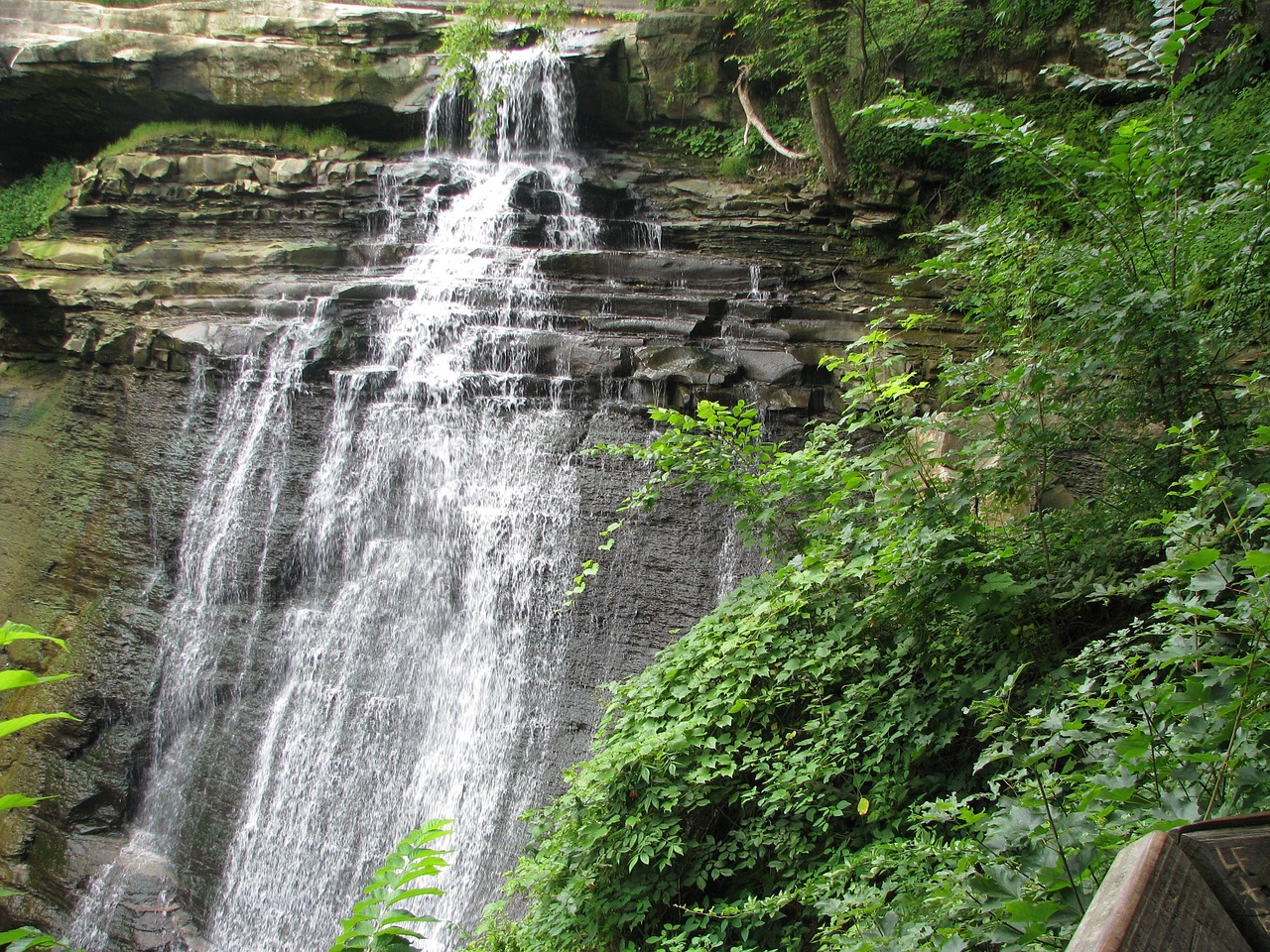
Cuyahoga Valley National Park
Cuyahoga Valley National Park, nestled between the bustling urban areas of Cleveland and Akron in Ohio, stands as a sanctuary of natural beauty and tranquility. This park, which spans over 33,000 acres, is a testament to the resilience of nature, as it has been reclaimed and restored from past pollution and deforestation to become a haven for wildlife and a green space for people to reconnect with the outdoors. The Cuyahoga River, once infamous for pollution, now meanders through the park as a symbol of environmental recovery and restoration, supporting diverse ecosystems along its banks. The park's landscape is characterized by rolling hills, lush forests, and the stunning Cuyahoga Valley, with the river cutting through it, creating a diverse range of habitats. These habitats host an abundance of wildlife, including beavers, white-tailed deer, and over 200 species of birds, making it a fantastic location for birdwatching. One of the park's most charming features is the Beaver Marsh, which was naturally created by beavers and provides a vital habitat for turtles, frogs, and numerous waterfowl. Geologically, the park showcases a variety of formations and features that speak to the region's ancient past and the power of natural forces shaping the landscape. Ritchie Ledges is particularly noteworthy, offering visitors a glimpse into the area's geological history with its massive sandstone cliffs that tower over the surrounding forest, providing breathtaking views and a testament to the erosive power of water over millions of years. The Ohio & Erie Canal, which runs through the park, is a significant historical feature. The Towpath Trail, following the route of the old canal, offers park visitors miles of scenic hiking and biking paths, connecting them to the history of the early transportation system that once fueled the economic development of the region. Cuyahoga Valley National Park also boasts beautiful waterfalls, with Brandywine Falls being one of the most spectacular. Standing at 65 feet, the waterfall is a stunning display of nature's artistry, easily accessible via a boardwalk, and provides a picturesque backdrop for photography enthusiasts and nature lovers alike. Through its extensive trail system, historical sites, and the Cuyahoga Valley Scenic Railroad, the park offers myriad ways for visitors to explore its natural beauty and learn about the area's cultural heritage. Cuyahoga Valley National Park represents a precious green space within a highly urbanized region, offering a peaceful retreat and a reminder of nature's capacity to flourish amidst and in spite of human development.
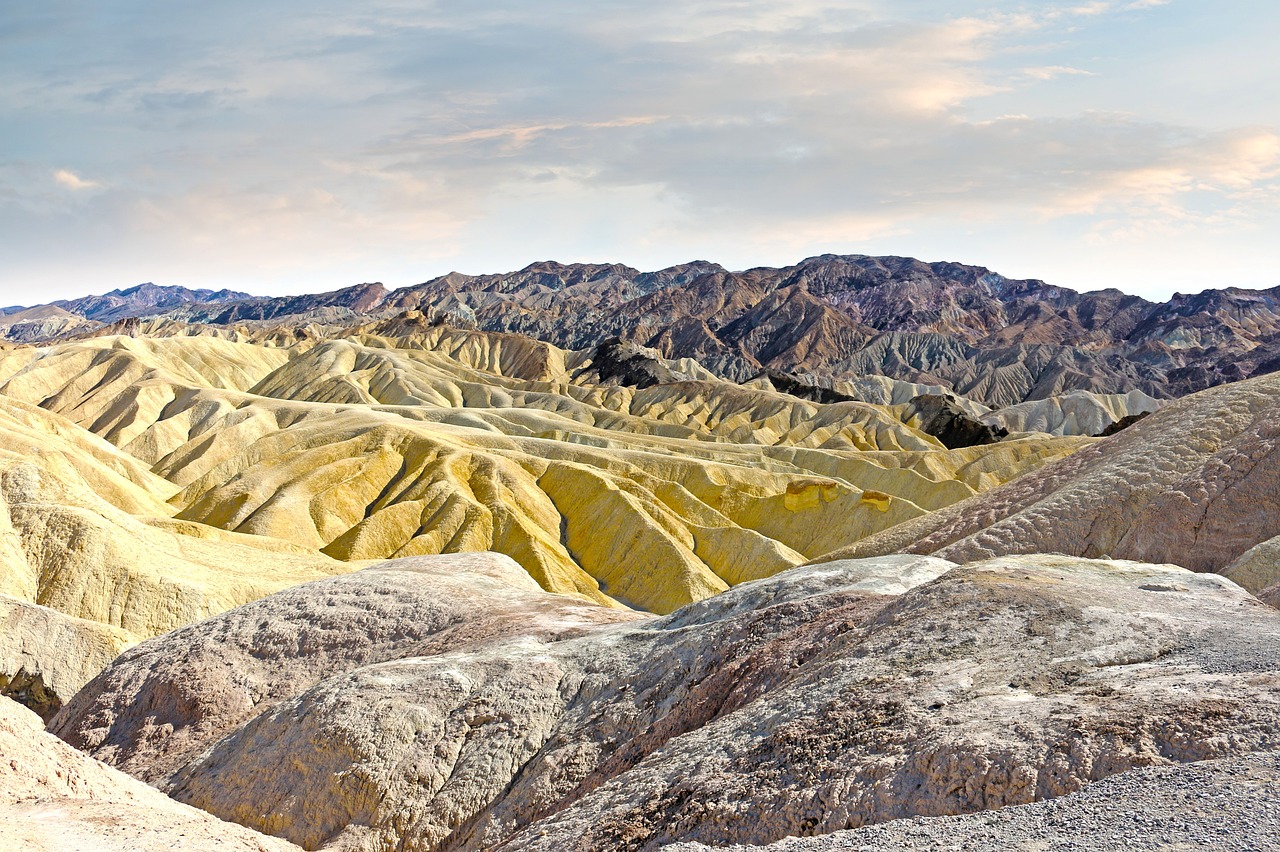
Death Valley National Park
Death Valley National Park, a striking contrast of extremes, is a land of record summer heat, stunning sand dunes, and vibrant wildflower blooms following rare rainfalls. Encompassing the lowest point in North America at Badwater Basin, which lies 282 feet below sea level, the park showcases unique geological features including salt flats, volcanic craters, and canyons. Death Valley's landscape is further characterized by its expansive desert vistas, towering mountains, and the rare and resilient species adapted to its harsh environment. The park is also home to historic sites related to the Timbisha Shoshone tribe and the California Gold Rush era. Within this diverse terrain, habitats range from vast, arid deserts to oasis-like springs, supporting a surprising variety of wildlife and plant species adapted to extreme conditions.

Denali National Park
Denali National Park and Preserve is a vast wilderness in the heart of Alaska that encompasses North America's tallest peak, Denali, which rises majestically to 20,310 feet above sea level. This park is a pristine ecosystem covering over 6 million acres of diverse terrain, ranging from low-elevation taiga forest to high alpine tundra and snowy mountains. Denali's landscape is a dramatic mix of forest at the lower elevations, which then gives way to alpine tundra and finally to icy glaciers and snow-capped mountains. The park is renowned for its wildlife, including grizzly bears, wolves, Dall sheep, caribou, and moose, which roam relatively undisturbed across its vast wilderness. Denali also offers a unique solitude and backcountry experience for visitors, with limited road access preserving its wild character. The single, 92-mile long Denali Park Road provides visitors with breathtaking views and opportunities to spot wildlife and admire the landscape. Denali's diverse ecosystems and untouched natural beauty make it a vital area for scientific research and a premier destination for adventurers and nature lovers alike. The park's commitment to preserving the natural environment allows for a truly wild experience, offering a glimpse into Alaska's ancient landscapes and the resilience of life in extreme conditions.
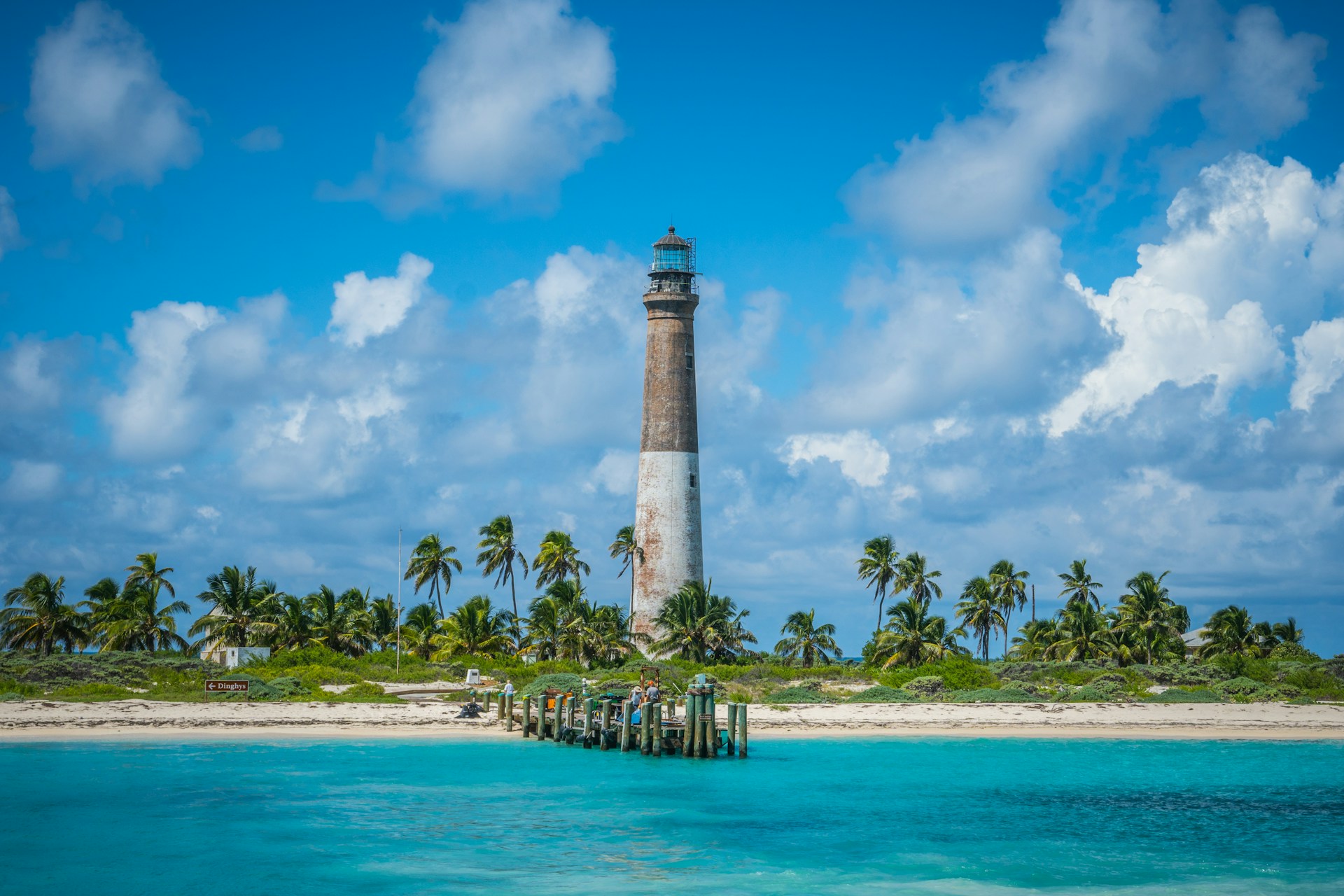
Dry Tortugas National Park
Dry Tortugas National Park, located in the Gulf of Mexico, is a remote park known for its crystal clear waters, coral reefs, marine life, and significant historical artifacts. Comprising seven small islands and situated about 70 miles west of Key West, Florida, this 100-square-mile park is predominantly water and is accessible only by boat or seaplane. The park's centerpiece is Fort Jefferson, one of the largest 19th-century forts in the United States, which was never completed nor fully armed but stands as a remarkable engineering feat and a monument to American history. The park's isolated location has preserved its unique ecosystems, making it a haven for a variety of sea turtles, tropical fish, and vibrant coral reefs that offer some of the most spectacular snorkeling and diving experiences in North America. The crystal-clear waters and shallow flats are ideal for exploring the underwater world, while bird enthusiasts can delight in spotting some of the rare and migratory birds that use these islands as a resting point. Dry Tortugas also has a fascinating history, serving various roles from a military prison during the Civil War to an important research and observation post for scientists studying tropical marine ecosystems. Today, it offers a unique blend of natural beauty and historical intrigue, providing visitors with the opportunity to explore unspoiled coral reefs, enjoy bird watching, tour the massive Fort Jefferson, or simply relax on a remote beach. This park is a testament to the preservation of natural and historical resources, offering a glimpse into America's past and the beauty of its marine environments.
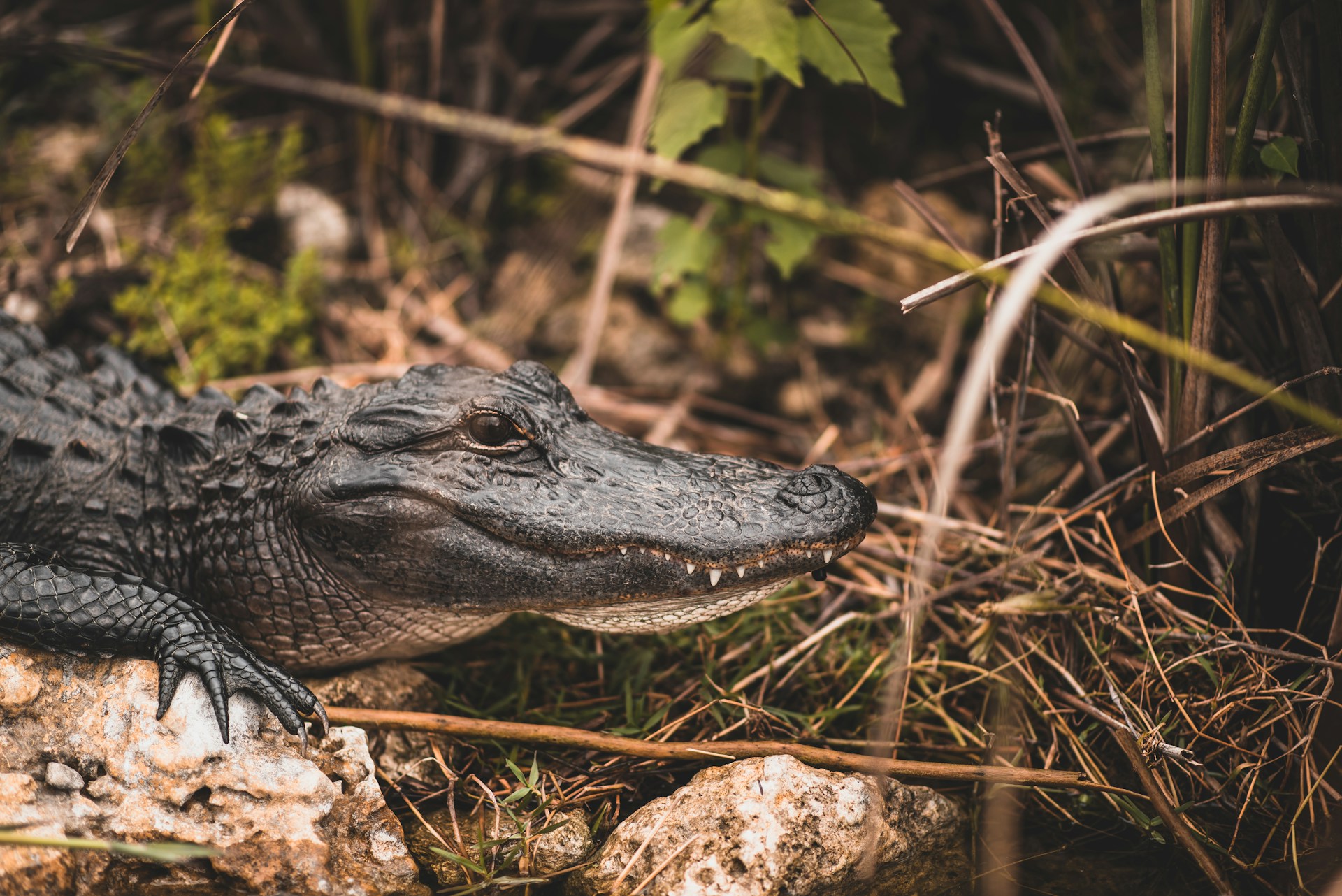
Everglades National Park
Everglades National Park, located in the southern tip of Florida, is a vast and unparalleled ecosystem spanning over 1.5 million acres. Known as the largest subtropical wilderness in the United States, this UNESCO World Heritage site is an intricate network of wetlands and forests fed by a slow-moving river flowing out of Lake Okeechobee into Florida Bay. The park is renowned for its rich biodiversity and is home to a myriad of species, including rare and endangered animals such as the American crocodile, the Florida panther, and the West Indian manatee. The Everglades' landscape is a mosaic of sawgrass marshes, mangrove forests, pine rocklands, and coastal prairies that create a unique and dynamic habitat. It's a vital breeding ground for tropical wading birds, and its waters are filled with a variety of fish, making it a critical habitat for both freshwater and saltwater species. The park's significance lies not only in its ecological diversity but also in its role as a protective barrier for the coastal communities against hurricanes and as a vital water source for South Florida. Visitors to Everglades National Park can explore this unique environment through a variety of activities, including hiking on trails like the Anhinga Trail, where alligators and birds are often spotted; kayaking or canoeing through the mangrove tunnels; or taking a guided boat tour to learn about the park's ecosystems and history. The Everglades also offers the chance to experience the serene beauty of the wilderness under a vast, star-filled sky, emphasizing the importance of preserving this fragile and vital ecosystem for future generations.
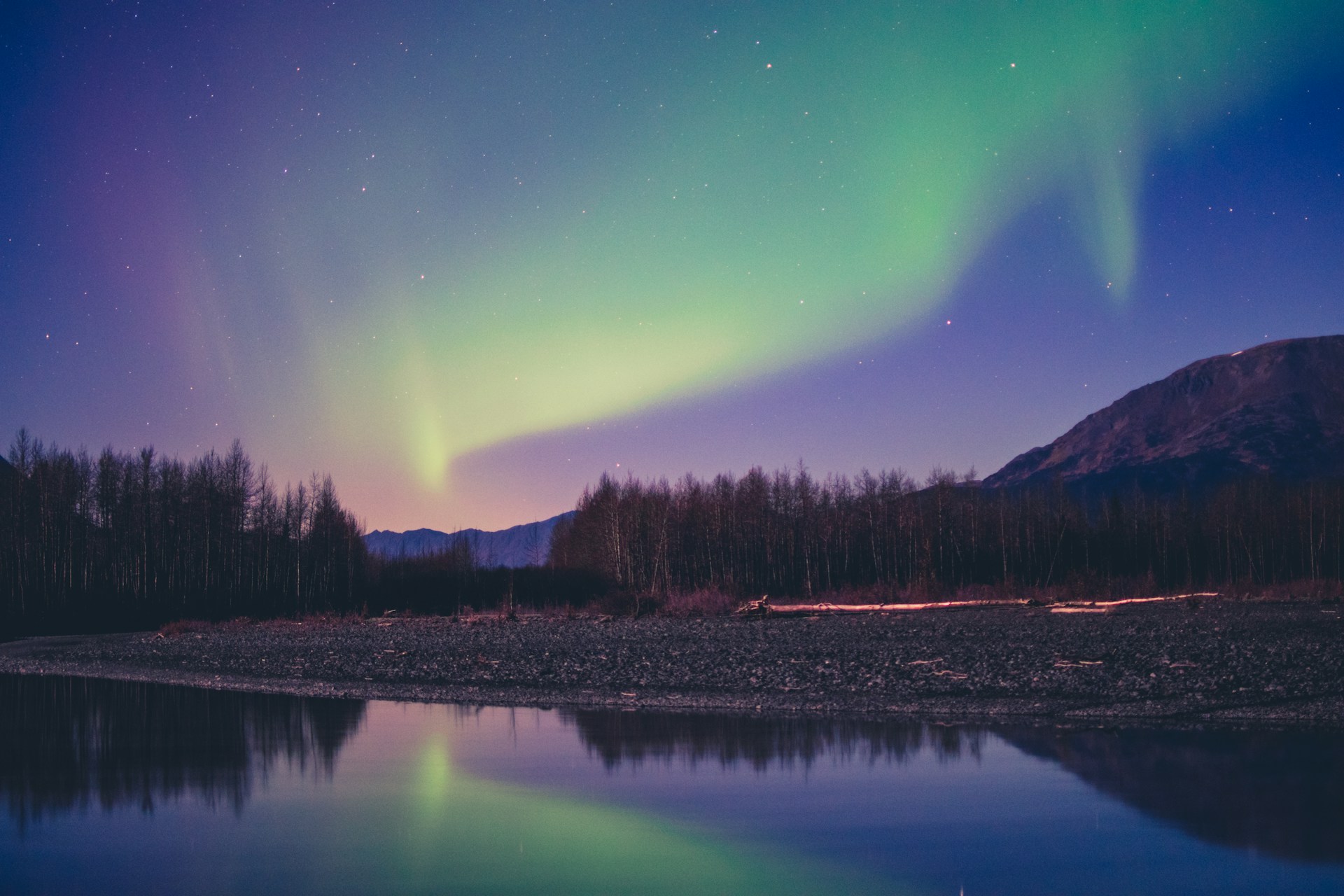
Gates of the Arctic National Park
Gates of the Arctic National Park and Preserve, located north of the Arctic Circle in Alaska, is a vast and virtually untouched wilderness that epitomizes the idea of remote, rugged beauty. Spanning over 8.4 million acres, it is the second largest national park in the United States. This park is a prime example of Alaska's high latitude ecosystems, characterized by its dramatic mountain ranges, such as the Brooks Range, serene arctic landscapes, wild rivers, and a mosaic of boreal forests, tundra, and spruce woodlands. Gates of the Arctic is devoid of any roads or trails, offering an unparalleled experience of solitude and wilderness adventure to those who venture into its expanse. The park's ecosystem supports a diverse range of wildlife, including caribou, grizzly bears, wolves, and over 145 species of birds, making it a critical habitat for these species and a fascinating area for wildlife observation. The park is also home to a rich cultural history, with evidence of human habitation dating back over 13,000 years. The indigenous peoples of this region, including the Nunamiut (inland Eskimo), have lived in harmony with this harsh environment for centuries, depending on the caribou and other natural resources for their subsistence lifestyle. Visitors to Gates of the Arctic National Park and Preserve can engage in various activities such as backpacking, river rafting, and wildlife photography, all while experiencing the profound silence and isolation that only such a pristine wilderness can offer. Due to its remote location, access to the park is primarily by bush plane, providing an aerial introduction to its breathtaking landscapes. This park is a testament to the beauty and wildness of the Arctic, offering a unique and profound connection to the natural world.
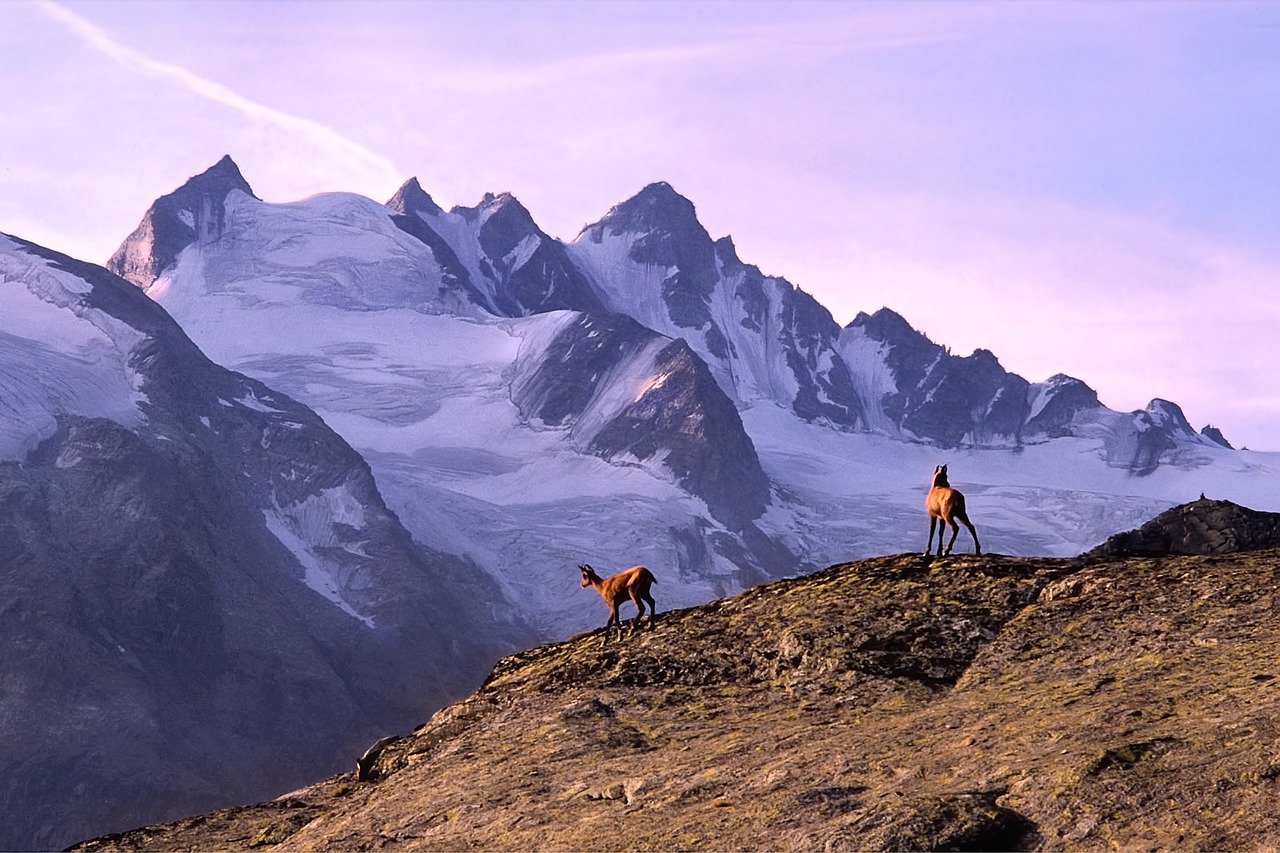
Glacier National Park
Glacier National Park, located in the rugged Rocky Mountains of Montana, near the border of Canada, is a stunning showcase of pristine wilderness, diverse ecosystems, and geological wonders that have been sculpted over millions of years by glaciers. Spanning over a million acres, the park is home to more than 700 lakes, two mountain ranges, and hundreds of species of animals.It's a place where the American and Canadian Rockies meet, creating a landscape filled with towering peaks, deep valleys, and remnants of the ancient glaciers that gave the park its name. One of the park's most iconic features is the Going-to-the-Sun Road, an engineering marvel that offers breathtaking views of the park's rugged terrain, including lush forests, alpine meadows, and pristine lakes. The road itself is a testament to human ingenuity and provides visitors with access to many of the park's most scenic viewpoints and trailheads. Glacier National Park is also renowned for its biodiversity. It serves as a critical habitat for grizzly bears, wolves, mountain goats, and wolverines, among other wildlife. The park's diverse habitats, ranging from dense forests and wildflower-filled meadows to alpine tundras, support a rich variety of plant and animal life, making it a vital area for conservation and study. The park's extensive trail system allows visitors to explore its natural beauty up close, with options ranging from short, accessible walks to challenging backcountry hikes. Many of these trails lead to spectacular natural features, such as waterfalls, glacial lakes, and high mountain passes that offer stunning panoramic views. Glacier National Park's combination of scenic beauty, geological significance, and ecological diversity makes it a unique and cherished landscape. It stands as a living monument to the ice-age legacies of the past and a precious refuge for the flora and fauna that call it home.
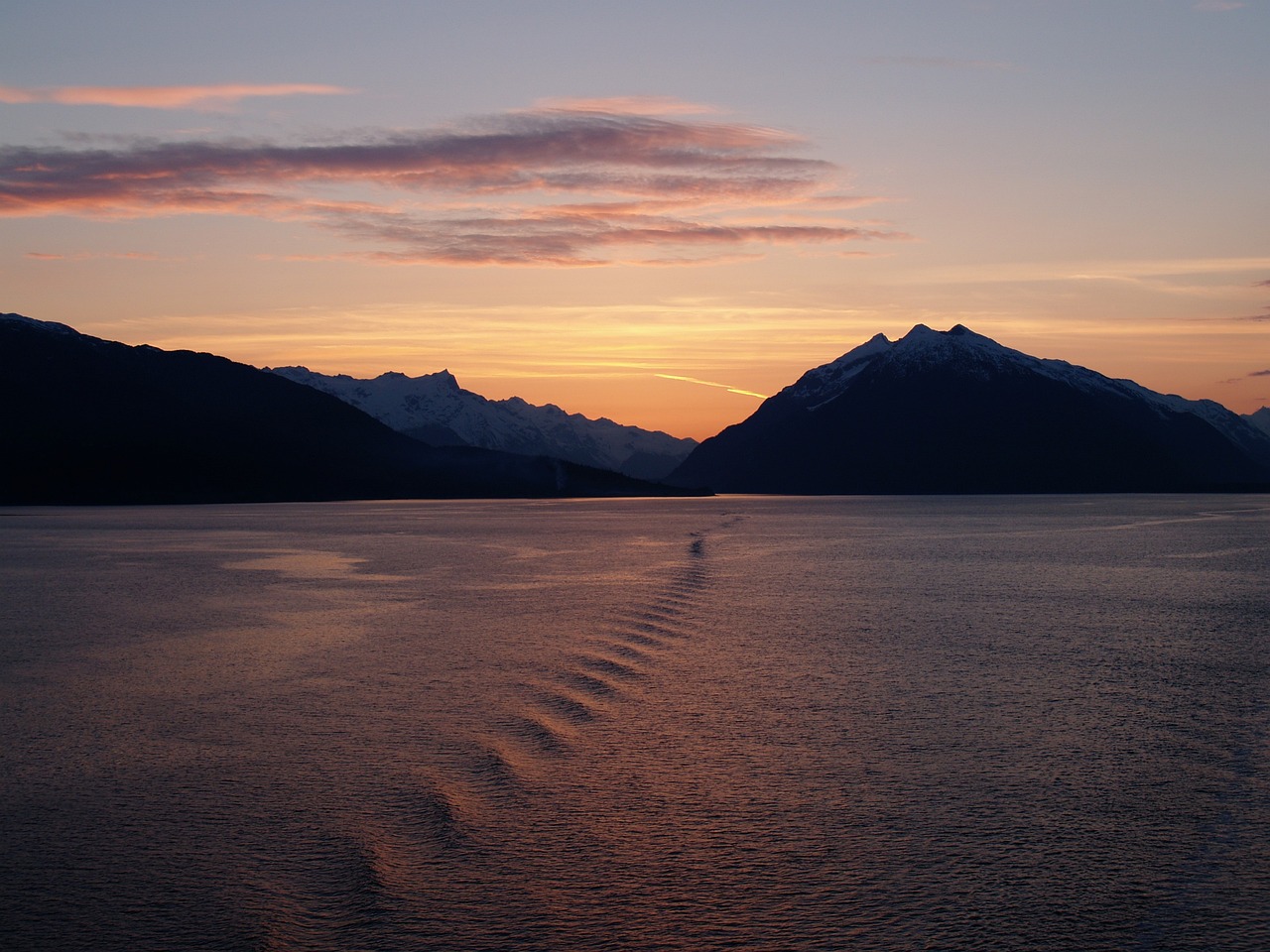
Glacier Bay National Park
Glacier Bay National Park and Preserve, nestled in the southeast corner of Alaska, is a realm where nature's grandeur is on full display, offering a sanctuary of glaciers, oceans, and mountainous landscapes. This magnificent park spans over 3.3 million acres, forming part of a 25-million-acre World Heritage Site—one of the world’s largest international protected areas. Glacier Bay is a dynamic laboratory for the study of how glaciation and subsequent deglaciation can shape environments, providing visitors with the extraordinary opportunity to witness geological processes unfold. The heart of the park is its majestic tidewater glaciers, some of which are among the most accessible and active glaciers in the world. These icy giants calve into the bay with thunderous roars, creating a dynamic spectacle that is both awe-inspiring and a poignant reminder of the natural world's power and fragility. The park's marine waters are home to a rich array of marine life, including humpback whales, sea otters, seals, and porpoises, making it an excellent location for wildlife viewing. Glacier Bay's landscape is a stunning mosaic of biodiversity, from the temperate rainforests that cloak the lower slopes to the barren, rocky faces of the highest peaks. This diversity supports a wide array of flora and fauna, including brown and black bears, wolves, moose, and over 200 species of birds, making it a haven for nature enthusiasts and researchers alike. Access to Glacier Bay National Park is primarily by boat or plane, adding to the sense of adventure and isolation. Visitors can explore the park through guided boat tours, kayaking, and camping, each offering unique perspectives of the park’s grandeur. The Tlingit people, whose ancestors have inhabited the Glacier Bay area for centuries, add a rich cultural layer to the park, offering insights into the deep connections between humans and this wild landscape. Glacier Bay National Park and Preserve stands as a testament to the raw beauty and power of the natural world. It offers an unparalleled opportunity to explore and understand the processes of glacial movement and retreat, marine ecology, and the resilience of ecosystems in the face of climatic change, making it a precious resource for both education and inspiration.
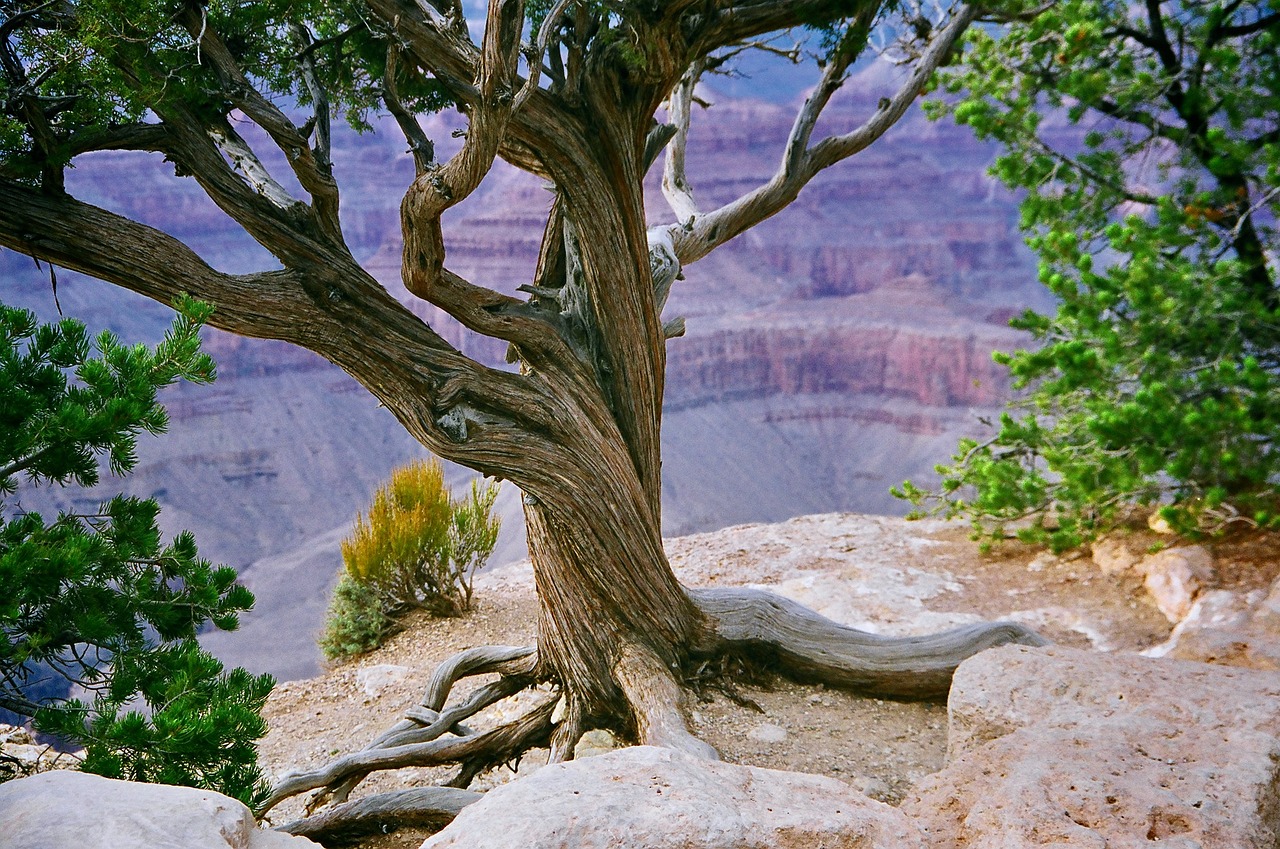
Grand Canyon National Park
Grand Canyon National Park, located in the state of Arizona, is a monumental testament to the power of natural forces over millions of years, carving one of the most awe-inspiring landscapes on Earth. Spanning over 1,900 square miles, the park is home to the Grand Canyon, a gorge of the Colorado River, which is considered one of the Seven Natural Wonders of the World. The canyon itself is an overwhelming spectacle, with its vast expanse stretching 277 miles in length, up to 18 miles in width, and over a mile deep. The park showcases a stunning array of geological features, including layered bands of colorful rock that reveal the history of the North American continent. The sheer size and intricate landscapes of the Grand Canyon provide a unique window into the earth's geological history, displaying nearly two billion years of the Earth's geological timeline through its exposed strata. Grand Canyon National Park is also renowned for its biodiversity. The park encompasses several major ecosystems, from the river corridors and riparian areas to forested rims, each supporting diverse flora and fauna. It is home to over 500 animal species, including the California condor, bighorn sheep, and numerous species of reptiles and mammals, making it a significant area for wildlife observation and conservation. Visitors to the park can engage in a variety of activities, from hiking and backpacking on the extensive trail network, including the famous Bright Angel and North Kaibab trails, to rafting on the Colorado River. The park also offers numerous overlooks and viewpoints, such as Mather Point and Yavapai Observation Station, providing breathtaking panoramic views of the canyon. Grand Canyon National Park is not just a natural wonder but also a cultural treasure, with thousands of archeological sites and cultural artifacts that tell the story of the Native American peoples who have lived in and around the canyon for thousands of years. The park's significance as a natural monument and cultural heritage site makes it a place of profound beauty and deep historical importance, offering visitors an unparalleled opportunity to connect with the natural world and human history.
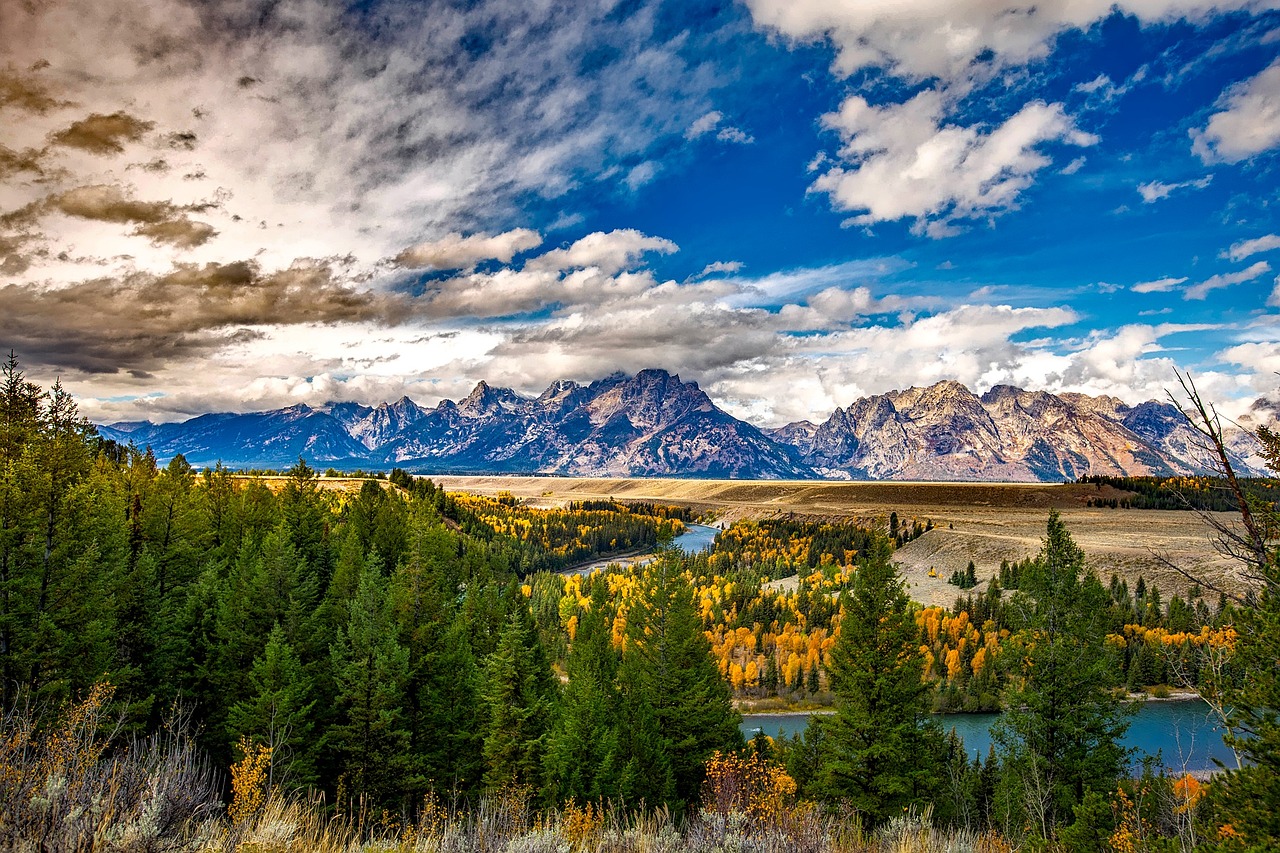
Grand Teton National Park
Grand Teton National Park, located in northwestern Wyoming, near the town of Jackson, is a stunning testament to the raw beauty and grandeur of the American West. Encompassing approximately 310,000 acres, the park is famed for its majestic peaks, pristine lakes, and diverse ecosystems. At the heart of the park, the Teton Range rises dramatically from the Jackson Hole valley, with Grand Teton itself soaring to 13,775 feet, presenting a breathtaking skyline that captivates visitors. The park's landscape is a diverse tapestry of ecosystems, ranging from the riparian areas along the Snake River to alpine terrain above the treeline. This variety of habitats supports a rich array of wildlife, including grizzly and black bears, moose, elk, bison, and a wealth of bird species, making it a haven for wildlife enthusiasts and photographers. The park's flora is equally diverse, with wildflower meadows, sagebrush flats, and dense forests painting a vibrant picture of the area's natural beauty. Grand Teton National Park is not only a place of natural wonders but also a site of deep historical significance. The park's human history is rich, with evidence of Native American presence dating back over 10,000 years, and more recent history of fur trappers, homesteaders, and conservationists who played pivotal roles in the area's development and preservation. The iconic Moulton Barns on Mormon Row, with the Tetons as a backdrop, are among the most photographed scenes in the park, symbolizing the rugged individualism of the American frontier. Recreational opportunities abound in Grand Teton National Park. Visitors can explore over 200 miles of trails that offer everything from leisurely walks to challenging backcountry hikes. The Snake River provides opportunities for fishing, kayaking, and rafting, offering unique perspectives of the park. Scenic drives, such as the Teton Park Road and Jenny Lake Scenic Drive, offer stunning vistas and access to key points of interest within the park. Grand Teton National Park's combination of natural splendor, wildlife diversity, and historical depth makes it a unique and cherished landscape. It serves as a reminder of the enduring beauty of the American wilderness and the importance of preserving these natural treasures for future generations.

Great Basin National Park
Great Basin National Park, located in eastern Nevada near the Utah border, is a hidden gem among the United States' national parks, offering a diverse and under-explored landscape that spans desert basins to majestic mountain ranges. Covering approximately 77,180 acres, the park is a showcase of the Great Basin region's unique ecological diversity, including its most prominent feature, Wheeler Peak, which rises to an impressive 13,063 feet. This park is a land of contrasts, where visitors can explore sage-covered foothills, ancient bristlecone pine forests, lush alpine meadows, and the stunning marble and limestone formations of Lehman Caves. The park's isolation and varied elevations support a wide range of plant and animal life, providing habitats for species such as mule deer, mountain lions, and various bird species, including the townsend's solitaire and Clark's nutcracker. The ancient bristlecone pines, some of the oldest living organisms on Earth, stand as silent witnesses to thousands of years of history, adding a profound sense of timelessness to the landscape. Great Basin National Park is also renowned for its dark skies, offering some of the country's best stargazing opportunities. The lack of light pollution allows for breathtaking views of the Milky Way, planets, and meteor showers, making it a prime destination for astronomers and night-sky enthusiasts. Recreational opportunities within the park are abundant, with more than 60 miles of trails that cater to hikers of all skill levels, from easy nature walks around the Lehman Caves to challenging treks up Wheeler Peak. The park's scenic drives, such as the Wheeler Peak Scenic Drive, offer access to high mountain areas and spectacular viewpoints. Fishing, camping, and cave tours offer visitors a range of ways to explore and appreciate the natural beauty and solitude of Great Basin National Park. Great Basin National Park's combination of remote wilderness, ecological diversity, and natural beauty offers a unique and serene experience. It stands as a testament to the rugged and expansive landscapes of the American West, inviting visitors to explore its hidden wonders and connect with the natural world in a profound and personal way.

Great Sand Dunes National Park
Great Sand Dunes National Park and Preserve, nestled in the heart of Colorado's San Luis Valley, is a landscape of stark contrasts and natural wonders. Spanning over 149,000 acres, this unique park is home to the tallest sand dunes in North America, which rise up to 750 feet from the floor of the San Luis Valley on the western base of the Sangre de Cristo Range. These magnificent dunes form the centerpiece of a diverse ecosystem that includes alpine lakes, tundra, forests, wetlands, and grasslands. The park's varied environments support a wide array of wildlife, from the elusive elk and deer to the diverse bird species that inhabit the area, including the sandhill crane and the peregrine falcon. The juxtaposition of desert dunes against the backdrop of snow-capped peaks creates a surreal landscape that captivates the imagination and offers a unique experience for visitors. Great Sand Dunes National Park and Preserve is also recognized for its dynamic landscape, which is constantly reshaped by the winds that sweep through the valley, ensuring that no two visits are ever quite the same. The park's Medano Creek, a seasonal stream that flows at the base of the dunes, offers a refreshing respite during the spring and early summer months, creating a popular spot for sandboarding, sand sledding, and splashing in the water. Recreational opportunities abound in the park, with activities ranging from hiking and sandboarding to exploring the backcountry and stargazing under some of the darkest skies in the United States. The park's trails lead visitors through diverse habitats, including the challenging hike to the summit of High Dune, offering panoramic views of the dune field and surrounding mountains. The nearby Sangre de Cristo Mountains provide additional opportunities for hiking, backpacking, and wildlife viewing in a more alpine setting. Great Sand Dunes National Park and Preserve offers a profound sense of solitude and space, inviting visitors to explore its vast landscapes and discover the quiet beauty of this unique natural area. It stands as a testament to the power of natural forces to create and shape the environment, offering a place of reflection, recreation, and awe-inspiring beauty.

Great Smoky Mountains National Park
Great Smoky Mountains National Park, straddling the border between North Carolina and Tennessee, is a revered landscape that encapsulates the heart of the Appalachian Mountains. Encompassing over 522,000 acres, this UNESCO World Heritage Site is the most visited national park in the United States, drawing millions of visitors each year with its ancient mountains, rich biodiversity, and deep cultural heritage. The park is renowned for its diverse ecosystems, which are home to over 19,000 documented species, with scientists believing there could be thousands more yet to be discovered. This biodiversity hotspot boasts old-growth forests, over 100 native tree species, and a vast array of wildlife, including black bears, elk, and over 200 species of birds. The park's flora is equally impressive, with more than 1,500 flowering plants, making it one of the best places in North America to witness the spring wildflower bloom. Great Smoky Mountains National Park is characterized by its rolling mist and fog, which envelop the mountains and valleys, giving the park its name and a mystical atmosphere. The landscape offers a stunning display of natural beauty across the seasons, from the vibrant greens of spring and the lushness of summer to the fiery colors of fall and the serene snow-capped peaks of winter. The park's rich history is palpable, with numerous preserved historic buildings, including log cabins, barns, and churches, that offer a glimpse into the lives of the Appalachian settlers. The Cherokee also have deep ties to the land, and the park's cultural exhibits and historic sites, such as the Mountain Farm Museum and Mingus Mill, provide insight into the region's indigenous and settler history. Visitors to Great Smoky Mountains National Park can explore its beauty through a vast network of trails, including the famed Appalachian Trail, which traverses the park. Other activities include scenic drives, such as the Cades Cove Loop Road, wildlife viewing, and participating in ranger-led programs that enhance the understanding and appreciation of this unique natural and cultural treasure. Great Smoky Mountains National Park stands as a sanctuary of natural beauty and a testament to the enduring legacy of the Appalachian Mountains. It invites exploration and offers solace and inspiration to all who visit, serving as a vital protector of biodiversity and a cherished space for connection with nature and history.
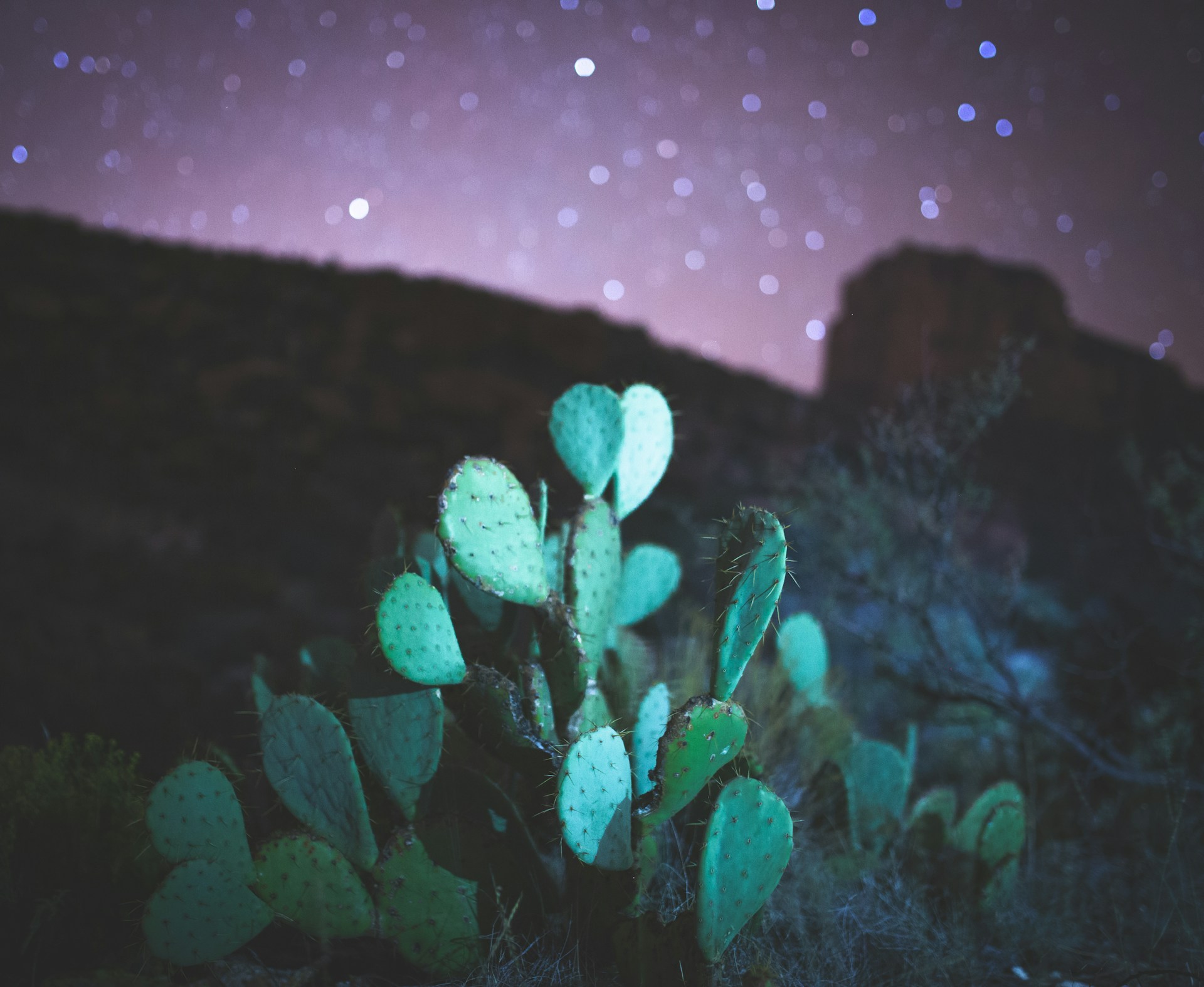
Guadalupe Mountains National Park
Guadalupe Mountains National Park, located in West Texas, is a remarkable landscape that showcases the beauty and diversity of the Chihuahuan Desert and the majesty of the Guadalupe Mountains. Spanning over 86,000 acres, this park is home to Guadalupe Peak, the highest point in Texas at 8,749 feet, offering breathtaking views and a sense of accomplishment for those who reach its summit. The park's diverse ecosystems range from rugged canyons and lush woodlands to expansive desert terrain, supporting a rich variety of flora and fauna. Among its natural treasures are the ancient fossil reef from the Permian era, which forms the backbone of the park, and the beautiful McKittrick Canyon, renowned for its stunning fall foliage display of maples and other deciduous trees—a rare sight in the desert landscape. Wildlife in the park includes over 60 species of mammals, such as mule deer, cougars, and black bears, alongside more than 300 species of birds, making it a fantastic location for wildlife watching and birding. The park's plant life is equally diverse, with more than 1,000 species, including several types of cacti, agaves, and the signature Texas Madrone trees with their distinctive red bark. Guadalupe Mountains National Park is a hiker's paradise, offering more than 80 miles of trails that range from easy nature walks to challenging backcountry treks. The Guadalupe Peak Trail takes hikers to the "Top of Texas," while the Devil's Hall Trail offers a relatively easy hike through a stunning, narrow canyon. For those seeking solitude and wilderness, the park's extensive backcountry areas provide ample opportunities for exploration. In addition to its natural wonders, the park also holds cultural significance, with a history that includes Native American peoples, Spanish explorers, and pioneers. Visitors can learn about the park's rich past and the people who have lived in and explored this landscape through various interpretive programs and exhibits. Guadalupe Mountains National Park offers a unique and remote wilderness experience, inviting visitors to explore its natural beauty, challenge themselves on its trails, and discover the tranquility and grandeur of this hidden gem in the American Southwest. It stands as a testament to the enduring power of nature and the importance of preserving these wild places for future generations.

Haleakala National Park
Haleakalā National Park, located on the island of Maui in Hawaii, is a landscape of stark contrasts and ethereal beauty. Encompassing over 33,000 acres, the park is divided into two distinct districts: the Summit Area, which includes the massive summit crater of Haleakalā volcano, and the Kīpahulu Area, located on the east coast of Maui, renowned for its lush tropical landscapes and cascading waterfalls. The Summit Area of Haleakalā is home to one of the most awe-inspiring sights in the world: the sunrise from the top of Haleakalā volcano, standing at 10,023 feet above sea level. The experience of watching the first rays of sunlight pierce the sea of clouds that often fills the crater is truly unparalleled, offering a moment of profound beauty and tranquility. The summit area also features a stark, moon-like volcanic landscape that includes cinder cones and desolate terrain, providing a stark contrast to the lushness found elsewhere on Maui. The park's diverse ecosystems are home to a remarkable variety of flora and fauna, including several endangered species such as the nēnē (Hawaiian goose) and the silversword, a rare and beautiful plant that is unique to Haleakalā. The park's elevation gradient, from sea level to the summit, supports a wide range of habitats, from subtropical rainforests in Kīpahulu to the alpine desert of the summit area. In the Kīpahulu District, visitors can explore the lush, tropical side of Haleakalā, with trails leading through bamboo forests to spectacular waterfalls, including the 400-foot Waimoku Falls. This area also offers a glimpse into traditional Hawaiian culture, with the ancient pools of ʻOheʻo (also known as the Seven Sacred Pools) providing a natural place for relaxation and reflection. Haleakalā National Park offers a wide range of recreational opportunities, including hiking, stargazing, and bird watching. The park's extensive trail system allows visitors to explore both the summit and coastal areas, each offering unique landscapes and experiences. The park also provides educational programs that delve into the area's rich cultural history and the significance of the volcano in Hawaiian mythology and tradition. Haleakalā National Park is a place of profound natural beauty and cultural depth, inviting visitors to explore its unique landscapes, experience the quiet majesty of the volcano, and discover the rich biodiversity and cultural heritage of Maui. It stands as a testament to the power of nature and the importance of preserving these sacred places for future generations.
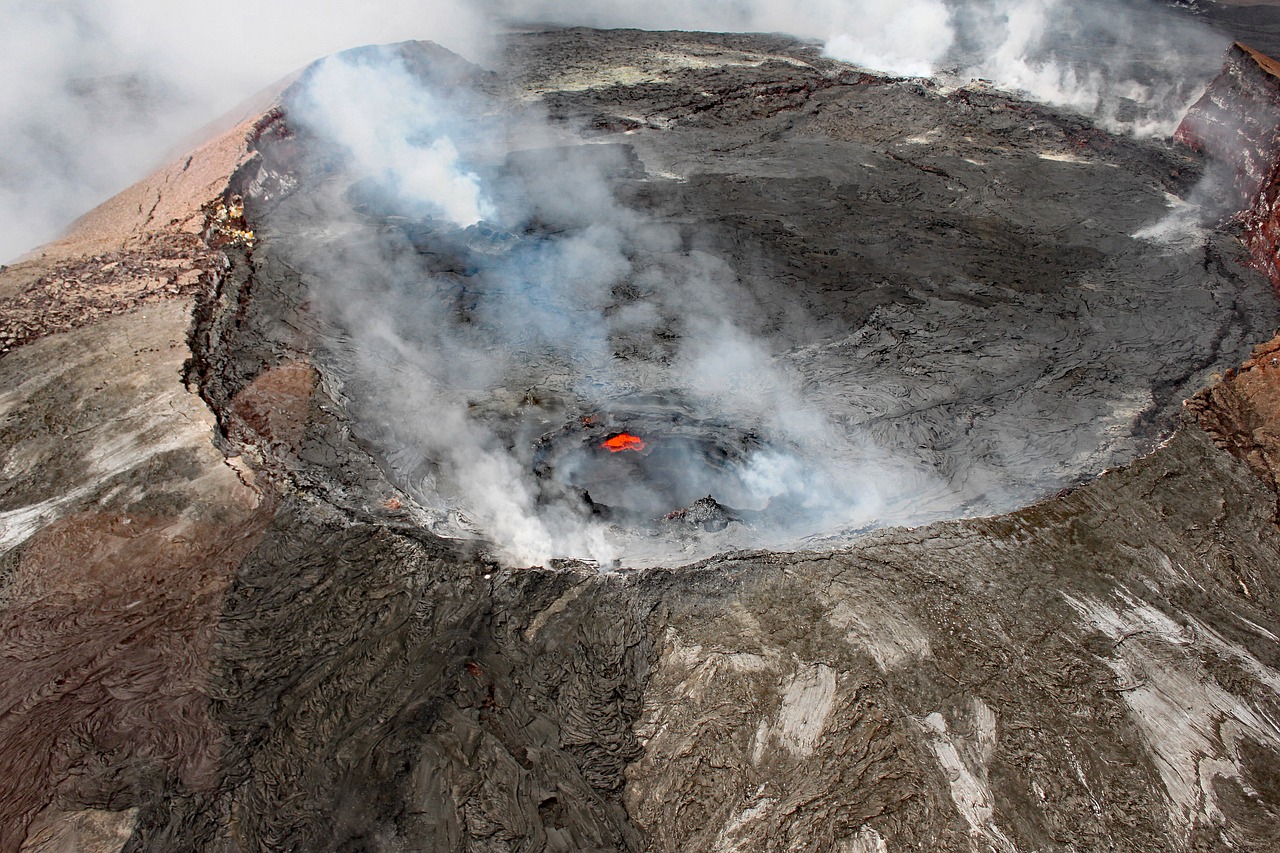
Hawaii Volcanoes National Park
Hawai'i Volcanoes National Park, located on the Big Island of Hawai'i, offers a rare and dynamic landscape that is both sacred and continuously shaped by powerful natural forces. Encompassing over 333,000 acres, the park is home to two of the world's most active volcanoes: Kīlauea and Mauna Loa. These natural wonders provide visitors with a unique opportunity to witness firsthand the creation and destruction inherent in the earth's geological processes. The park's diverse ecosystems range from lush tropical rainforests to barren lava fields, creating habitats for a wide array of flora and fauna, including many endemic and endangered species. The nēnē, or Hawaiian goose, and the Hawaiian hawk, or ʻio, are among the native species that call the park home. The park's elevation gradient supports a variety of plant communities, including fern forests and the specialized flora of the volcanic landscapes. Hawai'i Volcanoes National Park is not only a place of natural wonder but also of deep cultural significance. The park encompasses many sites sacred to Native Hawaiians and offers insights into the rich cultural traditions and the living relationship between the people and the volcanic landscape. The park's cultural sites, including ancient petroglyphs carved into the lava rock, are tangible connections to the past and present of Hawaiian culture. Visitors to the park can explore its beauty and power through a network of trails that traverse both dramatic volcanic landscapes and lush rainforests. The Crater Rim Drive and Chain of Craters Road provide access to key features of the park, including steam vents, the Jaggar Museum overlook with views of Kīlauea's caldera, and the mesmerizing lava flows that reshape the land and create new earth. The park also offers a range of educational programs and exhibits that delve into the geological activity, ecological diversity, and cultural history of the area. The Kīlauea Visitor Center is a starting point for understanding the park's significance and planning explorations of its vast and varied terrain. Hawai'i Volcanoes National Park stands as a testament to the beauty and power of the natural world, offering visitors a profound experience of awe and respect for the forces that shape our planet. It serves as a reminder of the importance of preserving these unique landscapes and the cultural stories they hold for future generations.
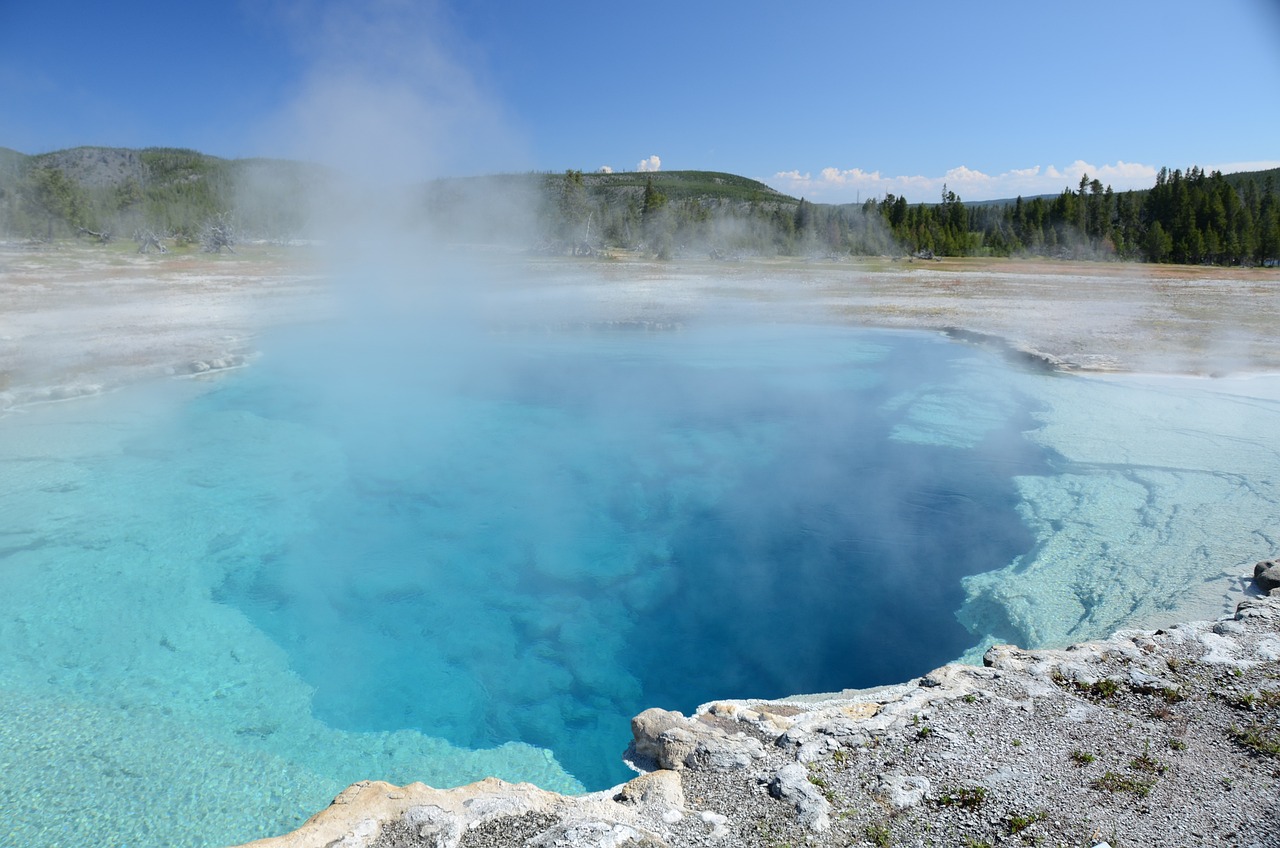
Hot Springs National Park
Hot Springs National Park, located in central Arkansas, is a unique blend of natural and cultural history, centered around the ancient thermal springs that have been flowing for thousands of years. Known as "The American Spa," this park encompasses about 5,550 acres, including portions of downtown Hot Springs, making it one of the most accessible national parks in the United States. The park's main attraction is its 47 naturally flowing hot springs on the southwestern slope of Hot Springs Mountain, part of the Ouachita Mountain range. Unlike any other national park, Hot Springs National Park is renowned for its historic Bathhouse Row, a collection of eight architecturally significant bathhouses, most of which were built in the early 20th century. These grand structures, including the Fordyce Bathhouse, which now serves as the park's visitor center, and the Buckstaff Bathhouse, which continues to operate as a traditional bathhouse, offer a glimpse into the era when the city was a flourishing spa destination. The bathhouses are a testament to the healing properties attributed to the thermal waters and the park's role in American leisure and wellness culture. The thermal waters, with an average temperature of 143°F, are believed to possess therapeutic properties and have attracted people for centuries, including Native American tribes who considered the area sacred. Today, visitors can still experience these waters through public fountains, traditional baths, and modern spas, continuing the centuries-old tradition of seeking relaxation and healing. In addition to its cultural and historical significance, Hot Springs National Park offers a variety of natural landscapes to explore. The park features scenic drives, such as West Mountain Drive, and over 26 miles of hiking trails that wind through the beautiful Ouachita Mountains, offering panoramic views of the surrounding area and access to peaceful forested areas. The park's mixed pine and hardwood forests are home to diverse wildlife, including white-tailed deer, foxes, and numerous bird species, adding to the park's appeal for nature lovers. Hot Springs National Park's unique combination of natural thermal springs, rich cultural history, and accessible natural beauty makes it a distinctive and cherished part of the national park system. It invites visitors to immerse themselves in the healing waters, explore the historic architecture, and enjoy the serene landscapes, providing a unique experience that blends relaxation, recreation, and education.
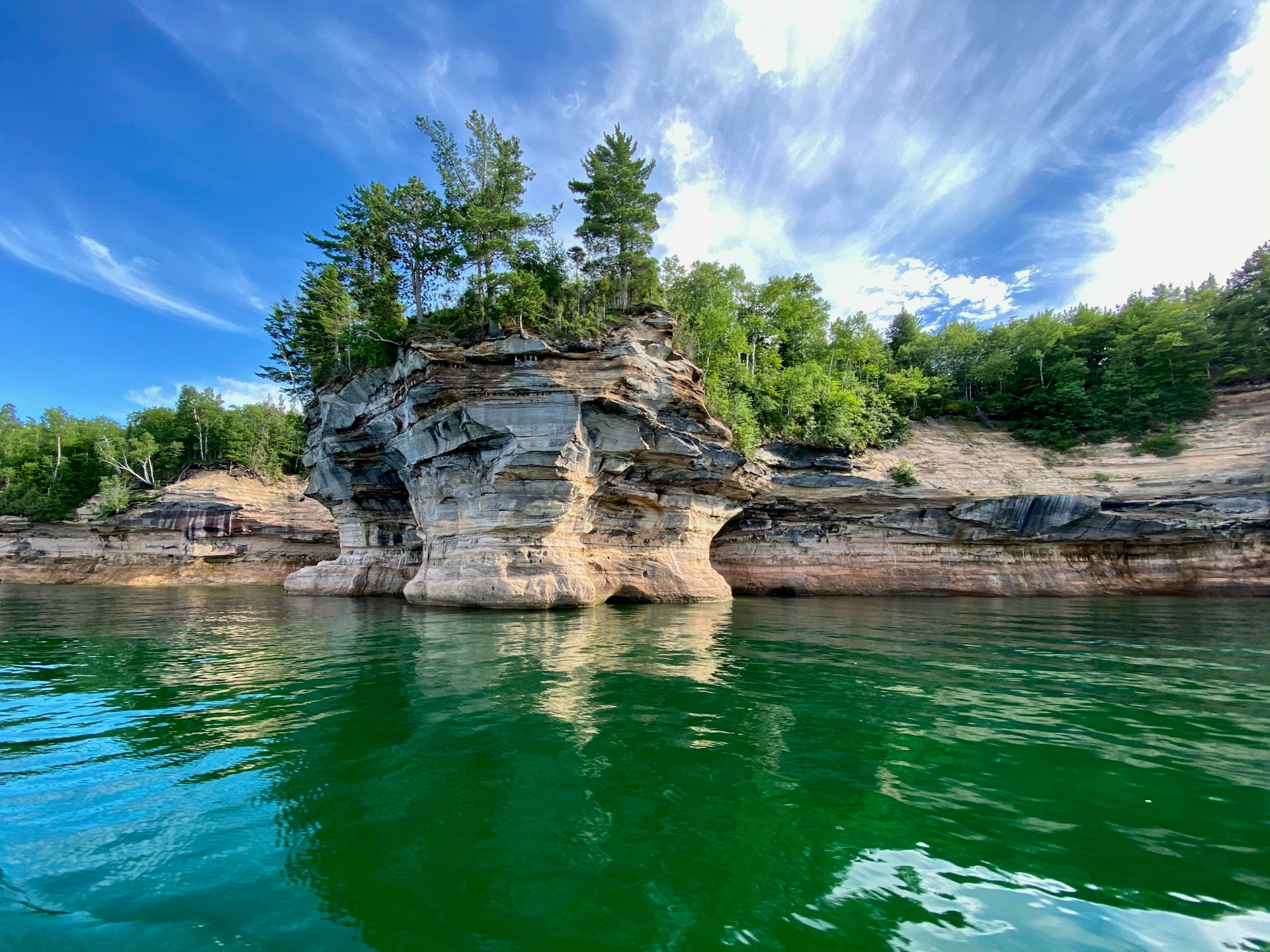
Isle Royale National Park
Isle Royale National Park, located in the northwest corner of Lake Superior in Michigan, is a remote island wilderness that offers a unique blend of natural beauty, solitude, and adventure. Spanning approximately 894 square miles, including the main island and over 400 smaller surrounding islands, this national park is a haven for backpackers, kayakers, and nature enthusiasts seeking an escape into a rugged and pristine environment. The park is renowned for its isolation and the sense of wilderness it provides. Accessible only by boat or seaplane, Isle Royale's isolation has helped preserve its untouched landscapes and the ecosystems within them. The island's rugged terrain is a mix of dense northern hardwood and boreal forests, wetlands, and rocky shores, creating a diverse habitat that supports a variety of wildlife. Perhaps most famous are the island's moose and wolf populations, which are subjects of the longest-running predator-prey study in the world, offering invaluable insights into ecological dynamics. Isle Royale's natural beauty extends beneath the surface of Lake Superior, with shipwrecks and underwater formations making it a fascinating destination for scuba divers. Above water, the park's crystal-clear inland lakes and streams are perfect for canoeing and fishing, offering serene settings surrounded by the calls of loons and the rustling of the forest. The park's network of trails invites hikers to explore its wilderness, with over 165 miles of trails that traverse scenic ridges, pass by secluded coves, and lead to remote campsites. Hiking on Isle Royale offers a true backcountry experience, with the chance to see the island's wildlife, enjoy its solitude, and witness the stunning vistas of Lake Superior. Isle Royale National Park is also a place of cultural significance, with a history that includes Native Americans, European explorers, and commercial fishermen. Visitors can learn about the island's past through exhibits and preserved historical sites, adding a rich cultural layer to the natural experience. Isle Royale's combination of natural beauty, wilderness adventure, and isolation makes it a unique and cherished part of the national park system. It stands as a testament to the value of preserving natural landscapes and the wildlife that inhabits them, offering visitors a profound connection to the natural world and an unparalleled opportunity for exploration and reflection.

Joshua Tree National Park
Joshua Tree National Park, located in southeastern California, is a fascinating landscape where two distinct desert ecosystems, the Mojave and the Colorado, converge. Spanning approximately 800,000 acres, this park is named after the Joshua tree, a unique and resilient species that is predominantly found in the Mojave Desert portion of the park. These iconic trees, with their twisted, bristled limbs, stand as surreal sentinels across the landscape, embodying the rugged beauty and survival against the odds characteristic of the desert. The park's geology is a major draw, featuring striking rock formations and boulder piles that have made it a world-renowned destination for rock climbers. The sculpted rocks, formed by volcanic activity and erosion over millions of years, offer a playground for adventurers and a stunning backdrop for photographers. Notable geological features include the Arch Rock, Skull Rock, and the Wonderland of Rocks, an extensive maze of granite monoliths and narrow canyons. Joshua Tree's landscape is a mosaic of stark desert beauty, with vast open skies that transition into incredible displays of stars after sunset, making it a popular destination for stargazers. The park's clear, dark skies offer some of the best conditions for observing the Milky Way, planets, and meteor showers in Southern California. Beyond its Joshua trees and geological wonders, the park is home to a diverse array of flora and fauna adapted to the harsh desert environment. Visitors may encounter coyotes, bighorn sheep, black-tailed jackrabbits, and a variety of lizards and birds. The spring season often brings a spectacular display of wildflowers, transforming the desert floor with vibrant colors. Joshua Tree National Park offers a variety of recreational activities, including hiking, camping, rock climbing, and bird watching. The park's extensive network of trails caters to all levels of hikers, from short nature walks to strenuous hikes, such as the trek to the summit of Ryan Mountain. The park's campgrounds provide a base for overnight stays, allowing visitors to immerse themselves in the serene desert landscape. The cultural history of Joshua Tree is as rich and varied as its natural history, with evidence of human occupation dating back thousands of years. The park's cultural sites, including rock art and historical structures, tell the stories of the Native Americans, ranchers, miners, and homesteaders who have lived in this challenging environment. Joshua Tree National Park stands as a testament to the beauty and resilience of the desert, inviting visitors to explore its wonders and experience the profound tranquility and inspiration that the desert provides.

Katmai National Park
Katmai National Park and Preserve, located in southern Alaska, is a wild and remote landscape known for its remarkable volcanic activity, breathtaking wilderness, and as one of the premier places in the world to observe brown bears in their natural habitat. Spanning over 4 million acres, the park was originally established to protect the area around the Novarupta Volcano, site of the largest volcanic eruption of the 20th century in 1912. This dramatic event created the Valley of Ten Thousand Smokes, a unique ash-filled valley that serves as a testament to the Earth's volcanic power. The park's landscape is diverse, ranging from its famous ash-filled valleys to lush forests, alpine tundras, and an abundance of lakes and rivers. This variety of ecosystems supports a rich array of wildlife, including not only its famous brown bears but also wolves, moose, caribou, and a multitude of bird species. The park's waters are teeming with salmon, a critical resource that sustains the bear population and contributes to the area's ecological richness. Katmai is perhaps best known for Brooks Falls, where visitors can witness the awe-inspiring sight of brown bears fishing for salmon. This spectacle draws people from around the world, offering unparalleled opportunities for wildlife viewing and photography. The park provides platforms and viewing areas designed to minimize human impact on the natural behaviors of the bears, allowing for close, yet safe, observation. In addition to its wildlife and volcanic features, Katmai offers a variety of recreational opportunities, including backcountry hiking, camping, kayaking, and sport fishing. The park's vast wilderness provides a true sense of adventure and solitude for those who venture into its remote landscapes. The park's rugged coastlines, including the Shelikof Strait, offer dramatic vistas and the chance to see marine wildlife, including sea otters, seals, and whales. Katmai's cultural history is also rich, with archaeological sites that offer insights into the lives of the Native Alaskan peoples who have inhabited the region for thousands of years. These sites, along with the stories and traditions of the local Indigenous communities, add a profound cultural dimension to the natural wonders of the park. Katmai National Park and Preserve stands as a monument to the wild beauty of Alaska, offering a unique combination of volcanic landscapes, abundant wildlife, and untouched wilderness. It invites visitors to experience the awe of nature, from the dramatic spectacle of bears at Brooks Falls to the quiet beauty of its remote landscapes, making it a truly unforgettable destination.
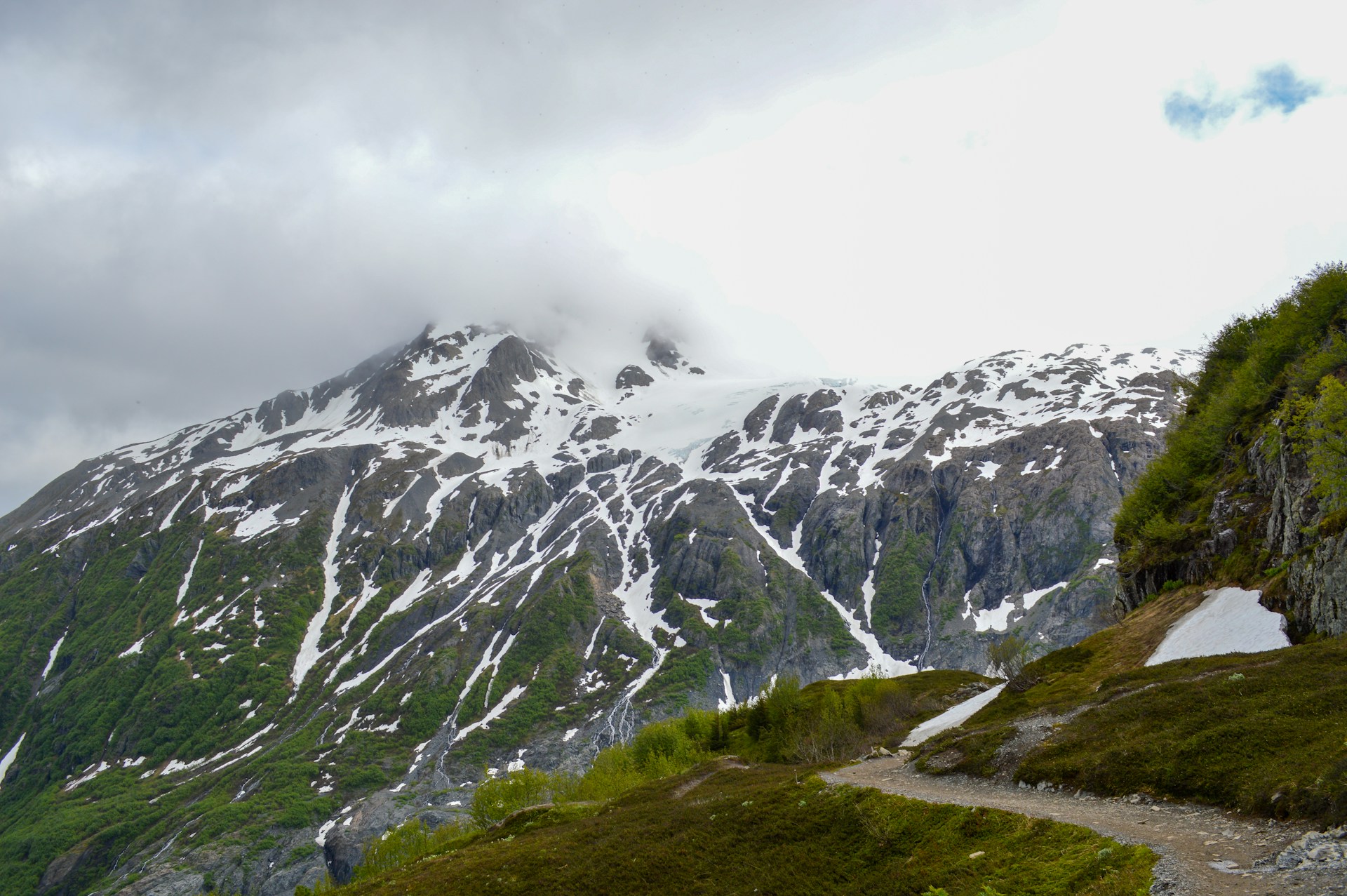
Kenai Fjords National Park
Kenai Fjords National Park, located on the Kenai Peninsula in south-central Alaska, is a stunning testament to the power of ice and the sea. Encompassing over 669,000 acres, the park is dominated by the Harding Icefield, one of the largest ice fields in the United States, which feeds nearly 40 glaciers flowing out to the sea. This dramatic landscape of ice, ocean, and rugged mountains offers visitors a glimpse into a world where the forces of nature continue to shape the land. The park's most accessible glacier, Exit Glacier, provides an up-close experience with a dynamic glacial environment. Trails leading up to and around the glacier offer educational insights into glacial retreat and the landscape's transformation over time, making it a poignant symbol of climate change. For a more expansive view, the Harding Icefield Trail offers a challenging hike with breathtaking vistas of the icefield, a vast expanse of snow and ice that seems otherworldly. Kenai Fjords is also renowned for its rich marine ecosystems. The park's fjords, created by glaciers cutting deep valleys below sea level, are now filled by the ocean, creating a unique environment for marine life. Boat tours of the fjords offer spectacular views of tidewater glaciers calving into the sea and provide opportunities to see a diverse array of wildlife, including whales, sea otters, seals, and seabirds. The park's rugged coastline, dotted with islands and rocky outcrops, is a haven for these species and a prime spot for wildlife viewing. Kayaking in the fjords offers an intimate way to explore the park's coastal landscapes and marine wildlife. Paddling amidst the icebergs and along the remote shorelines provides a sense of adventure and connection with the natural world. For those looking to experience the park's wilderness, backcountry camping is available, offering a chance to immerse oneself in the serene beauty of this Alaskan paradise. Kenai Fjords National Park also holds cultural significance, with archaeological sites that tell the story of the Native Alaskan peoples who have inhabited this region for thousands of years. The park's landscape is not only a natural wonder but also a cultural heritage site that reflects the human history intertwined with this rugged environment. Kenai Fjords National Park is a place of profound natural beauty and ecological importance, offering visitors the opportunity to witness the dynamic interplay between ice, land, and sea. It stands as a reminder of the natural forces that shape our planet and the need to preserve these wild places for future generations.
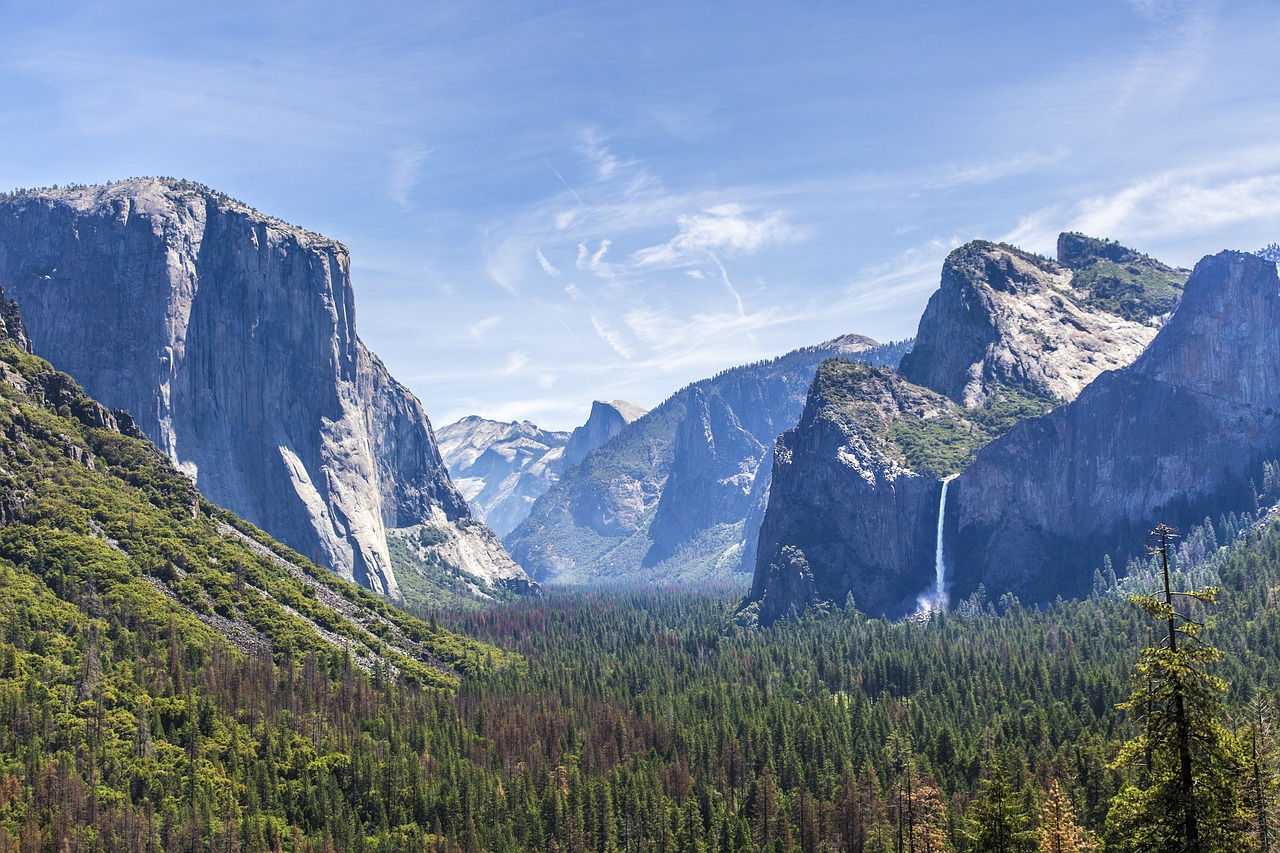
Kings Canyon National Park
Kings Canyon National Park, located in the southern Sierra Nevada in California, is a landscape of immense grandeur and natural beauty. Adjacent to Sequoia National Park, Kings Canyon offers a complementary yet distinct experience, with its deep valleys, towering mountains, and ancient groves of giant sequoias. The park covers an area of over 461,000 acres, featuring diverse ecosystems that range from rugged foothills to alpine peaks. The park's namesake, Kings Canyon, is one of the deepest canyons in the United States, with dramatic cliffs and the powerful Kings River flowing through its depths. This glacially carved valley showcases the raw power of nature's forces, offering breathtaking vistas and a sense of awe-inspiring scale. The canyon's rugged terrain and remote wilderness provide a haven for backpackers and hikers seeking solitude and adventure. Among the park's natural treasures are the giant sequoias, the largest trees on Earth by volume. The Grant Grove area of the park is home to the General Grant Tree, the world's second-largest sequoia, which has been designated as the Nation's Christmas Tree. Walking among these ancient giants, some of which are over 3,000 years old, provides a profound connection to the natural world and a tangible sense of the passage of time. Kings Canyon National Park also offers a wealth of recreational opportunities, from scenic drives such as the Kings Canyon Scenic Byway, which plunges into the heart of the canyon, to over 800 miles of hiking trails that traverse diverse landscapes. The park's backcountry, accessible only by foot or horseback, is a pristine wilderness area that offers unparalleled opportunities for exploration and discovery. The park's high country is a landscape of alpine lakes, meadows, and peaks, including portions of the John Muir Trail and the Pacific Crest Trail, which offer some of the most spectacular hiking in the Sierra Nevada. This area provides habitat for a wide variety of wildlife, including mule deer, black bears, mountain lions, and a diverse array of bird species, making it a fantastic destination for wildlife observation and photography. Kings Canyon National Park, with its majestic landscapes, ancient sequoias, and deep wilderness, stands as a testament to the beauty and diversity of the natural world. It invites visitors to explore its wonders, challenge themselves on its trails, and find solace and inspiration in its vast, untouched landscapes.

Kobuk Valley National Park
Kobuk Valley National Park, located in northwestern Alaska above the Arctic Circle, is one of the most remote and least visited national parks in the United States. Spanning over 1.7 million acres, this extraordinary park is characterized by its vast landscapes of sand dunes, caribou migration paths, and the meandering Kobuk River. The park's isolation and the absence of roads or trails into the area mean that access is typically achieved by air, adding to the sense of adventure and untouched wilderness that defines Kobuk Valley. One of the park's most stunning features is the Great Kobuk Sand Dunes, often referred to as the "Arctic Desert." These expansive dunes, some reaching heights of up to 100 feet, create a surreal landscape that seems out of place in the Arctic environment. Formed over thousands of years by the grinding action of glaciers and the carrying power of wind and water, the dunes offer a unique and striking landscape for exploration and photography. Kobuk Valley is also renowned for its annual spectacle of the caribou migration. Each year, over half a million caribou from the Western Arctic Caribou Herd traverse the park's valleys and dunes, traveling ancient paths in one of the largest land mammal migrations on Earth. This event provides an unparalleled opportunity for wildlife observation and underscores the park's significance as a critical habitat for these majestic animals. The park's rich cultural history is evident in the archaeological sites that dot the landscape, revealing evidence of human occupation dating back over 9,000 years. Indigenous peoples have utilized the Kobuk River Valley for generations, depending on its resources for survival and transportation. Today, the park continues to be a place of cultural significance and subsistence for local communities. Recreational opportunities in Kobuk Valley National Park are as vast as the landscape itself. Visitors can engage in backcountry camping, hiking on the sand dunes, boating and fishing on the Kobuk River, and wildlife photography. The park's extreme northern location also offers the chance to experience phenomena such as the midnight sun in the summer and the aurora borealis in the winter, adding to the park's allure for those seeking unique natural experiences. Kobuk Valley National Park is a place of profound natural beauty and solitude, offering a glimpse into a wild and pristine Arctic landscape. It stands as a testament to the power of nature and the importance of preserving these remote wilderness areas for future generations to explore and appreciate.
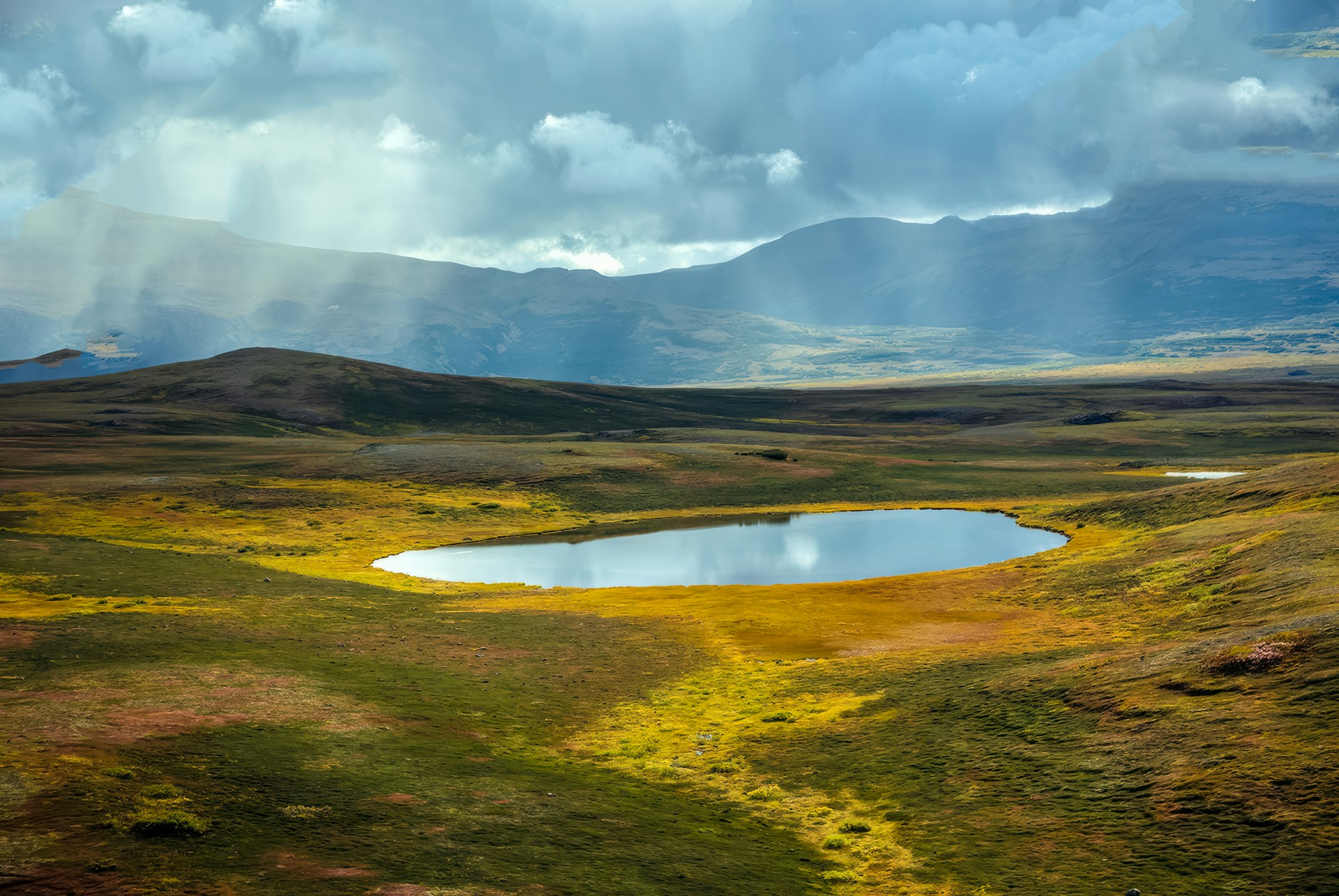
Lake Clark National Park
Lake Clark National Park and Preserve, located in Southwest Alaska, is a stunning mosaic of turquoise lakes, rugged mountains, steaming volcanoes, and diverse wildlife. Encompassing over 4 million acres, this remote and relatively untouched wilderness offers an authentic Alaskan experience for those who venture into its vast landscapes. The park is accessible only by boat or small aircraft, adding to its allure as one of the most secluded and pristine national parks in the United States. At the heart of the park lies Lake Clark itself, a shimmering body of water surrounded by mountains that provide a breathtaking backdrop. The lake is a focal point for visitors, offering opportunities for kayaking, fishing, and bear watching. The park's diverse ecosystems range from coastal rainforests to alpine tundra, supporting an abundance of wildlife, including brown and black bears, moose, wolves, and a rich variety of bird species. One of the park's most notable features is its volcanic activity, with two active volcanoes, Mount Iliamna and Mount Redoubt, dominating the landscape. These towering peaks are a reminder of the powerful natural forces at work in the region. The park's geothermal activity also creates hot springs, providing unique natural soaking opportunities amidst the rugged wilderness. Lake Clark National Park and Preserve is a haven for outdoor enthusiasts, offering unparalleled opportunities for adventure, including hiking, backcountry camping, and wildlife photography. The park's trail-less wilderness challenges visitors to explore its beauty on their own terms, whether by traversing its vast landscapes, fishing in its pristine waters, or observing its wildlife in their natural habitats. The cultural heritage of Lake Clark is as rich as its natural beauty, with the area being home to the Dena'ina Athabascan people for thousands of years. The park's archaeological sites and cultural landscapes offer insights into the indigenous history and traditions that have shaped the region. Visitors can learn about the Dena'ina way of life and their deep connection to the land through various educational programs and cultural sites within the park. Lake Clark National Park and Preserve stands as a testament to the wild and untouched beauty of Alaska. It invites visitors to immerse themselves in its breathtaking landscapes, experience the solitude and tranquility of its remote wilderness, and gain a deeper appreciation for the natural and cultural heritage of this extraordinary region.
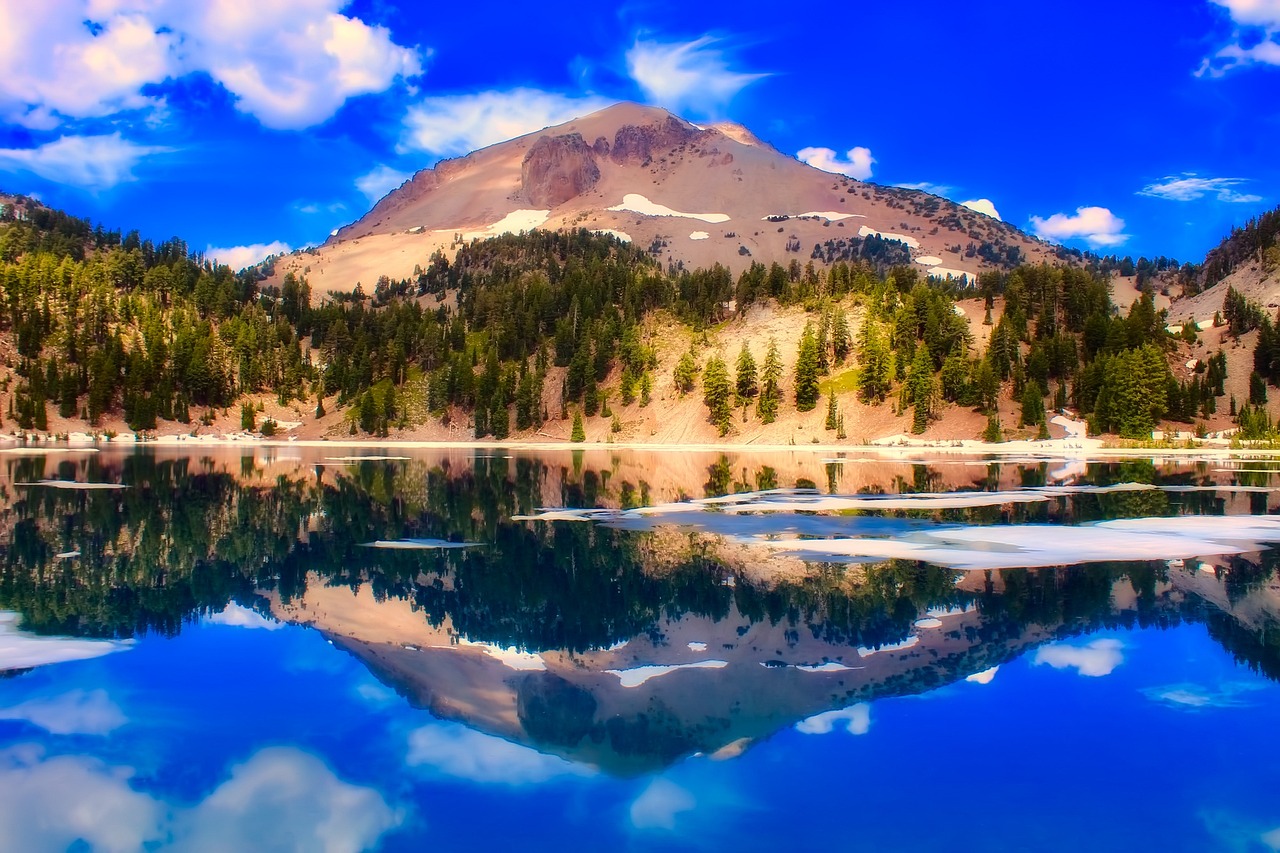
Lassen Volcanic National Park
Lassen Volcanic National Park, nestled in the northern reaches of California, is a captivating landscape shaped by the fiery power of volcanoes. Spanning over 106,000 acres, this park is home to Lassen Peak, one of the largest plug dome volcanoes in the world and the southernmost volcano in the Cascade Range. The park's unique geological features, including fumaroles, boiling springs, and bubbling mud pots, offer visitors a vivid glimpse into the Earth's volcanic and geothermal activity. The park's diverse ecosystems range from dense forests of pine and fir to stark volcanic landscapes and stunning mountain meadows bursting with wildflowers. This variety of habitats supports a wide array of wildlife, including black bears, mountain lions, deer, and numerous bird species, making it a haven for nature enthusiasts and wildlife photographers. One of the park's most iconic features is the hydrothermal areas, such as Bumpass Hell, which is the largest in the park and easily accessible to visitors. Boardwalks and trails lead through these steaming landscapes, allowing visitors to safely explore and learn about the powerful geothermal forces at work beneath the Earth's surface. Lassen Volcanic National Park offers a wealth of recreational opportunities, from hiking and backpacking on its extensive network of trails to snowshoeing and cross-country skiing in the winter months. The park's trails range from easy walks through lush meadows to strenuous hikes up Lassen Peak, offering breathtaking panoramic views of the surrounding landscape. The park's clear mountain lakes and streams provide idyllic settings for fishing, kayaking, and swimming, adding to the array of activities available to visitors. Camping is also a popular way to experience the park, with several campgrounds offering the chance to immerse oneself in the natural beauty and tranquility of the area. Lassen Volcanic National Park's combination of volcanic landscapes, diverse ecosystems, and recreational opportunities makes it a unique and cherished part of the national park system. It invites visitors to explore its wonders, learn about the dynamic processes that shape our planet, and find solace and inspiration in its natural beauty.
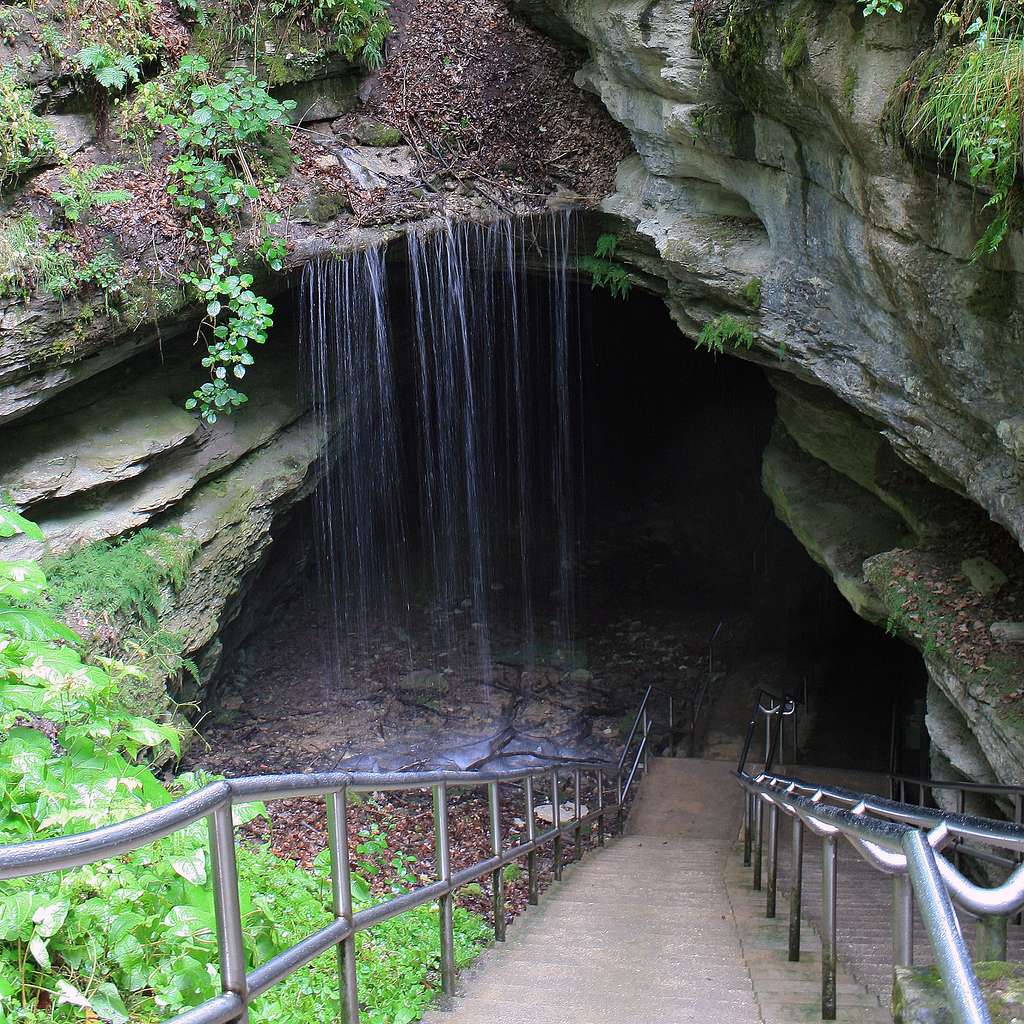
Mammoth Cave National Park
Mammoth Cave National Park, nestled in the rolling hills of south-central Kentucky, is renowned for housing the world's longest cave system, with more than 400 miles of surveyed passageways. This underground marvel showcases a vast array of intricate limestone formations, vast chambers, and complex labyrinths. Above ground, the park spans over 52,830 acres, offering a diverse landscape of deep river valleys, dense hardwood forests, and a rich array of flora and fauna. The Green River traverses the park, enhancing its scenic beauty and contributing to the cave system's growth by carving out subterranean passages. The park's surface is a sanctuary for wildlife, including several bat species, deer, and numerous bird species, making it a vital area for biodiversity. Mammoth Cave National Park's unique geological features, its extensive cave system, and the rich cultural history of human interaction with the caves, from early Native American explorers to modern-day scientists and tourists, make it a fascinating study of nature's wonder and human perseverance.
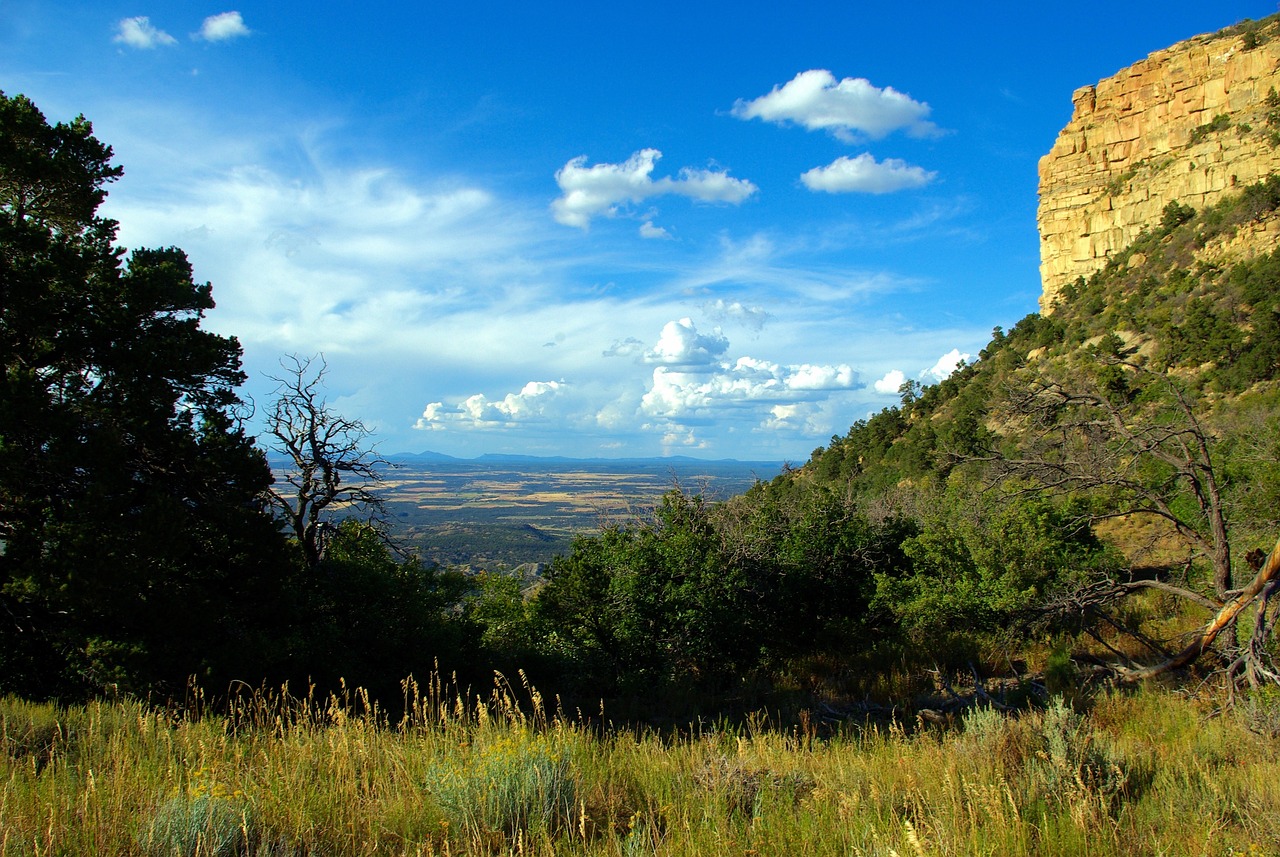
Mesa Verde National Park
Located in the southwestern corner of Colorado, Mesa Verde National Park offers a spectacular look into the lives of the Ancestral Pueblo people who made this area their home for over 700 years, from 600 to 1300 CE. The park protects nearly 5,000 known archeological sites, including 600 cliff dwellings, which are some of the most notable and best-preserved in the United States. These ancient structures, built into alcoves and perched on cliff faces, showcase a remarkable architectural, cultural, and historical legacy. Beyond its rich cultural heritage, Mesa Verde encompasses a diverse landscape of high plateaus, steep canyons, and panoramic vistas that stretch over 52,485 acres. The park's elevation ranges from about 6,000 to over 8,500 feet, supporting a variety of plant and animal life adapted to its semi-arid environment. From the juniper and piñon pine forests to the sweeping views from Park Point, the highest point in the park, Mesa Verde National Park offers a unique combination of natural beauty and historical depth.
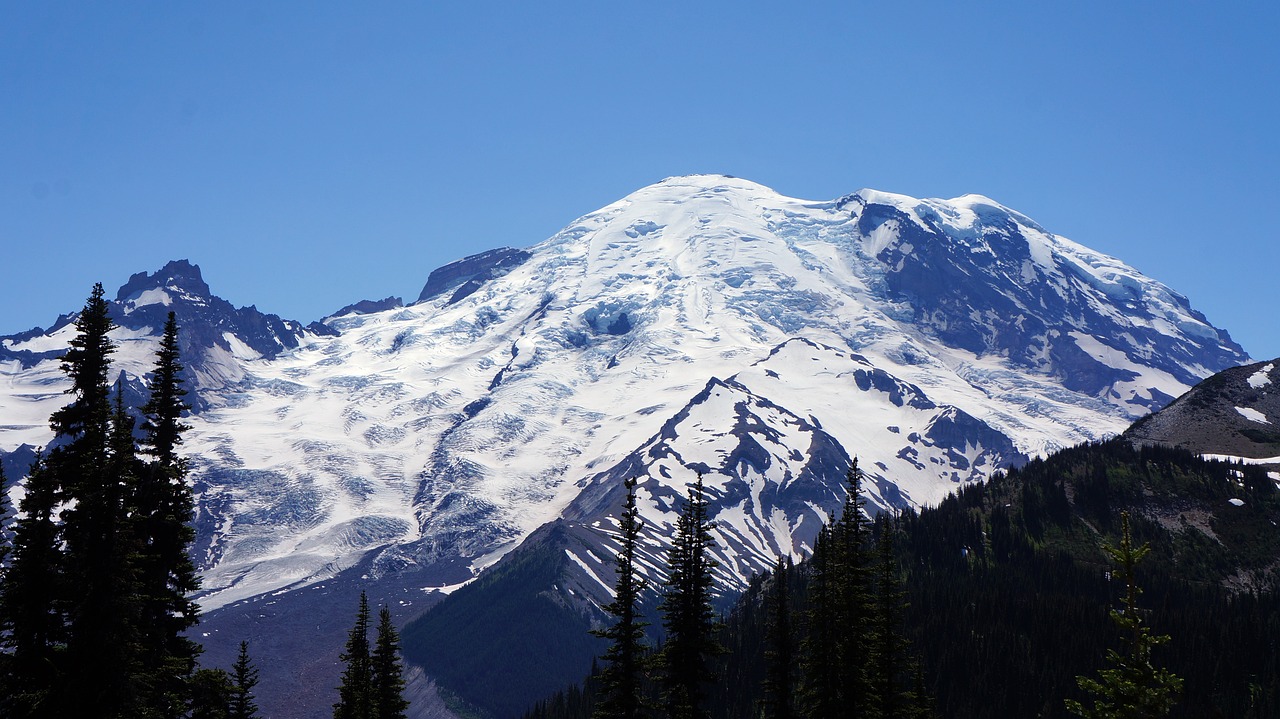
Mount Rainier National Park
Encompassing 236,381 acres in the state of Washington, Mount Rainier National Park is a natural wonderland centered around Mount Rainier itself, a massive stratovolcano standing at 14,411 feet - the highest peak in the Cascade Range. This iconic mountain is not only one of the most prominent peaks in the United States but also one of the most glaciated, featuring expansive glaciers and snowfields that feed into several rivers. The park's diverse ecosystems range from lush old-growth forests at lower elevations to subalpine wildflower meadows and the stark, otherworldly landscapes of the mountain's upper slopes. With over 260 miles of maintained trails, visitors can explore the park's beauty through hiking, climbing, and camping amidst its breathtaking scenery. The park is a haven for wildlife, including black bears, mountain goats, and a diverse array of bird species, making it a critical habitat for conservation. Mount Rainier National Park's dramatic landscape, ecological diversity, and recreational opportunities make it a year-round destination for adventurers and nature lovers alike.

North Cascades National Park
This complex encompasses two units of the National Park itself as well as the Ross Lake and Lake Chelan National Recreation Areas. The highly glaciated mountains are spectacular examples of Cascade geology. Popular hiking and climbing areas include Cascade Pass, Mount Shuksan, Mount Triumph, and Eldorado Peak.
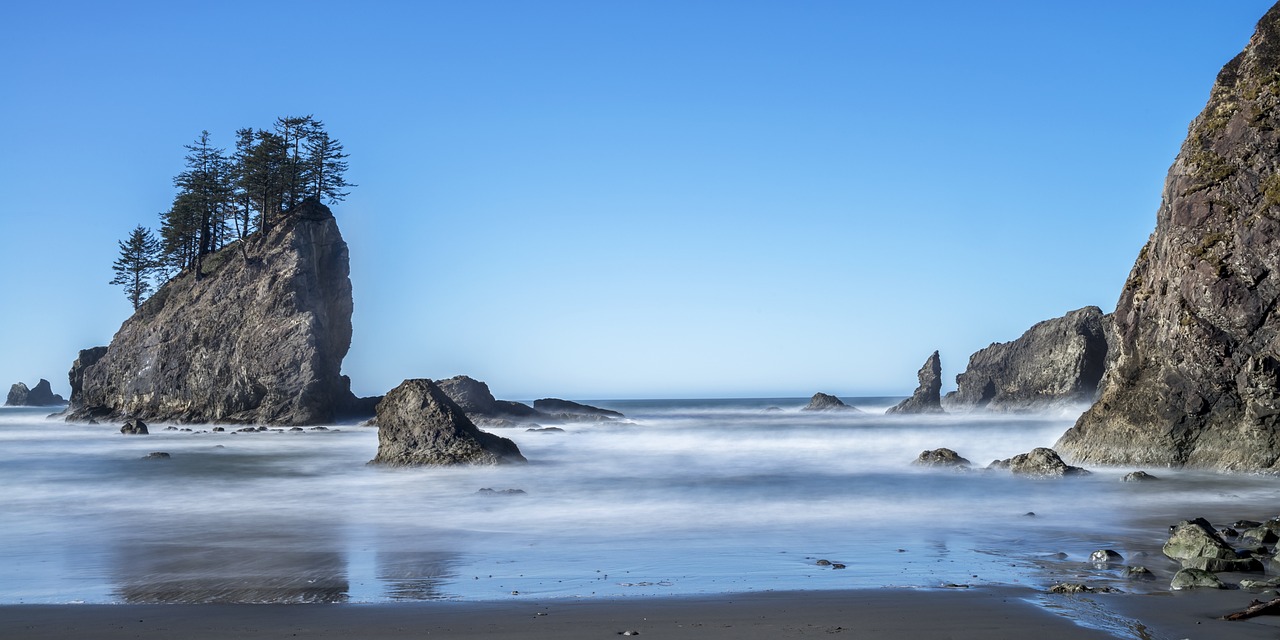
Olympic National Park
Olympic National Park, located in the northwest corner of Washington State, spans nearly one million acres, offering a stunning mosaic of ecosystems from its rugged Pacific coastline to the rainforest-clad valleys and the high peaks of the Olympic Mountains. Central to the park is Mount Olympus, rising to 7,965 feet, with its glaciers and snowfields feeding the rivers that carve through the landscape. The park's diverse environments support an incredible variety of flora and fauna, including the lush, moss-draped forests of the Hoh Rainforest, one of the largest temperate rainforests in the U.S. Olympic National Park's coastline features unspoiled beaches, tide pools, and sea stacks, providing critical habitat for marine life and seabirds. The park's isolation and diversity of habitats have led to high levels of endemism among plants and animals, making it a unique place for biodiversity. With its combination of natural beauty and ecological complexity, Olympic National Park offers visitors a chance to explore and appreciate a truly wild and pristine corner of the United States.
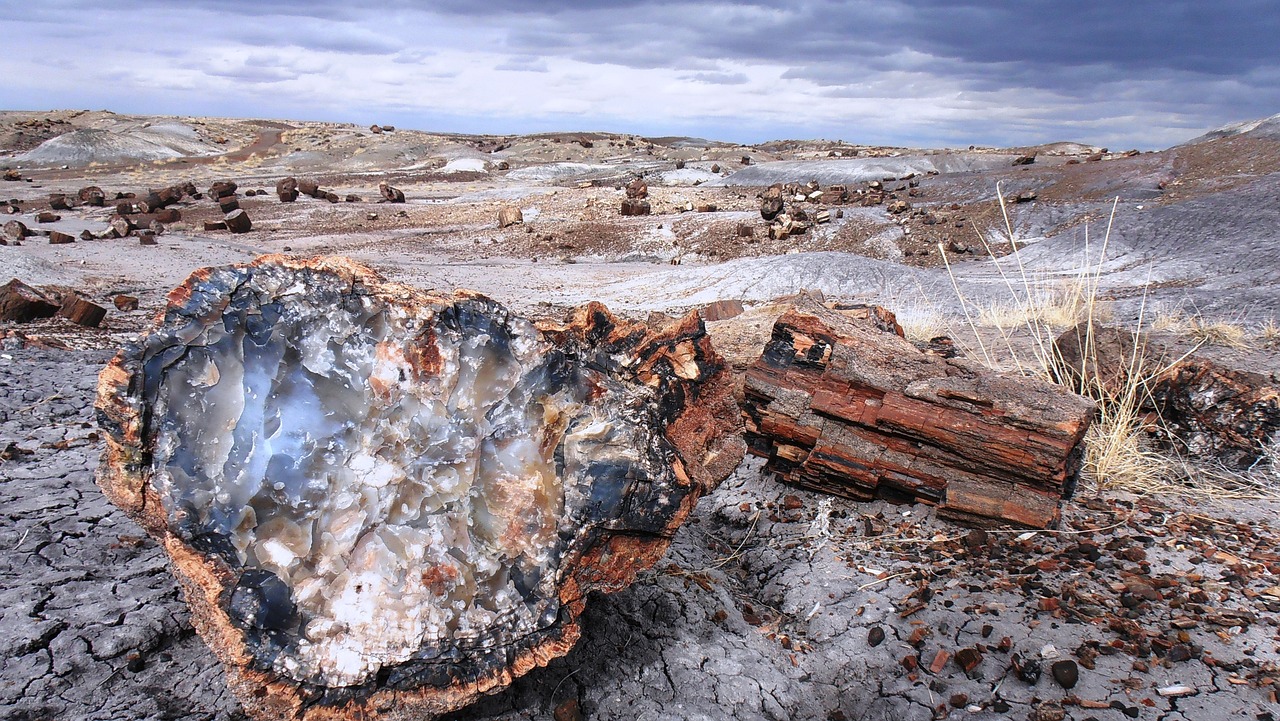
Petrified Forest National Park
Petrified Forest National Park, located in northeastern Arizona, is a mesmerizing landscape known for its vast deposits of petrified wood that date back over 200 million years. Spanning about 221,390 acres, the park sits within the colorful badlands of the Painted Desert, where layers of sediment and bentonite clay glow in shades of red, orange, and pink under the sun. This otherworldly terrain not only preserves one of the largest and most colorful concentrations of petrified wood in the world but also hosts an array of ancient fossils, revealing dinosaurs and other prehistoric life that once roamed this area. Beyond its paleontological significance, the park is rich in human history, with over 800 archeological and historical sites that include petroglyphs carved by early inhabitants. The landscape of Petrified Forest National Park is a testament to the forces of nature and time, offering visitors a unique window into the Earth's geological and evolutionary past.
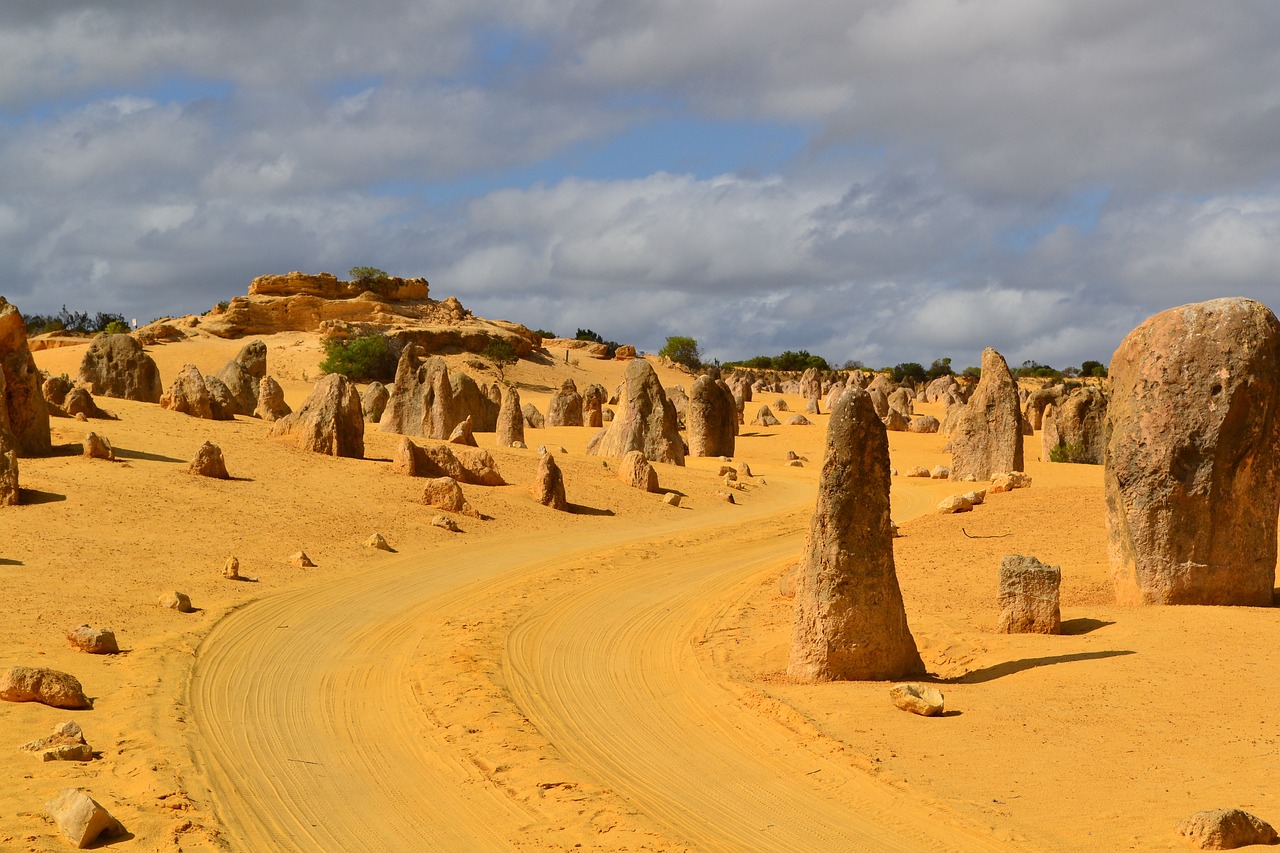
Pinnacles National Park
Pinnacles National Park, located in central California, is a geological wonder formed by the erosion of an ancient volcano. The park is named for its distinctive rock formations, towering spires, and massive monoliths that rise abruptly from the surrounding landscape. Covering over 26,000 acres, Pinnacles is split by the San Andreas Fault into an east and a west division, each offering unique vistas and experiences. The park's complex geology provides critical habitat for diverse plant and animal species, including the California condor, one of the world's rarest birds, which has been reintroduced to the area. Pinnacles National Park is a paradise for climbers, hikers, and nature lovers, with over 30 miles of trails that navigate through talus caves and along steep canyons. The park's Mediterranean climate supports a range of ecosystems, from oak woodlands to chaparral, grasslands, and riparian corridors, making it a vibrant place for biodiversity and outdoor adventure.
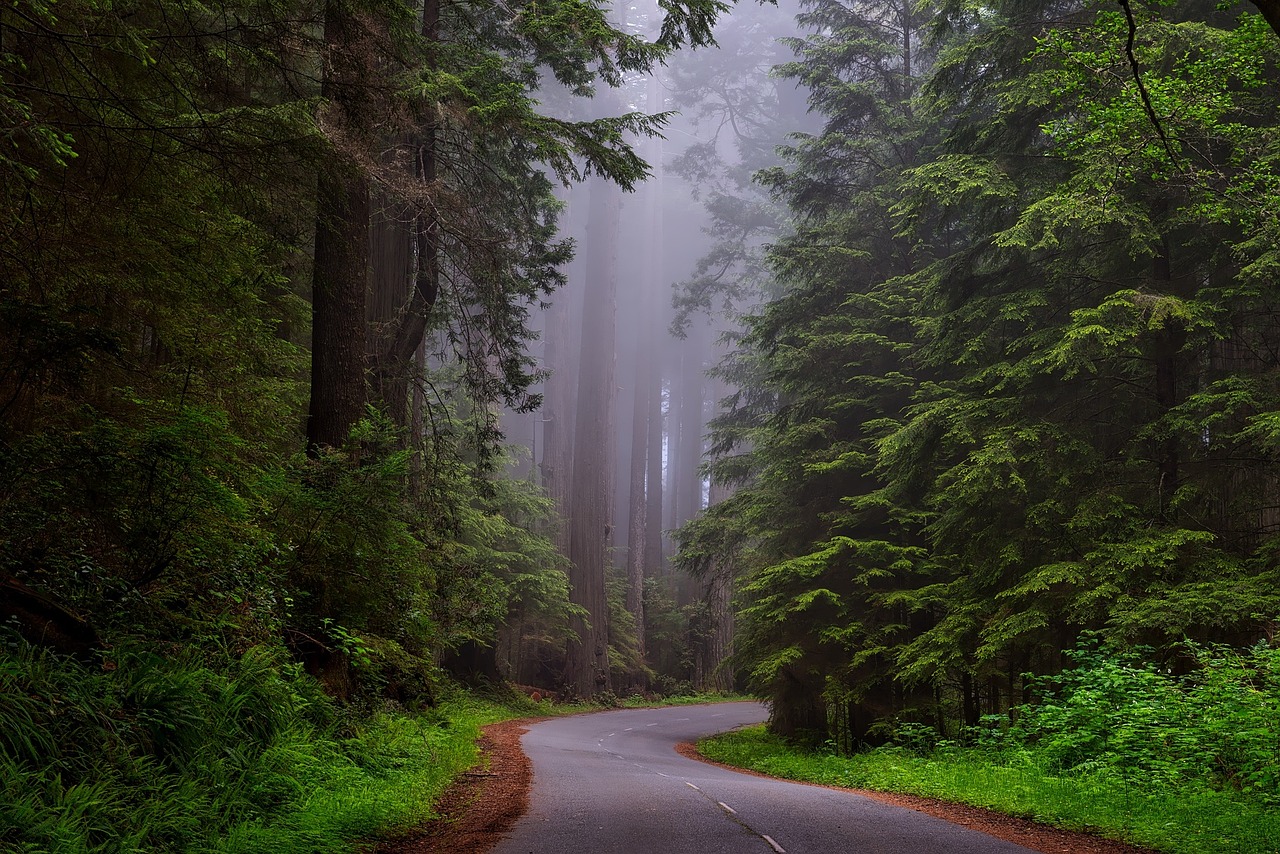
Redwood National Park
Spanning over 139,000 acres along the coast of northern California, Redwood National Park is renowned for its primeval forest of coast redwoods, some of the tallest and oldest trees on Earth. This park, together with several state parks, forms a protected region that preserves not only the majestic Sequoia sempervirens but also vast prairies, oak woodlands, wild riverways, and nearly 40 miles of pristine coastline. Within its boundaries lie diverse ecosystems, including fog-laden forests, which play a crucial role in sustaining the redwoods' micro-environments, and river systems that support salmon and trout populations. The park's unique landscape offers a sanctuary for a wide range of fauna, including the endangered northern spotted owl, Steller's sea lions, and the elusive coastal black bear. Redwood National Park's combination of sea, stream, and forest is not only a haven for biodiversity but also a living museum that showcases the resilience and beauty of nature's giants.

Rocky Mountain National Park
Nestled in the heart of the Colorado Rockies, Rocky Mountain National Park spans over 265,000 acres of unspoiled wilderness. This park is a showcase of the majestic Rocky Mountains, with elevations ranging from 7,860 feet to the towering peak of Longs Peak at 14,259 feet. It offers a diverse landscape of alpine meadows, deep forests, and over 300 pristine lakes and ponds. The park's ecosystem supports a variety of wildlife, including elk, bighorn sheep, and moose, making it a prime location for wildlife viewing. With more than 350 miles of trails, visitors can embark on scenic hikes, challenging climbs, or peaceful walks through wildflower-filled meadows. The Continental Divide runs through the park, creating distinct climate zones and offering breathtaking panoramic views. Rocky Mountain National Park is a haven for outdoor enthusiasts and nature lovers seeking the grandeur and serenity of the Colorado high country.
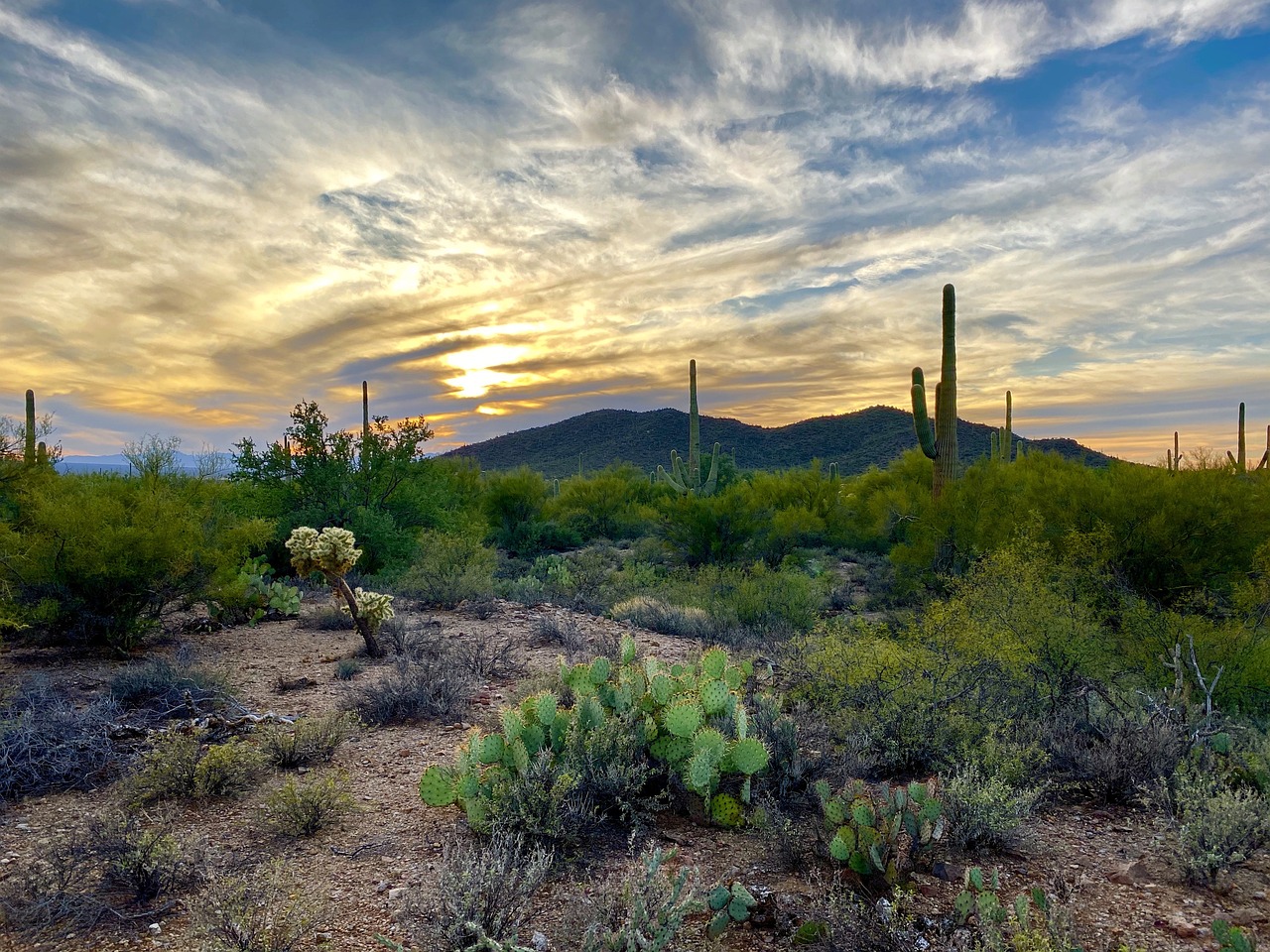
Saguaro National Park
Divided into two districts flanking Tucson, Arizona, Saguaro National Park is a stunning expanse that celebrates the life and resilience of the American Southwest. Covering over 91,000 acres, the park is named for the iconic Saguaro cactus, which dots the landscape in towering, majestic formations. These cacti, unique to the Sonoran Desert, can live for over 200 years and grow as tall as 60 feet. The park's terrain varies from cactus-filled valleys to rugged mountains, with elevations reaching up to 8,482 feet at Mica Mountain. Saguaro National Park is not only a sanctuary for these giant cacti but also home to hundreds of wildlife species, including the Gila woodpecker, desert tortoise, and javelina. The park offers a glimpse into the rich cultural history of the region, with ancient petroglyphs etched into rocks by the Hohokam people. With scenic drives, over 165 miles of hiking trails, and the beauty of the desert landscape, Saguaro National Park is a testament to the beauty and diversity of the American desert.
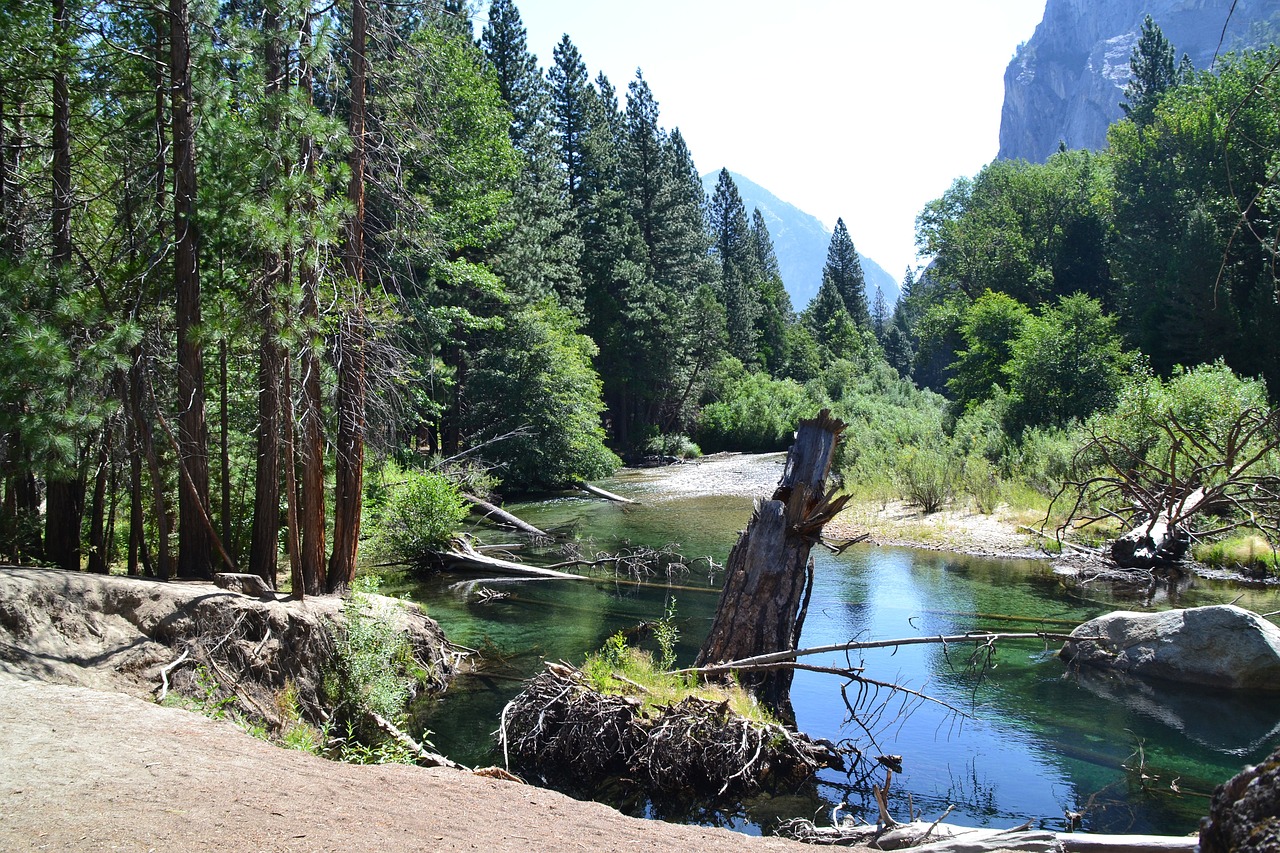
Sequoia National Park
Established in 1890 and located in the southern Sierra Nevada mountains of California, Sequoia National Park is a land of giants. This park, covering over 404,000 acres, is famed for its colossal Sequoia trees, including the **General Sherman Tree**, the largest tree on Earth by volume. These ancient trees, some of which are over 3,000 years old, stand as towering monuments to nature's splendor. Sequoia National Park's landscape is a dramatic mix of rugged foothills, deep canyons, and towering mountains, including Mount Whitney, the highest peak in the contiguous United States. The park is also home to a rich diversity of animal life, including black bears, mountain lions, and bighorn sheep. With over 800 miles of trails, visitors can explore crystal-clear mountain lakes, meander through lush meadows, and trek to high alpine peaks. Sequoia National Park, together with its neighbor Kings Canyon National Park, offers a sanctuary of extraordinary natural beauty and a refuge for those seeking adventure and tranquility among the giants of the Earth.
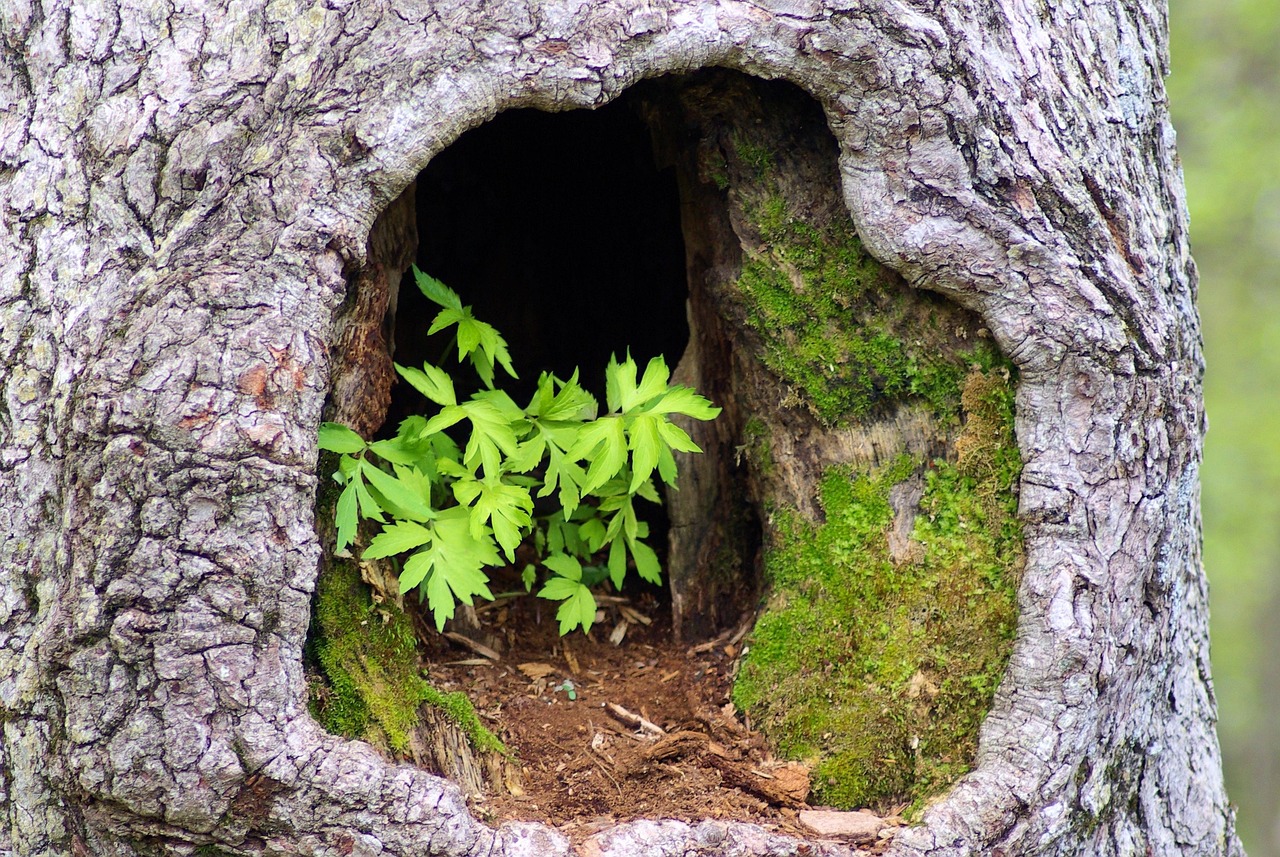
Shenandoah National Park
Nestled in the Blue Ridge Mountains of Virginia, Shenandoah National Park is a sanctuary of natural beauty and tranquility. Stretching over 200,000 acres, this park is home to the majestic Skyline Drive, a 105-mile scenic byway that offers breathtaking views of the Appalachian Highlands. Shenandoah boasts over 500 miles of trails, including a portion of the famous Appalachian Trail, inviting visitors to immerse themselves in its diverse landscapes. The park's elevation ranges from about 550 feet to 4,051 feet at Hawksbill Mountain, the highest point in Shenandoah, offering a unique mix of habitats. These varied elevations foster distinct ecosystems, from the rolling hills of the Piedmont to the dense forests of the Blue Ridge Mountains. Shenandoah is renowned for its spectacular display of fall foliage, where the forests come alive with vibrant hues of red, orange, and yellow. Shenandoah's flora is rich and diverse, featuring over 1,300 species of plants, including wildflowers, ferns, and towering hardwoods. The park's fauna is equally impressive, with over 200 species of birds, black bears, deer, and numerous other mammals and reptiles making their home in this natural haven. The park also preserves a slice of American history, with over 100 historic structures that tell the story of Shenandoah's past, from the indigenous peoples to the European settlers and the creation of the park during the Great Depression. Shenandoah National Park is a place of natural wonders and historical depth, offering serene landscapes, challenging hikes, and panoramic views that connect visitors with nature and the rich tapestry of America's natural heritage.

Theodore Roosevelt National Park
Theodore Roosevelt National Park, located in the rugged badlands of western North Dakota, stands as a living monument to the 26th President of the United States, Theodore Roosevelt, who famously engaged in ranching in the area and developed a deep appreciation for the wilderness that would later influence his conservation efforts. Spanning over 70,000 acres, the park is divided into three units: the North Unit, the South Unit, and the Elkhorn Ranch Unit, each offering unique landscapes and experiences. This park is characterized by its dramatic landscapes of layered rock formations, steep canyons, and rolling grasslands, providing a stark and beautiful contrast. The Little Missouri River winds its way through the park, shaping the land and supporting a diverse ecosystem. The Painted Canyon, with its striking colors and textures, offers breathtaking views and is a highlight for many visitors. Theodore Roosevelt National Park is home to a variety of wildlife, including bison, wild horses, elk, and prairie dogs, offering visitors the chance to witness these animals in their natural habitat. The park's flora is adapted to the challenging environment, with hardy grasses and shrubs dominating the landscape. The park's history is deeply intertwined with that of Theodore Roosevelt, who credited his time in the badlands as the catalyst for his lifelong commitment to conservation. Visitors can explore the Maltese Cross Cabin, Roosevelt's first ranch home, and the Elkhorn Ranch site, where Roosevelt lived and worked, gaining insights into the life and legacy of this influential figure. With over 100 miles of trails, Theodore Roosevelt National Park invites exploration by foot, horseback, or car, offering scenic drives, including the 36-mile scenic loop in the South Unit and the 14-mile scenic drive in the North Unit. These drives and trails provide access to stunning vistas, abundant wildlife viewing opportunities, and a chance to experience the solitude and beauty that inspired one of America's greatest conservationists. Theodore Roosevelt National Park serves not only as a tribute to its namesake but also as a sanctuary for the unique beauty and wildlife of the North Dakota badlands, offering visitors a profound connection to the natural world and a deeper understanding of the importance of preserving such landscapes for future generations.
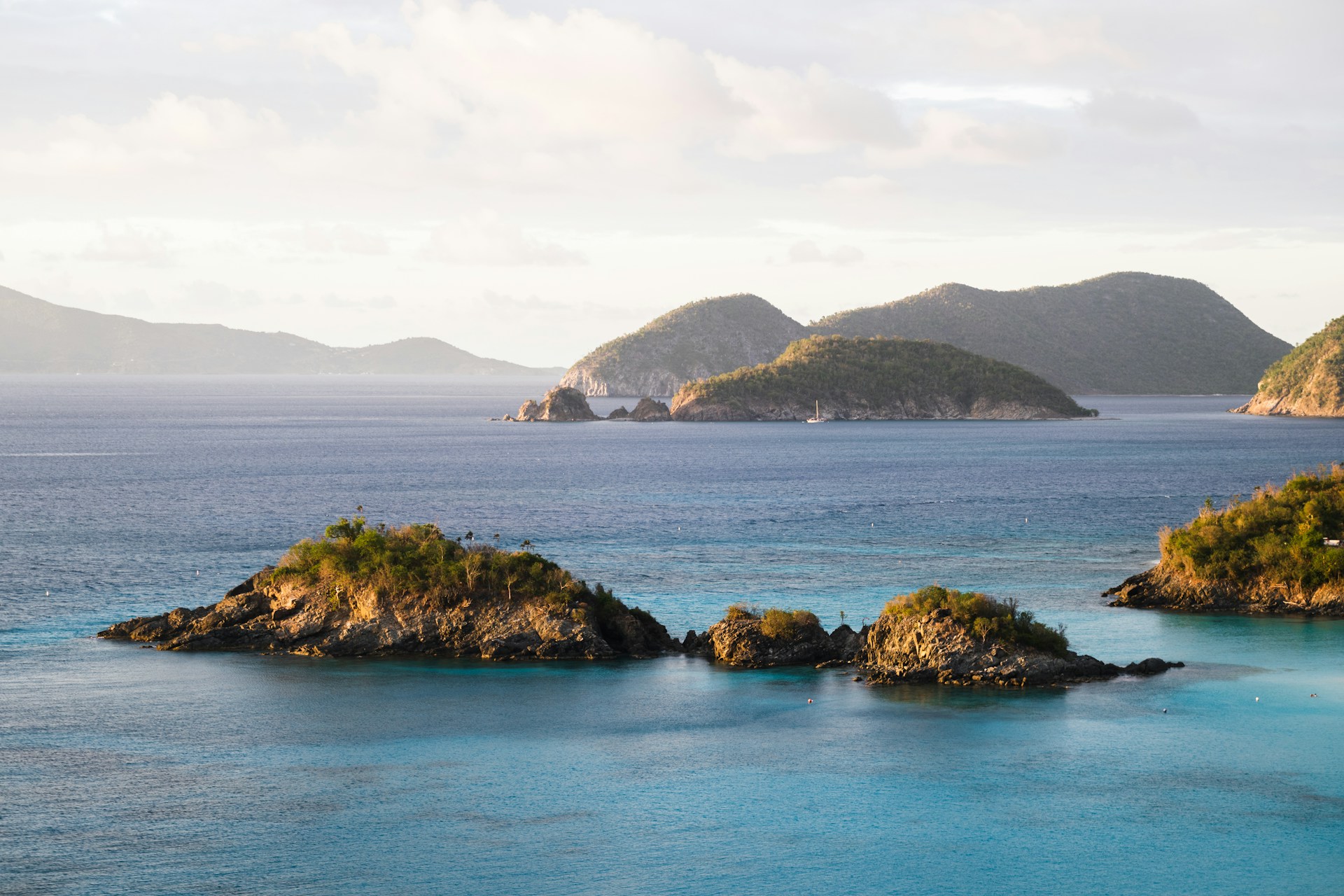
Virgin Islands National Park
Virgin Islands National Park, encompassing over half of St. John Island and nearly all of Hassel Island in the U.S. Virgin Islands, is a tropical marvel distinguished by its pristine beaches, coral reefs, and historical ruins. The park is renowned for the breathtaking Trunk Bay, often listed among the world's most beautiful beaches, and its underwater snorkeling trail. The park's diverse ecosystems include lush mangrove forests, seagrass beds, and tropical rainforests, which are home to a rich variety of marine life, such as sea turtles and colorful fish, as well as terrestrial fauna, including the unique Virgin Islands boa and various tropical bird species. Virgin Islands National Park also protects significant archaeological and historical sites, from ancient petroglyphs carved by the Taino people to the remnants of colonial sugar plantations, offering a profound insight into the area's complex cultural heritage. This unique blend of natural beauty and historical depth provides visitors with an unparalleled opportunity to explore the rich biodiversity and storied past of the Caribbean.
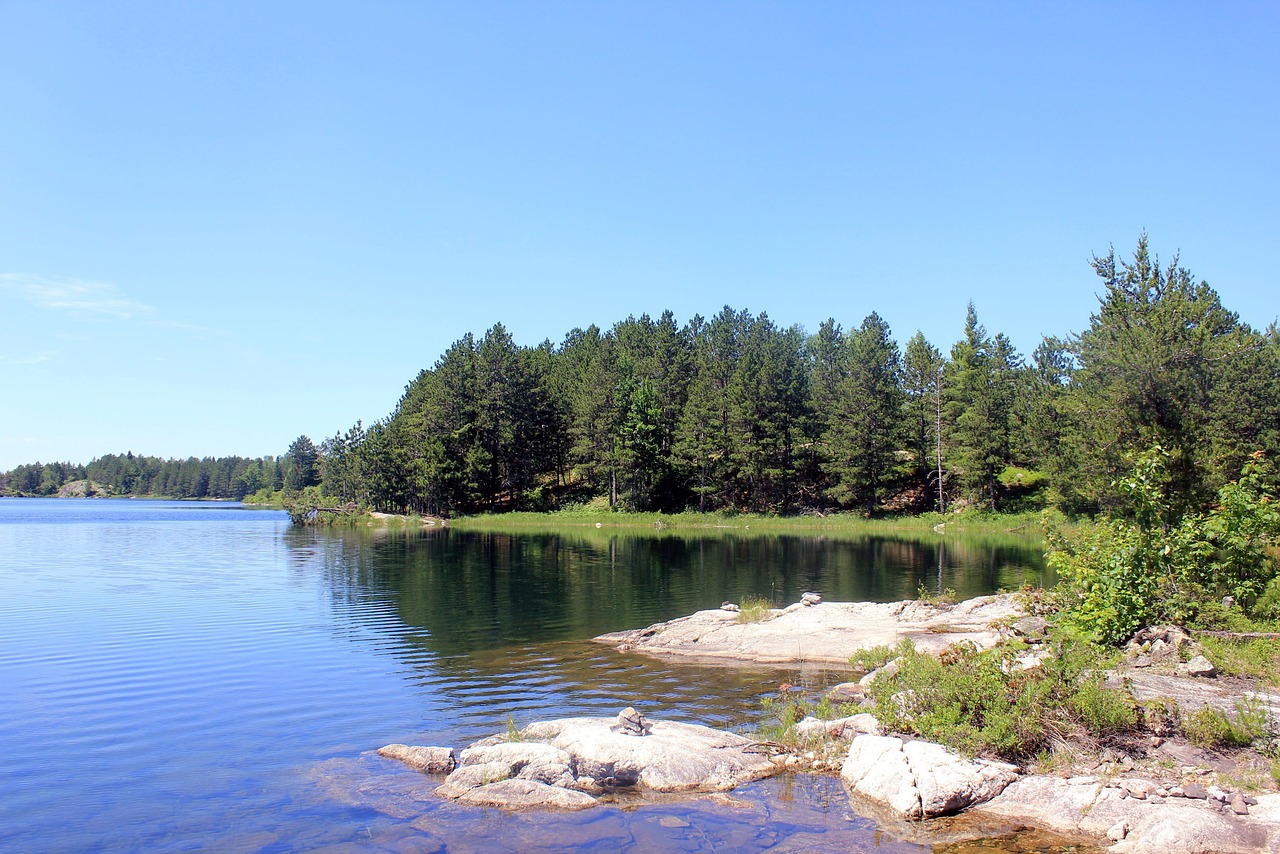
Voyageurs National Park
Situated in northern Minnesota, near the Canadian border, Voyageurs National Park is a water-centric paradise characterized by its vast network of lakes and waterways. Encompassing over 340 square miles of water, the park invites adventurers to explore its beauty by boat, kayak, or canoe. Voyageurs is a mosaic of dense forests, wetlands, and rocky shores, providing habitat for wolves, moose, beavers, and bald eagles. The park's name pays homage to the French-Canadian fur traders, known as "voyageurs," who navigated these waters in birch bark canoes centuries ago. In winter, the frozen landscapes transform into a wonderland for snowmobiling, cross-country skiing, and ice fishing. The park's dark skies also offer some of the best **northern lights** viewing in the United States.

Wind Cave National Park
Located in the southern Black Hills of South Dakota, Wind Cave National Park is renowned for one of the world's longest and most complex caves. Wind Cave is notable for its remarkable display of boxwork, a rare cave formation composed of thin calcite fins resembling honeycombs. Above ground, the park's mixed-grass prairie and ponderosa pine forests are a sanctuary for wildlife, including bison, elk, pronghorns, and the endangered black-footed ferret. The park's surface is a blend of rolling prairie and hills, offering hiking trails that traverse this diverse landscape, providing a stark contrast to the hidden underground world below.

Wrangell-St Elias National Park
Wrangell-St. Elias, the largest national park in the United States, encompasses an area over 13 million acres, making it larger than Switzerland. This colossal park in eastern Alaska features some of the highest peaks in North America, including Mount St. Elias, and boasts an array of glaciers, rivers, and an active volcano, Mount Wrangell. The park's vast wilderness is largely untracked and offers unparalleled opportunities for backcountry adventures, such as hiking, mountaineering, and river rafting. Wrangell-St. Elias is a testament to the raw, untamed power of nature, with its dramatic landscapes that host a variety of wildlife, from Dall sheep and caribou to grizzly bears and eagles. The park also encompasses historical sites, including the abandoned mining towns that speak to the area's rich history of copper mining.
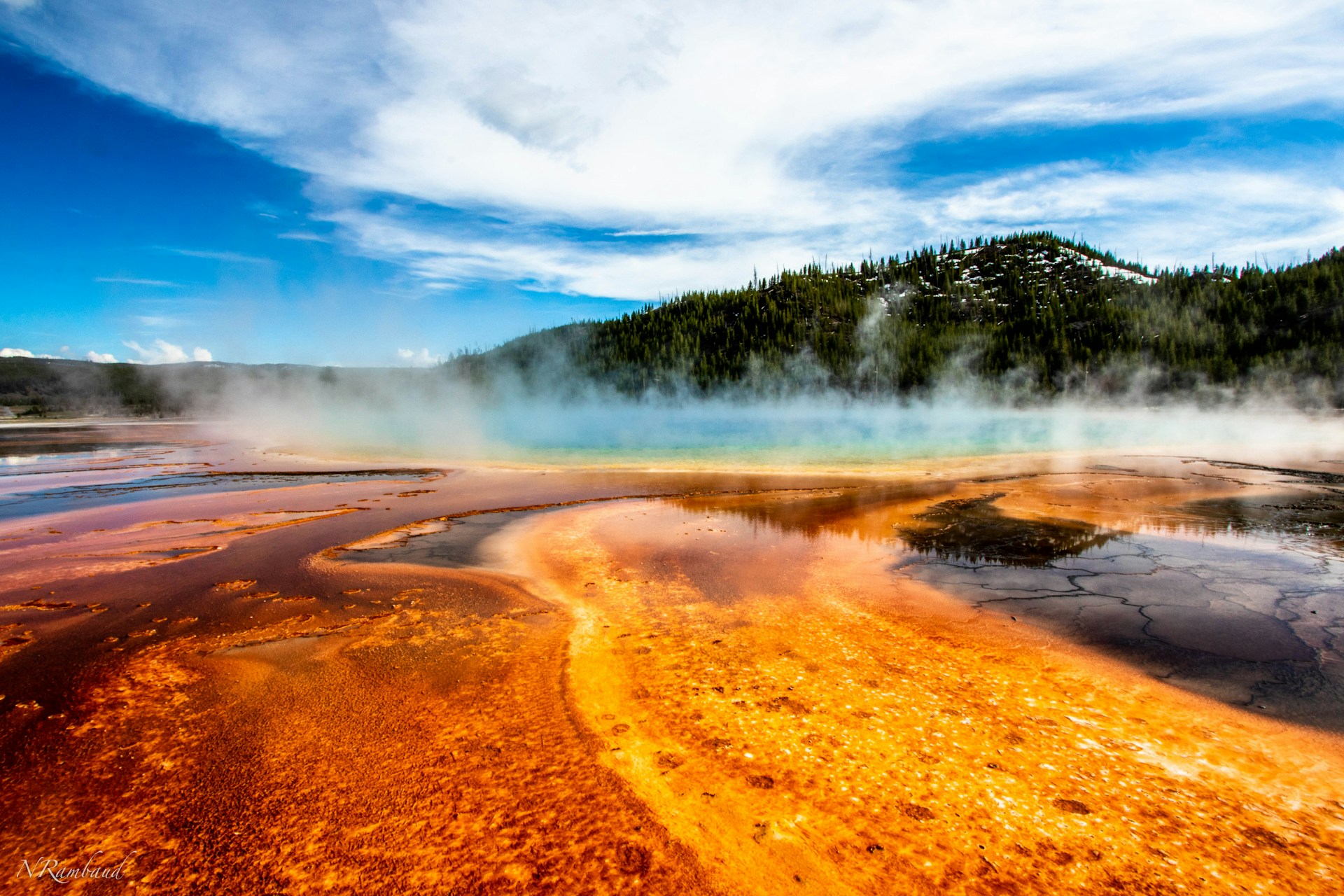
Yellowstone National Park
Yellowstone National Park, the first national park in the world, is a geological and ecological wonder that spans across Wyoming, Montana, and Idaho. Famous for its geothermal features, including the iconic **Old Faithful geyser** and the vibrant **Grand Prismatic Spring**, Yellowstone sits atop a volcanic hotspot. The park's rugged landscapes range from vast forests and rolling grasslands to steep canyons and thundering waterfalls. Yellowstone is home to an incredible variety of wildlife, such as bison, wolves, elk, and grizzly bears, making it one of the best wildlife viewing areas in North America. The park also protects numerous archaeological sites and historic buildings that tell the story of America's early conservation efforts. Yellowstone's vast natural beauty and complex ecosystem offer visitors a profound connection to the natural world.
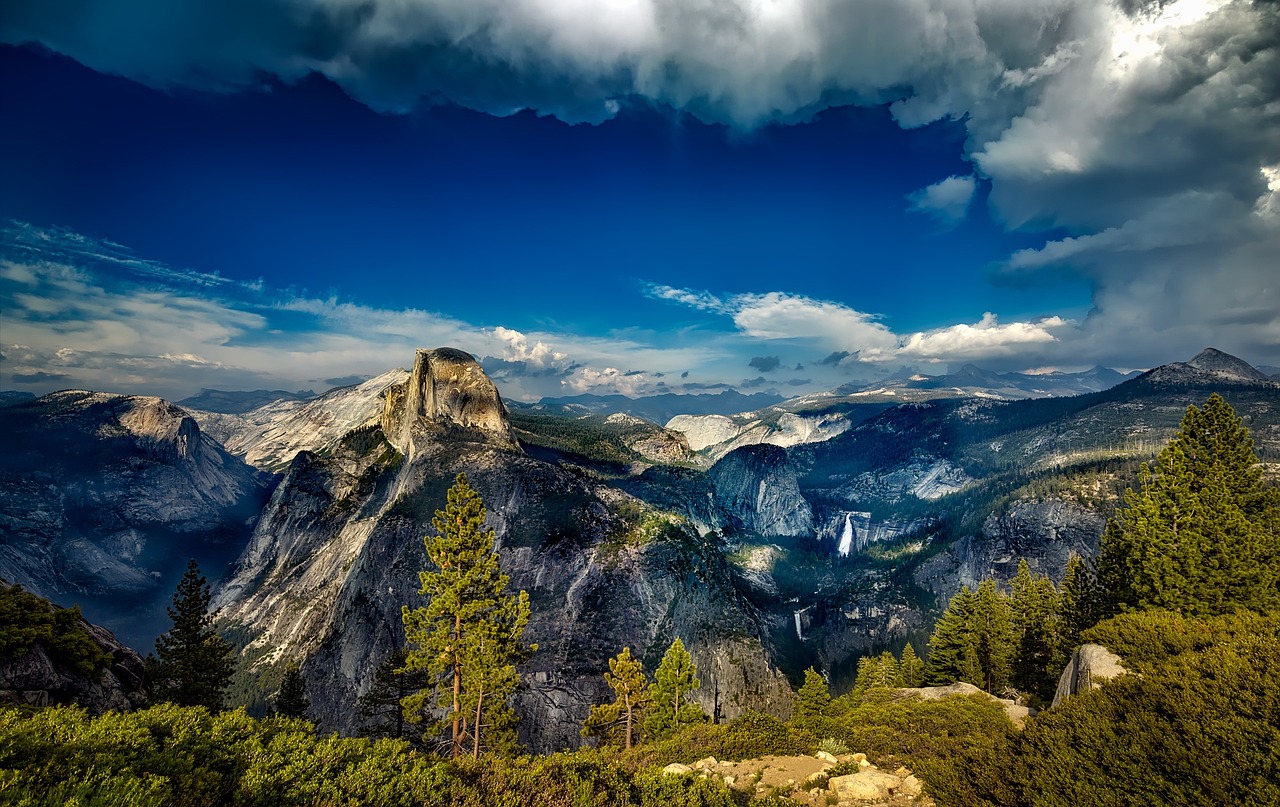
Yosemite National Park
Yosemite National Park, a UNESCO World Heritage site located in the Sierra Nevada mountains of California, is celebrated for its breathtaking granite cliffs, towering waterfalls, clear streams, and giant sequoia groves. The park's iconic landmarks include** Half Dome** and **El Capitan**, both popular challenges for climbers. Yosemite Valley, a masterpiece of nature's design, offers awe-inspiring views and serves as the heart of the park, with easy access to its famous features like **Yosemite Falls**, one of the tallest waterfalls in North America. The park's vast wilderness areas offer miles of hiking trails, ranging from easy walks to challenging backcountry adventures. Yosemite's diverse habitats support a wide range of wildlife, from black bears to mule deer and over 260 species of birds, making it a haven for nature lovers and outdoor enthusiasts.

Zion National Park
Zion National Park is a sanctuary of massive sandstone cliffs soaring into the sky, deep red canyons, and lush river valleys. Located in southwestern Utah, Zion is distinguished by its stunning rock formations and high plateaus, with the Virgin River running through the heart of the park. Hiking trails, such as the Narrows and Angel's Landing, offer adventurous paths through its dramatic landscapes, providing unforgettable experiences. The park's unique geography supports diverse ecosystems, from desert flora and fauna to riparian areas teeming with life. Zion's history is rich, with ancient petroglyphs and historic pioneer buildings offering glimpses into the past. Its natural beauty and cultural significance make Zion a place of reflection and exploration.
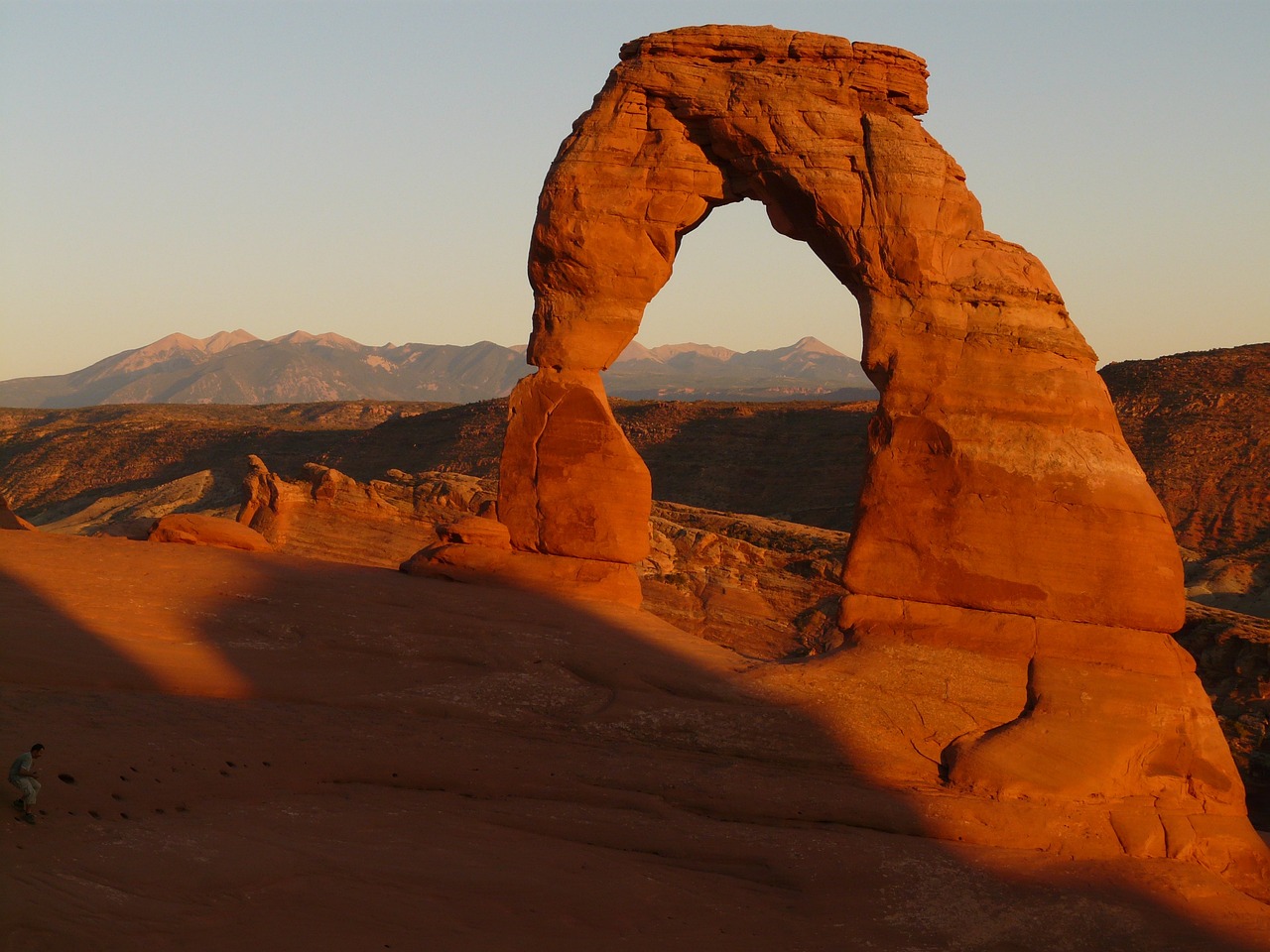
Gateway Arch National Park
Gateway Arch National Park, located in St. Louis, Missouri, is a symbol of the United States' westward expansion. The park is home to the iconic Gateway Arch, a 630-foot stainless steel monument that is the tallest arch in the world. Visitors can take a tram ride to the top of the arch for panoramic views of St. Louis and the Mississippi River. The park also includes the Old Courthouse, where the historic Dred Scott case was tried, and the Museum at the Gateway Arch, which chronicles the diverse stories of the people who shaped the westward expansion of the United States. The park's urban setting offers a unique blend of natural beauty, history, and architectural marvel, making it a poignant reminder of America's pioneering spirit.
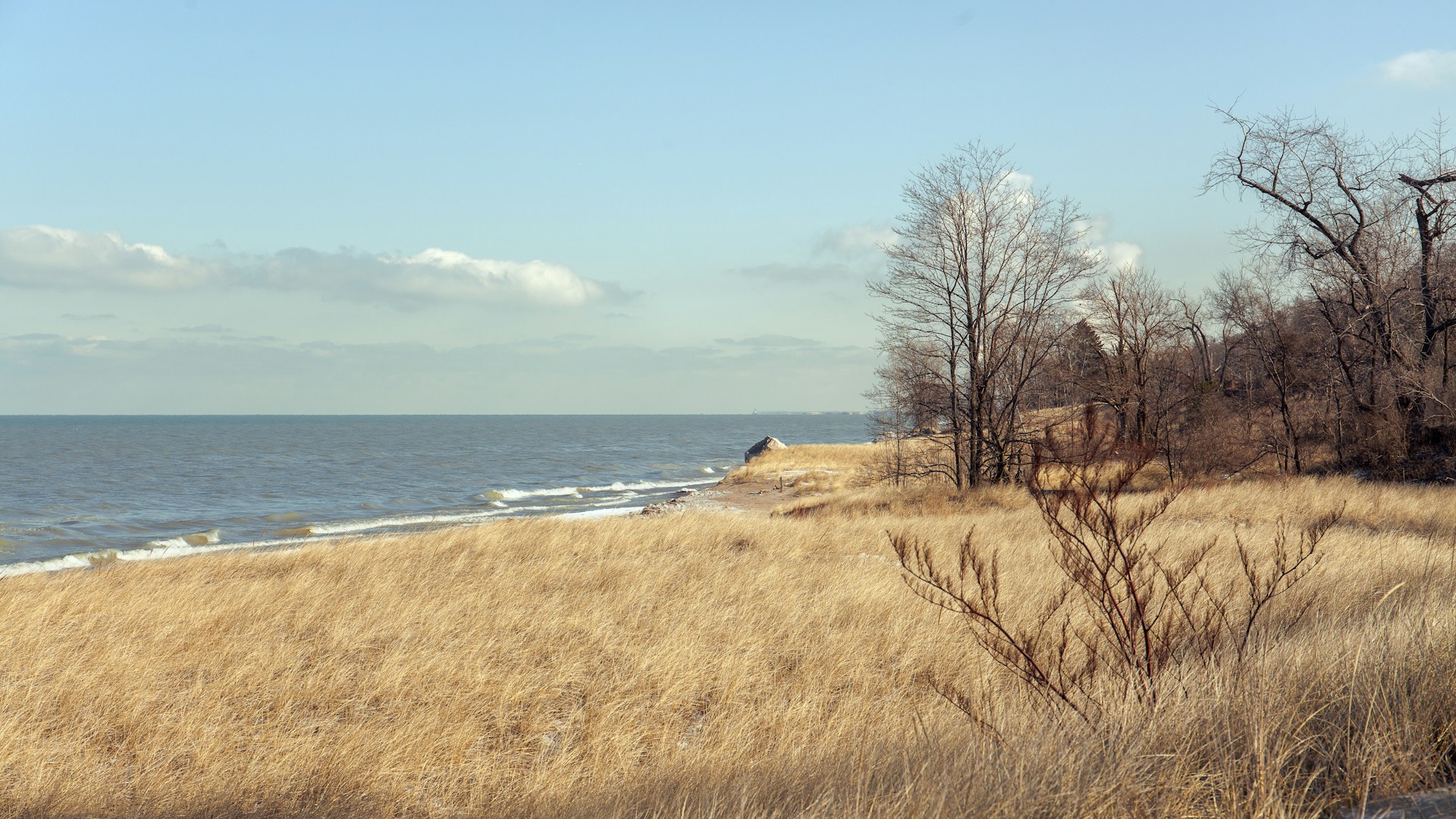
Indiana Dunes National Park
Indiana Dunes National Park, located on the southern shore of Lake Michigan, offers a unique landscape of dunes, beaches, wetlands, and forests. The park's 15,000 acres feature over 50 miles of trails through diverse habitats, including prairies, bogs, and the historic Hoosier Prairie. The shifting dunes, some rising nearly 200 feet above the lake, provide spectacular views and serve as a critical habitat for many species. The park's biodiversity is remarkable, with over 350 species of birds and numerous plants that are not found anywhere else in the state. Indiana Dunes is not only a place for recreation and relaxation but also a vital area for research and education on ecological conservation and the dynamic dune environment.
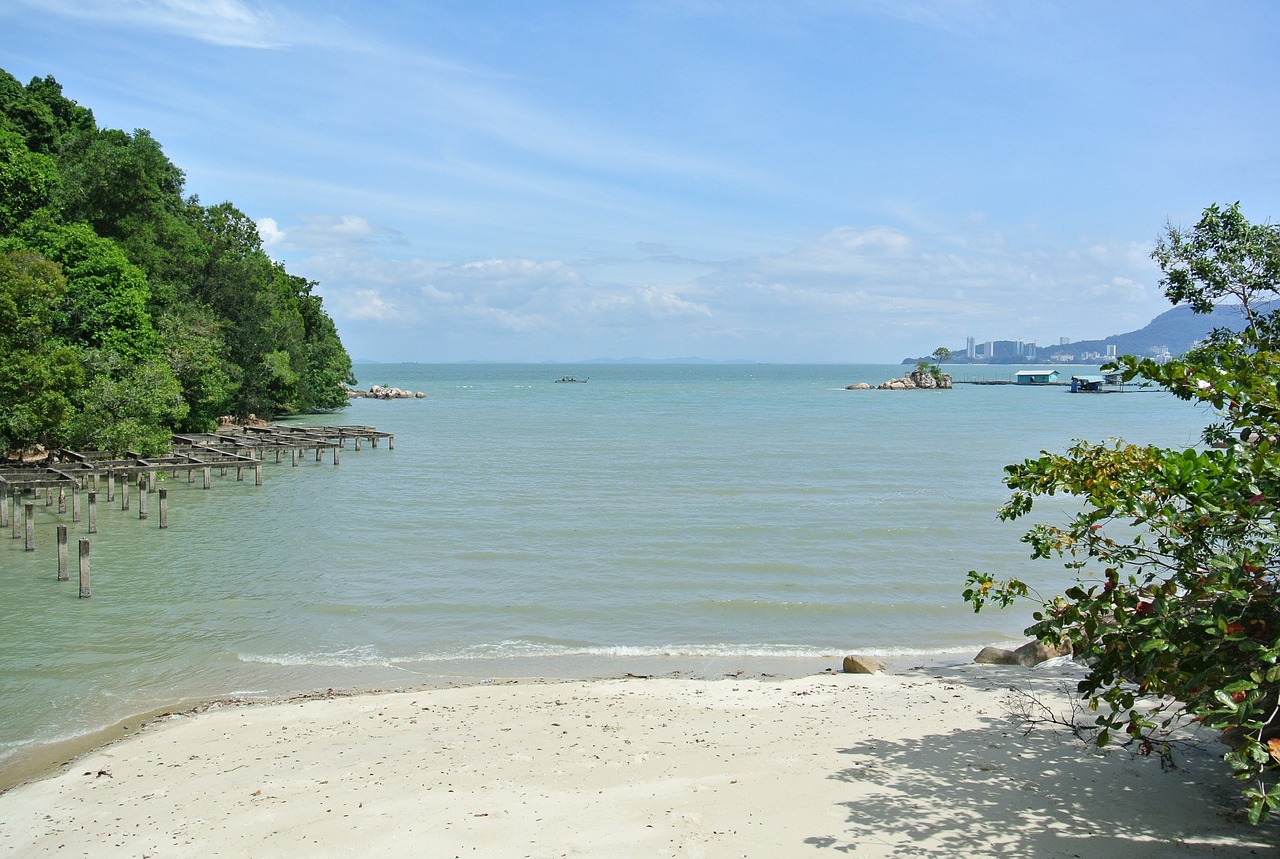
White Sands National Park
White Sands National Park, located in the Tularosa Basin of New Mexico, is the world's largest gypsum dune field, covering over 275 square miles of desert. The park's dazzling white dunes, formed from the crystalline mineral gypsum, create a surreal landscape that seems otherworldly. Visitors can explore the dunes on foot, sledding down the soft white sands, or driving the scenic Dunes Drive. The park is also a place of solitude and reflection, where the vast, open sky meets the stark, pure land. Despite the harsh desert environment, the park supports a variety of life, including unique species of plants and animals adapted to living in the gypsum dunes. White Sands National Park is a testament to the natural beauty and mystery of the American Southwest.
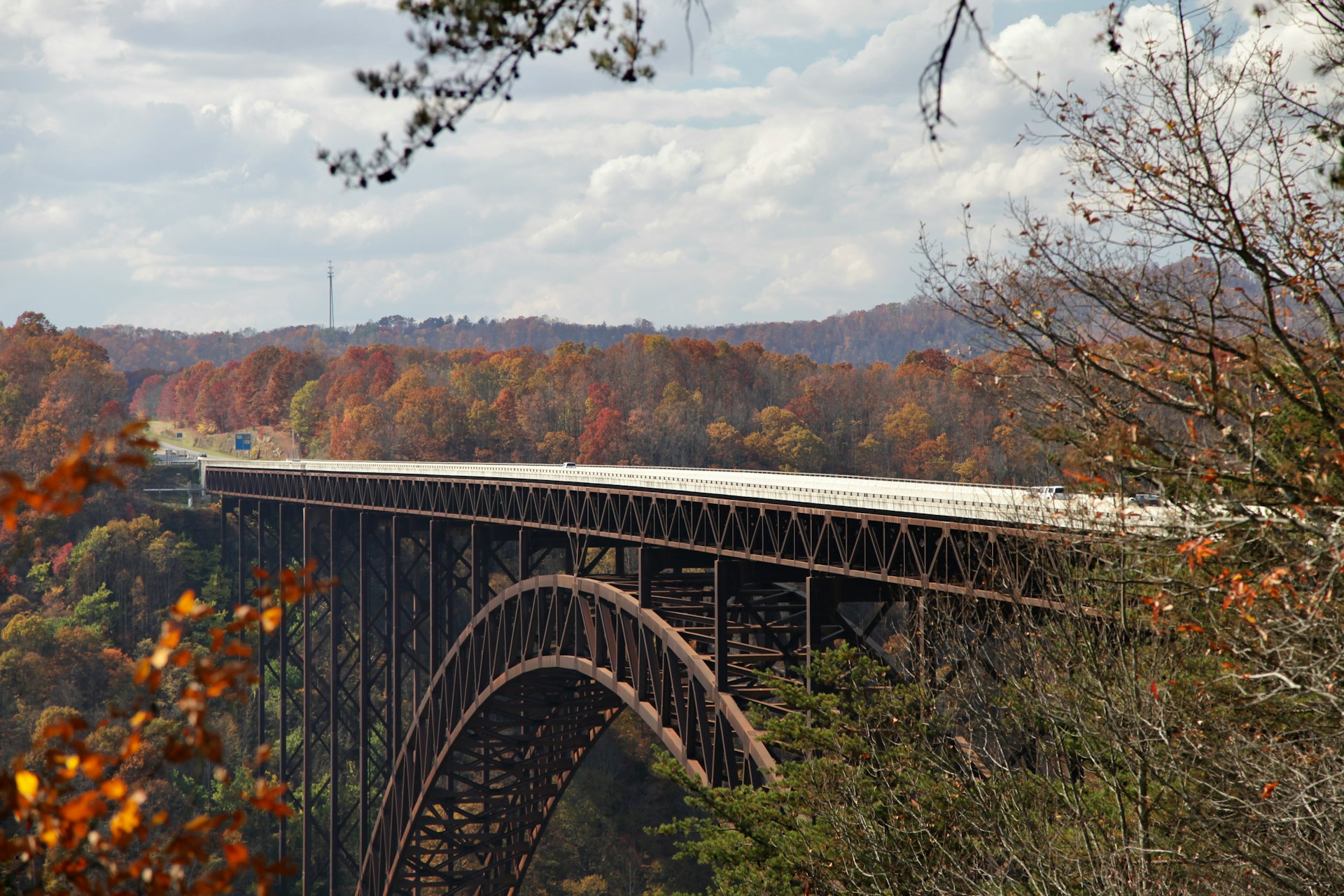
New River Gorge National Park
New River Gorge National Park and Preserve, the newest national park in the United States, showcases the deep canyon of the New River, one of the oldest rivers on the continent. The park encompasses over 70,000 acres of land along 53 miles of the New River, known for its whitewater rafting and spectacular scenery. The gorge itself, with its rugged and steep terrain, offers a playground for outdoor enthusiasts, with activities ranging from rock climbing and hiking to fishing and bird watching. The park's diverse ecosystems support an abundance of wildlife, and its lush forests display a spectacular array of colors in the fall. The New River Gorge Bridge, one of the longest steel span bridges in the world, provides a breathtaking view of the river below. The park's rich cultural history, from Native American settlements to coal mining towns, adds another layer of depth to this stunning natural landscape.